The Shanghai Travel Guide I Wish I'd Had
a collection of recommendations, favorites & reflections from a frequent visitor
Hello there! This is a recap of my trip to Shanghai in fall 2024…I wanted to be super detailed, so that ended up taking a healthy chunk of time 😂 but now I’m finally ready to share all-things-Shanghai over the next couple of weeks!
Firstly, some unsolicited background on my relationship with the city 👇
Growing up, my family and I spent 98% of our vacation time with extended family in China, always going back to Shanghai for at least some time — where both of my parents are from. This equated to a total of 6 visits (and counting, because I just know I’ll be back) that spanned my entire life so far: winter 2002; summers of 2006, 2010, 2015, 2019; and now the most recent one—fall 2024. Between the poor attitude of my younger self, the persistent language barrier that even 10 years worth of Chinese Sunday School classes couldn’t demolish completely, and the city of Shanghai’s ever constant growth and transformation, it was sad for me to realize that, for a place I’ve had the privilege of visiting so many times, I truly didn’t know it at all.
It wasn’t until recent years where I felt a compelling urge to rectify this, and I credit time for rounding me out. My younger self wanted to belong and fit in so badly that she didn’t want to spend too much thought on what made her unique. Now, “older and wiser” me has learned to love the person God created, like a potter working with clay (Isaiah 64:8). Looking back, the Lord used every trip to Shanghai to chip away at my hardened heart, allowing me to fall in love with parts of me that I didn’t know needed a little more love.
And while I’m still a work-in-progress, the journey is so sweet. It is crazy to think that in those early years I used to be a begrudging 5-year-old who missed American food so much so that her parents had to take her to a Pizza Hut franchise in Shanghai to assuage her. And now? I’m an adult in her late twenties, being affectionately dubbed “tour guide” by her family, choosing to wear the helm of responsibility that comes with planning the itinerary, and navigating an unfamiliar place with excitement, curiosity, and determination.
This time, I was on a mission to get to know this gigantic city of 上海 (shànghǎi), as intimately as possible within the limitations of two short weeks. And document the whole thing. Welcome to the product of that :)
**my Shanghai travel guide will include the Chinese characters (simplified, not traditional), the Chinese characters’ 拼音 (pīnyīn) phonetic pronunciation, and their English meaning, because one of my pet peeves is having 1-2 of these and not all three, then needing to spend time looking up the one that’s missing
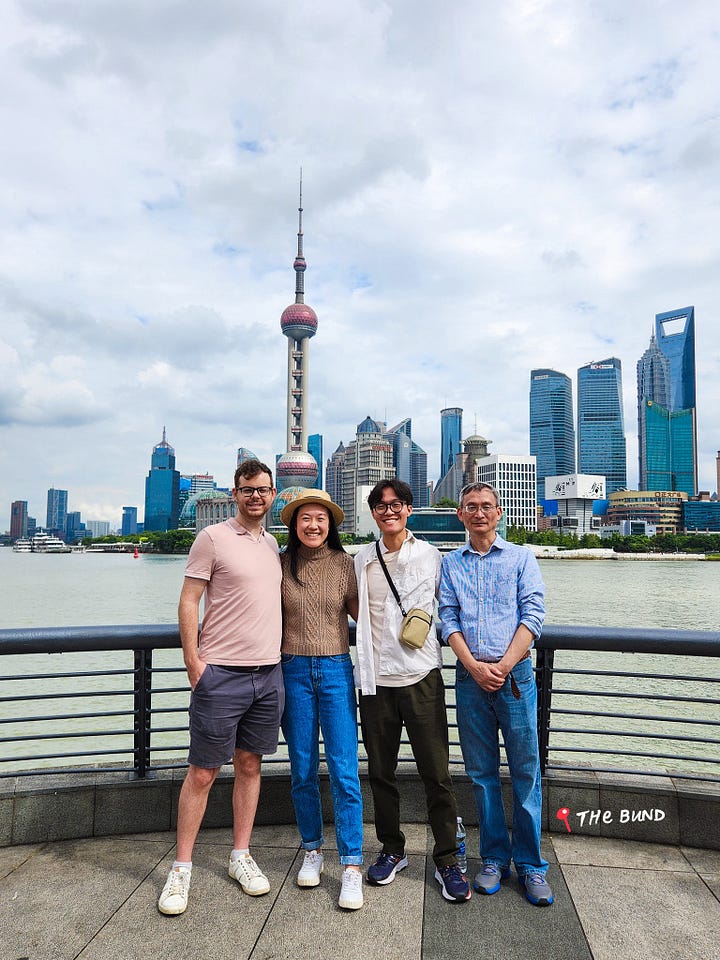

an intro to the city
Depending on where you are, you may see these other monikers for Shanghai sprinkled throughout the city. I didn’t realize Shanghai had so many other names, until the repeated exposure fueled my curiosity to look into them:
沪 (hù)—an official abbreviation for Shanghai, coming from 沪渎 (hù dú, "Harpoon Ditch"), meaning “the main conduit into the ocean.” You’ll see these on all of the motor vehicle license plates issued by the municipality.
申城 (shēn chéng)—an older name for Shanghai, comes from nobleman 春申君 (chūn’shēnjūn), who was a locally revered hero of the 3rd century BC state of Chu. This character will often be used for sports teams, newspapers, and you’ll see a garden in the Expo Center area using this character: 申园 (shēnyuán)
华亭 (huátíng)—an early name from the mid-Tang Dynasty (751 AD), where Huating County was established as the first county-level administration within modern-day Shanghai.
the travel guide
I had some fun drawing up a map to help you better visualize where things are. The city of Shanghai is naturally split by the Huangpu River (黄浦江, huángpǔ jiāng) into two areas, Pudong New District (浦东新区, pǔdōng xīnqū) and Puxi Area (浦西区, pǔxī qū), and these two areas are then further divided into districts (labeled below).
table of contents
there’s a built-in table of contents on the left side, but here’s a traditional one too, so you can skip to where you want to read:
PUDONG NEW DISTRICT // includes everything to the east of the Huangpu River: Lujiazui, China’s World Exposition area, very pretty parks, and Disneyland
YANGSI // detailing a specific neighborhood we went to for street food every morning
PUXI AREA // includes all the districts west of the Huangpu River 👇
HONGKOU DISTRICT // 1933 Old Millfun
PUTUO DISTRICT // Tian'an 1000 Trees, a couple of famous Shanghai temples
JING’AN DISTRICT // Jing’an Temple, a secret garden, and some pretty roads and iconic buildings
XUHUI DISTRICT // a church (!), shopping malls (!), more scenic streets to walk with tons of history, old buildings to admire
HUANGPU DISTRICT // where the bulk of the old buildings of note are located, the "NYC Central Park" or "D.C. National Mall" of Shanghai, museums, *the* shopping boulevard, *the* waterfront, *the* garden, etc. etc., essentially *the* downtown Shanghai
MINHANG DISTRICT // just a note for me to explore next time
SONGJIANG DISTRICT // a very cool film set theme park that’s WORTH the trek (you’ll need transit since it’s southwest of Minhang District and not on this map!)
ZHUJIAJIAO // the Venice of Shanghai
IN CLOSING // the thank you slide in a PowerPoint deck
APPENDIX // for fun auxiliary items
btw, unlike the Berlin & Co. Travel Guide, this one will only contain destinations, and there will be whole separate posts on prep tips, Shanghai food, and my recs for Chinese cuisine to try!
Pudong New District (浦东新区, pǔdōng xīnqū)
{the sprawling neighborhood east of the Huangpu River, with Pudong International Airport (PVG)}
Lujiazui (陆家嘴, lùjiāzuǐ)—is known as the “new” financial district of Shanghai (the “old” being the buildings now sitting on the Bund). We didn’t get a chance to experience any of the observation decks in these buildings, but I do have a couple pics snapped of the outside. Here’s a list of some sights you should go see in this area:
Shanghai Tower (上海中心大厦, shànghǎi zhōngxīn dàshà)—total height of 632 meters (127 floors above ground), with an observation floor at 546 meters on the 118th Floor. The building has a slight twist to it, and with its floor-to-ceiling windows, is stunning in the sun.
Shanghai World Financial Center (上海环球金融中心, shànghǎi huánqiú jīnróng zhōngxīn)—reaches a height of 492 meters total (101 floors); with an observation floor at 474 meters on the 100th floor, a sightseeing bridge at 423 meters on the 94th floor, and a couple of other sightseeing attractions. This is the skyscraper known for its iconic “bottle opener” or “hand bag” shape.
The Oriental Pearl Radio & TV Tower (东方明珠塔, dōngfāng míngzhū tǎ)—with a total height of 468 meters, it has a revolving all-you-can-eat buffet at 267 meters, a 360 degree transparent observation deck at 351 meters, and many other sightseeing attractions. Visually, it stands out with its 3 large pink-striped spheres that are stacked with cylindrical pillars.
Jin Mao Tower (金茂大厦, jīnmào dàshà)—with a total height of 420.5 meters (88 floors above ground), it has an observation floor on the 88th floor and offers a Skywalk service you can buy tickets for. Visually, the building reminds me of rice paddy fields or a pagoda, in its tiered nature.
Lujiazui Central Green Space (陆家嘴中心绿地, lùjiāzuǐ zhōngxīn lǜdì)—right outside the Lujiazui metro station, it’s a green space with a small lake surrounded all around by tall towers.
Shanghai Ocean Aquarium (上海海洋水族馆, shànghǎi hǎiyáng shuǐzúguǎn)—adjacent to the Oriental Pearl Tower and Jin Mao Tower, it has the world’s longest submarine viewing tunnel of 155 meters (170 yards) in length.
Super Brand Mall (正大广场, zhèngdà guǎngchǎng)—opened in 2002, located in the “East Wall Street” of Lujiazui. With 13 floors of glitzy brands, shopping, food, and entertainment.
ifc Mall (上海国金中心商场, shànghǎi guójīn zhōngxīn shāngchǎng)—connected to the metro directly, its interior design is gold and glittery, it may make your jaw drop! Its floors are stocked with 180 international top brand stores, so think Louis Vuitton, Hermes, Rimowa, etc. (price tags of +), very similar to the Super Brand Mall’s selection.
Shanghai’s 1192 Street (上海1192弄风情街, shànghǎi 1192 nòng fēngqíng jiē)—also known as: Lane 1192, or the 1192 Old Shanghai-Style Street. This is a food court located in the underground portion of a shopping mall that captures the nostalgia of 1930’s Shanghai in its retro setting details that made it feel plucked out of the past (the vibes were similar to the cinematic sets at the Shanghai Film Park).
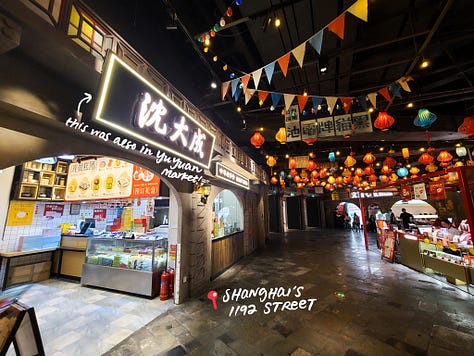
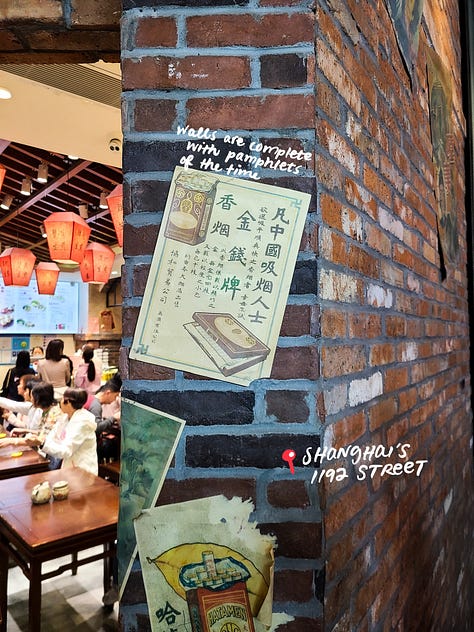
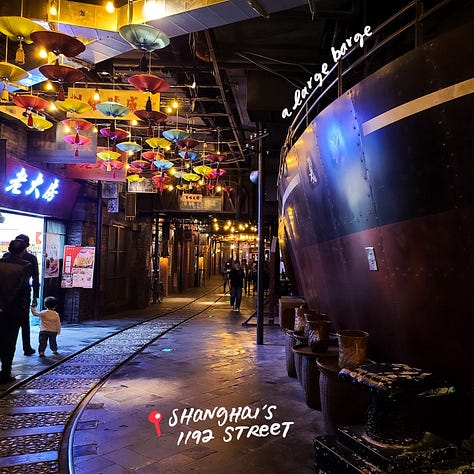
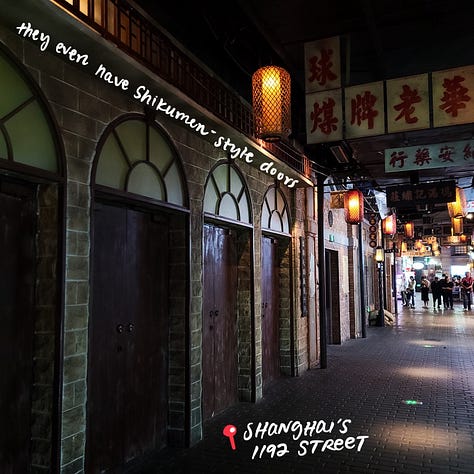
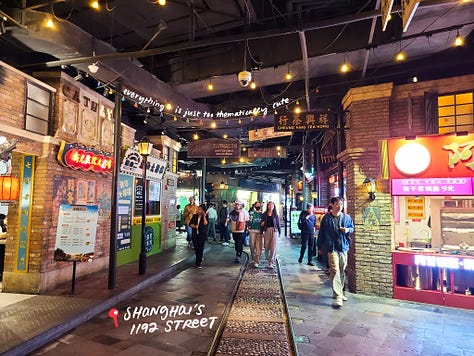

Shanghai World Exposition Venue (上海世博会场地, shànghǎishìbóhuì chǎngdì)—is the campus where China hosted the World Expo from May 1, 2010 - October 31, 2010, and they went ALL out, even having a mascot “Haibao” (海宝, hǎibǎo), meaning “jewel of the sea.” If you’re wondering what a “World Expo” is (also known as a “world’s fair”), it’s essentially an event where countries around the world can construct pavilions and/or exhibits to display industrial, scientific, and cultural items as a sharing-of-culture exercise. This event was widely talked about around my family’s dinner table, but it didn’t seem as valued by other American households (whenever I bring this up to my friends they have never heard of this 😆).
Anyway, in case you’re in the area and are curious, here are some iconic buildings and sights you should know about:
Expo Axis (世博源, shì bóyuán)—served as the “central boulevard” of the Shanghai World Expo, linking the four main buildings: China Pavilion, Expo Center, Culture Center, and Theme Pavilions (displaying the 5 sub-themes of the Expo). The architecture is cool because during the day the large membrane roofing shades you from the sun, then at night they display very intricate light shows. Now it also serves as a shopping mall!
Mercedes-Benz Arena Culture Center (梅赛德斯-奔驰文化中心, méisài désī - bēnchí wénhuà zhōngxīn)—known by its “clam shell” or “hamburger” shape; is an indoor arena that seats 18,000 people and has housed sports, music, and entertainment events
Expo Center (世博中心, shìbó zhōngxīn)—the long name: Shanghai World Expo Exhibition and Convention Center; it is now primarily an international conference center
China Art Museum (中华艺术宫, zhōnghuá yìshù gōng)—was called the China Pavilion during the World Expo; this art museum displays contemporary-style art as well as Chinese art through history and themed special displays
Shanghai Expo Culture Park (上海世博文化公园, shànghǎishìbó wénhuà gōngyuán)—this used to be the land where the Shanghai World Expo took place, where all of the non-permanent pavilions were built. Now it has been turned into a green space as an urban renewal project!
Shanghai Binjiang Forest Park(上海滨江森林公园,Shànghǎi bīnjiāng sēnlín gōngyuán)—located north of the Yangtze River (长江; chángjiāng), where the Yangtze River, Huangpu River (黄浦江; huángpǔ jiāng), and East China Sea (东海; dōnghǎi) converge. It used to be a sandy beach that the city converted into a park to allow residents a place to rest in nature. We walked a majority of it and it was beautiful! It’s definitely biker-friendly.
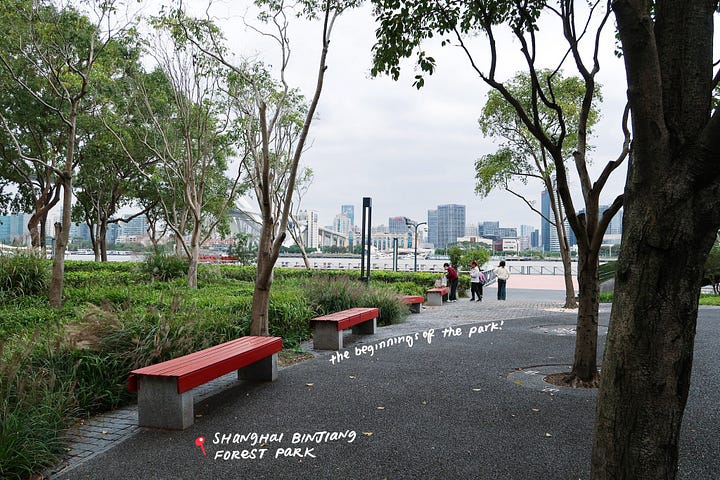
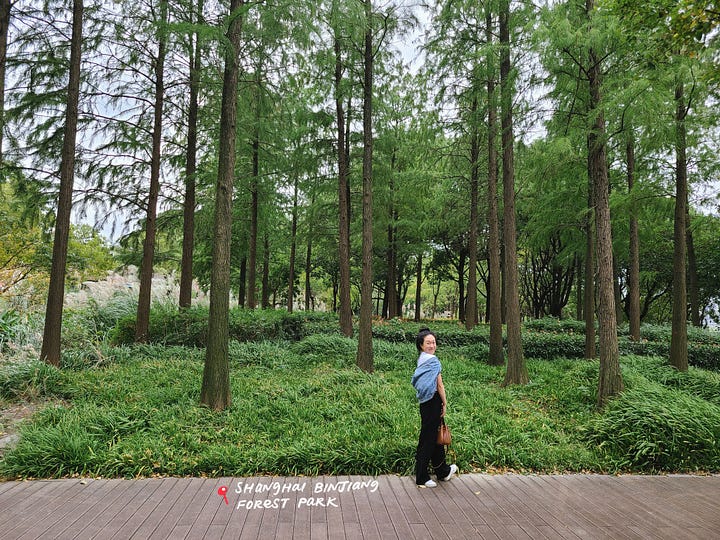
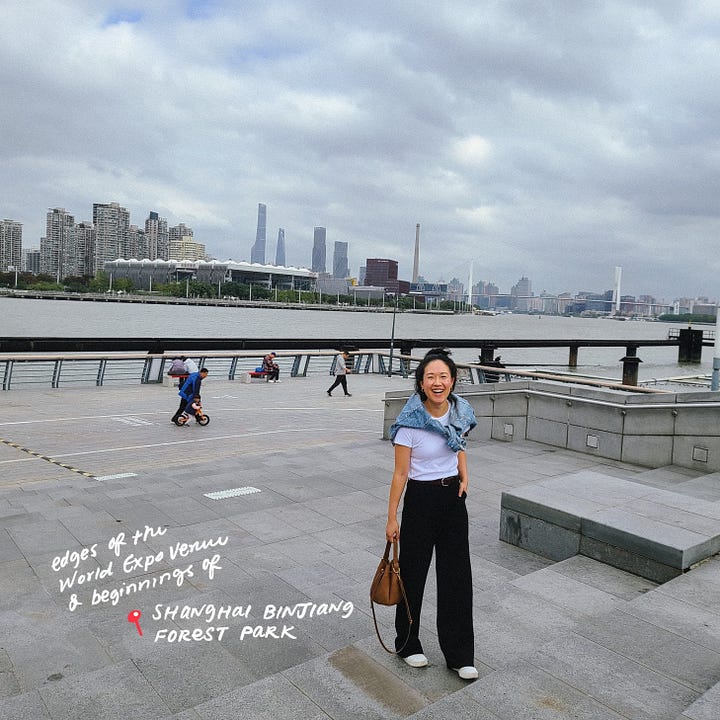
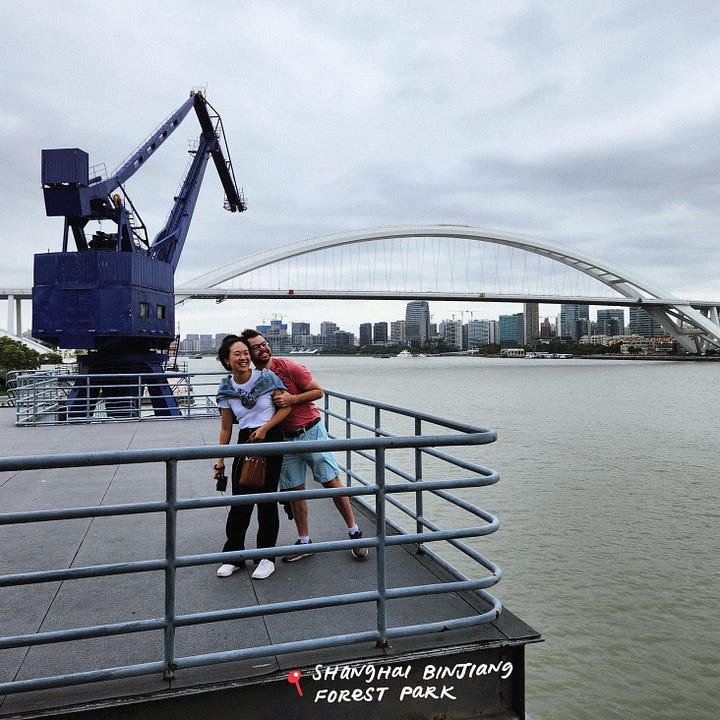
Shanghai Garden (申园, shēn yuán)—a garden within the big Shanghai Expo Culture Park designed in the style of the traditional Jiangnan garden of the Ming and Qing Dynasties. It’s not too large; it can easily be explored within 2-3 hours depending on how many pictures you like taking :) but highly recommend the visit~
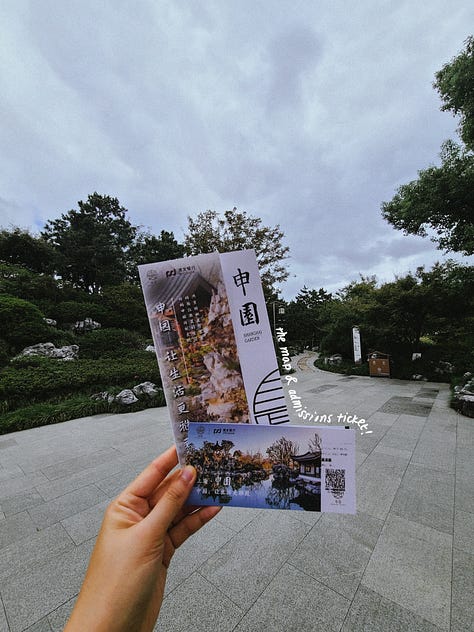
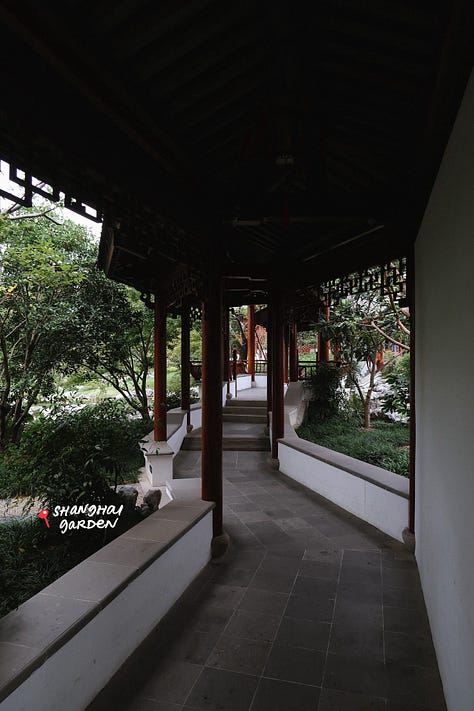
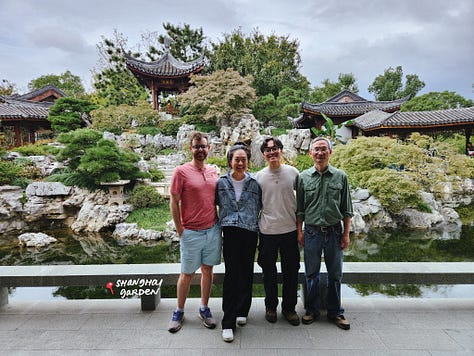

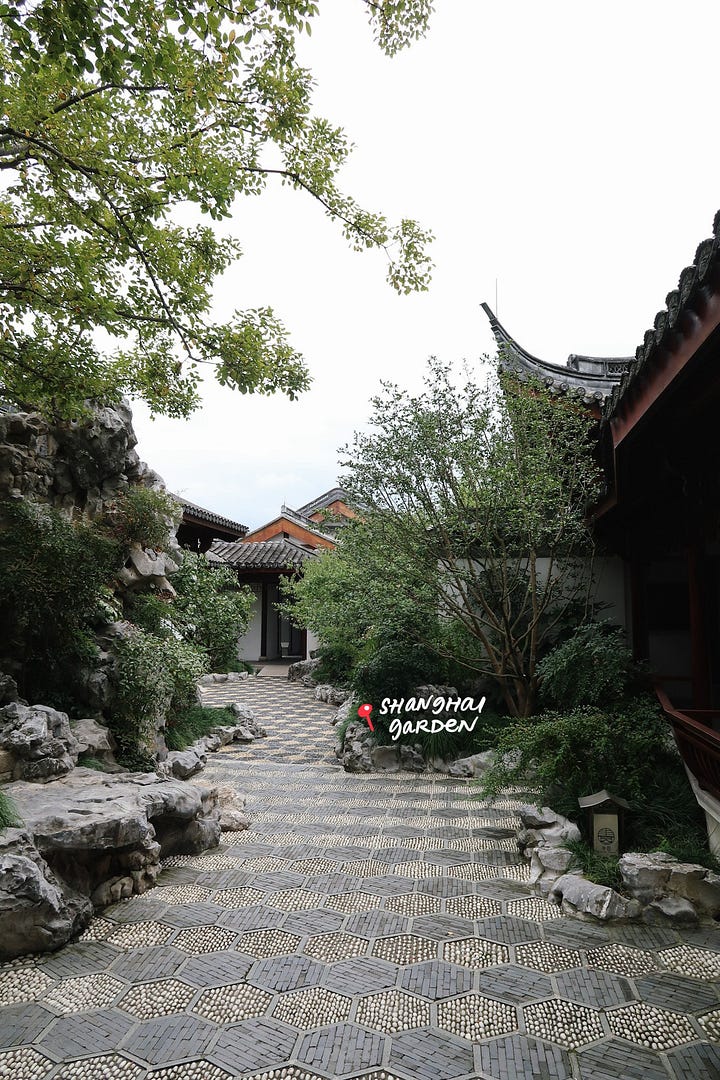
Shanghai Century Park (世纪公园, shìjì gōngyuán)–a large city park I remember visiting maybe a decade ago, and we were able to rent out 4-person quadricycles. It was so much fun!
Disneyland (迪士尼乐园, díshìní lèyuán)—while I’m not huge into amusement parks (I’ll go for the bucket list and probably won’t revisit for myself), I’m listing this as a PSA for all those out there who enjoy a Disney experience. I’m linking a resource on how to visit, and another on how to plan.
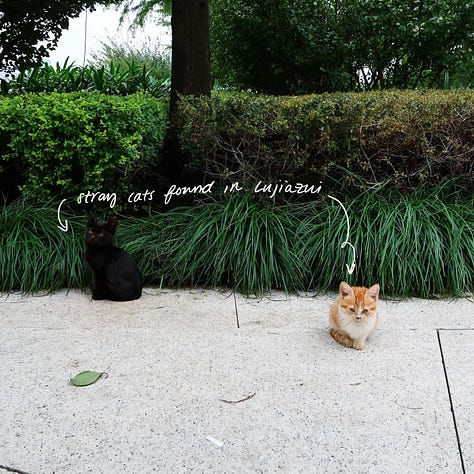
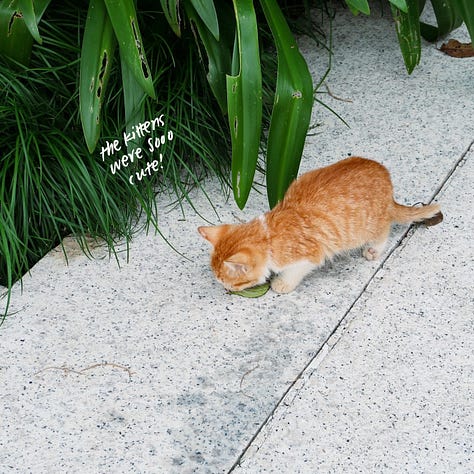
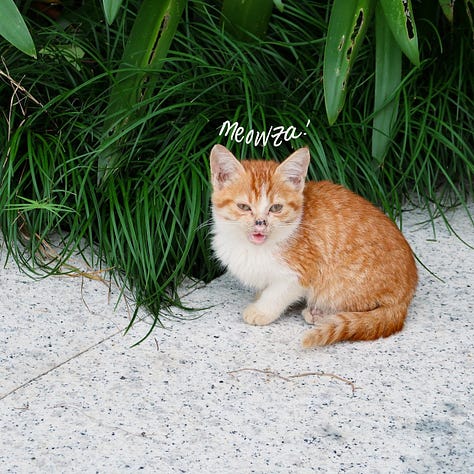
Yangsi (杨思, yàngsī)
{even though Pudong New District is technically one whole district, we’re still zooming into this particular spot}
Haiyang Road (海阳路, hǎiyáng lù)—the street right off of the Yangsi metro stop where there’s a TON of street food available for you to choose from. Ironically, the city center had little-to-no street food vendors so we ended up taking the subway here most mornings to grab breakfast; my full post on food recs is linked in the appendix.
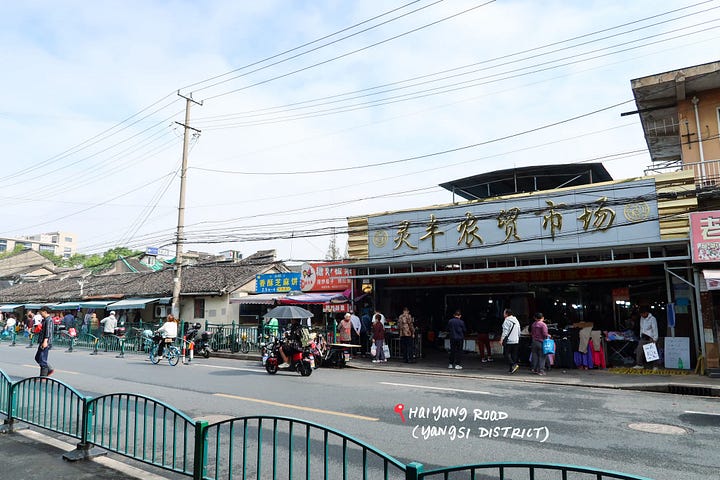
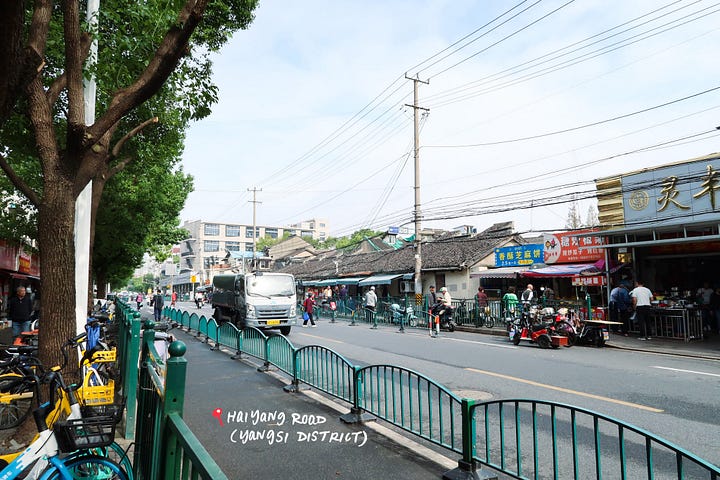


the suburbs have the most vibrant street markets 👇
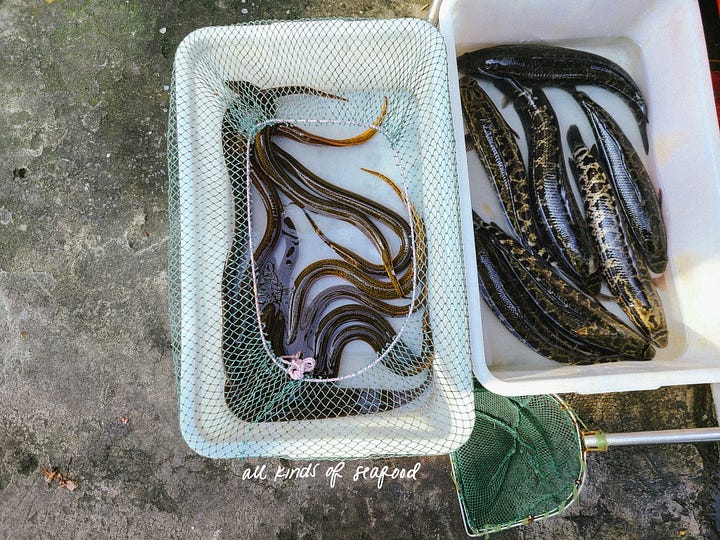
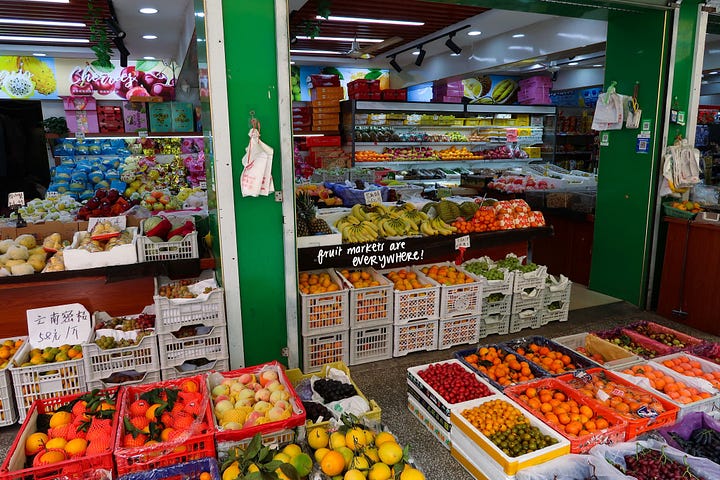
Lotus Supermarket (易初莲花:连锁超市, yìchū liánhuā: liánsuǒ chāoshì)—a supermarket chain that I used to always go to with my family since my cousin worked there. If doing your grocery shopping in the street markets aren’t your thing, you have to come here! These supermarkets have multiple floors with sloped escalators, shelves that are stocked with soooo many snacks, unimaginably cute stationery, etc. It’s a weird thing to recommend, but you have to check out one of these (or a similar supermarket) when you’re in China.
Puxi Area (浦西地区, pǔxī dìqū)
{the neighborhood west of the Huangpu River, with Hongqiao International Airport (SHA); disclaimer: there are many districts but I’ll only be talking about the districts we explored!}
Hongkou District (虹口区, hóngkǒu qū)
{this area was first occupied by the United States from 1845-1848, then by the Japanese during WWII; and you can see these reflected in the architecture styles of the neighborhood}
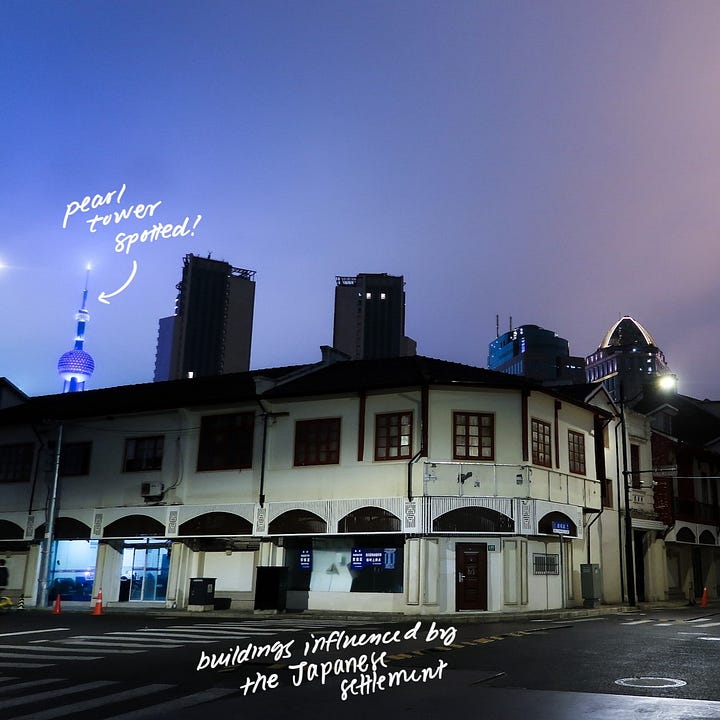
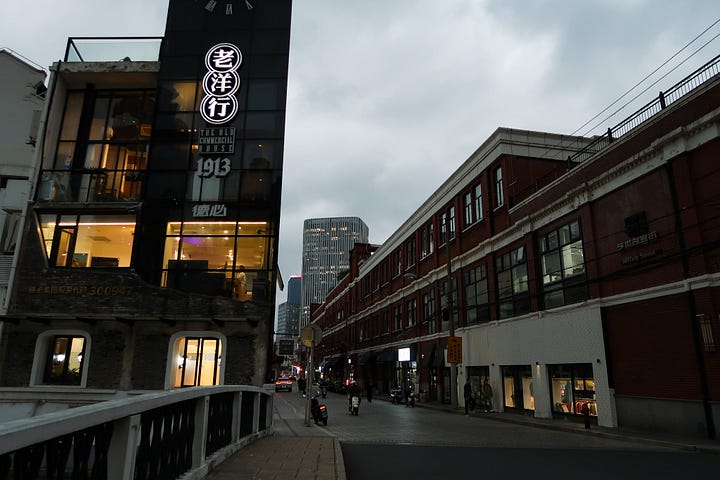
1933 Old Millfun (1933 老场坊, lǎo chǎng fāng)—was one of the largest slaughterhouses in Shanghai at the time, that has now been repurposed into a complex that houses boutiques, cafes, restaurants, and offices. From the outside, it looks like a plain rectangular building, but when you walk in, it’s an open-air, 5-story concrete structure of bridged walkways, spiral staircases, sloping hallways, etc. It’s a super unique piece of architecture to experience, and a fun location for photoshoots (but can be quite eerie in the dark).
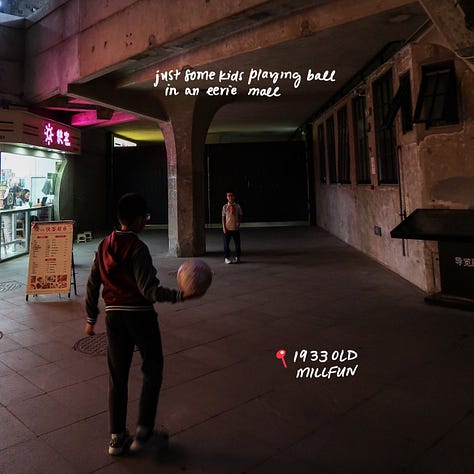
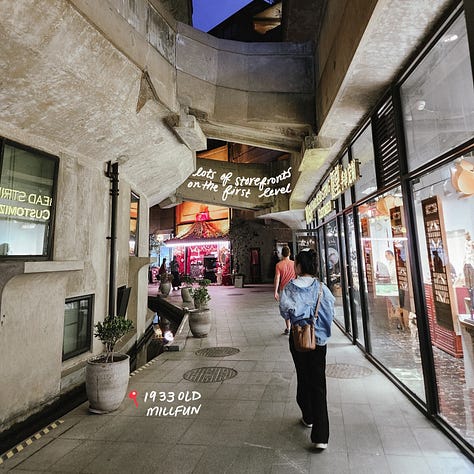
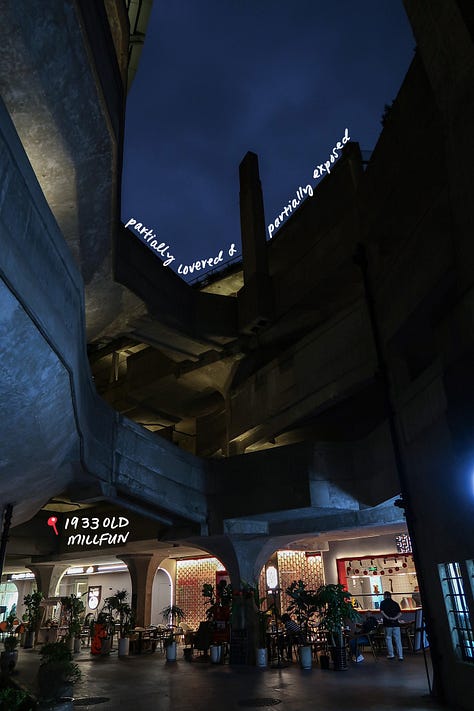
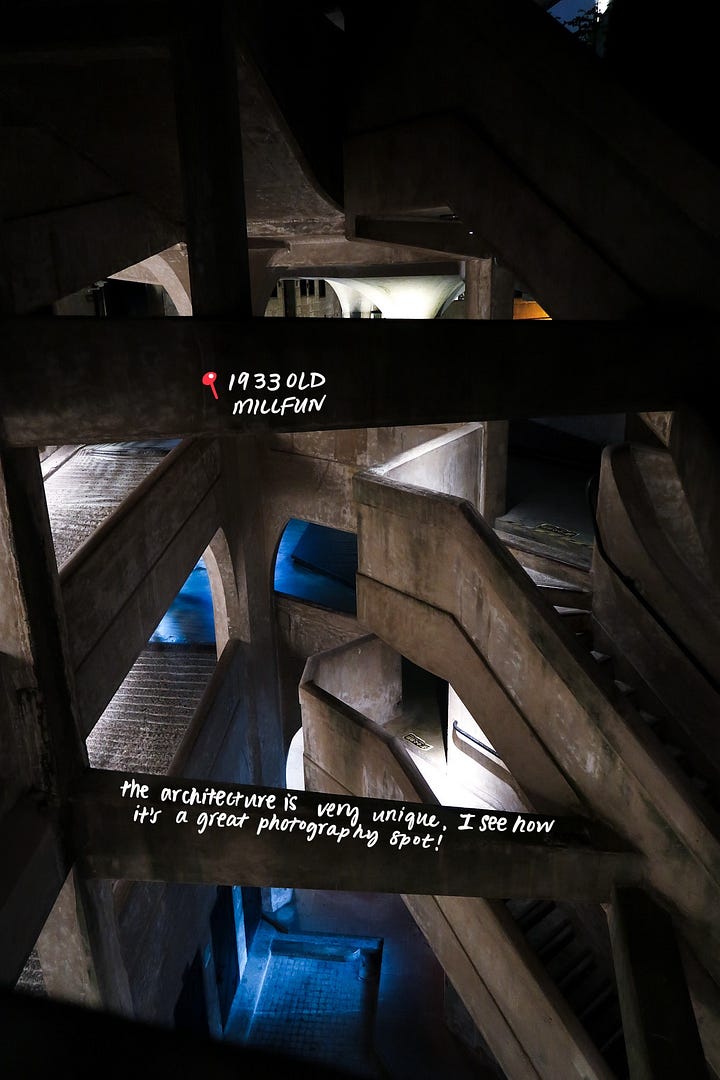
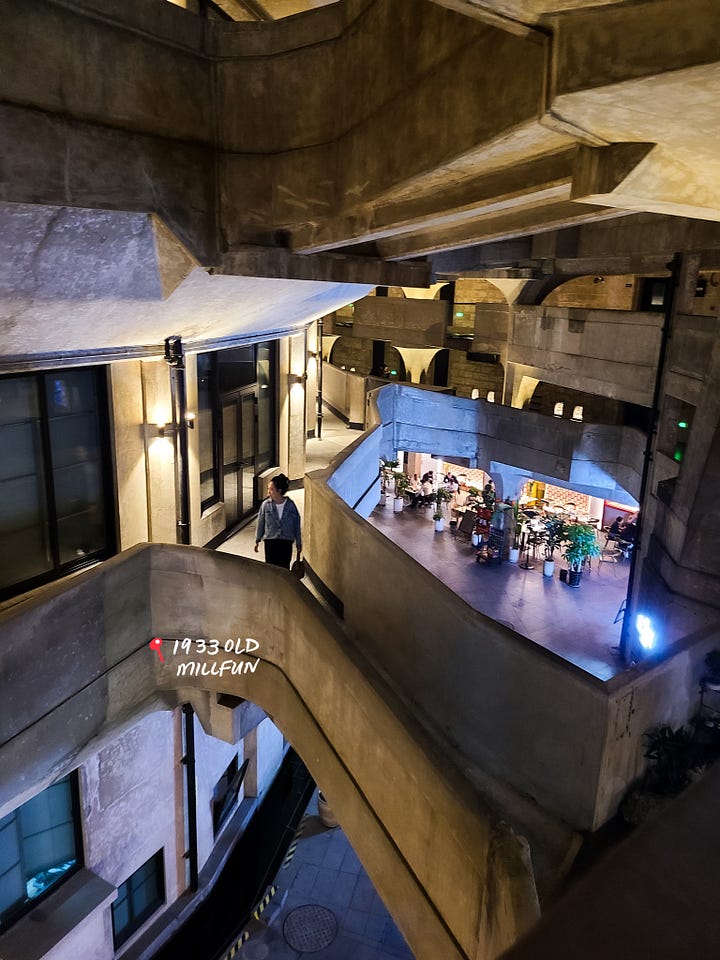

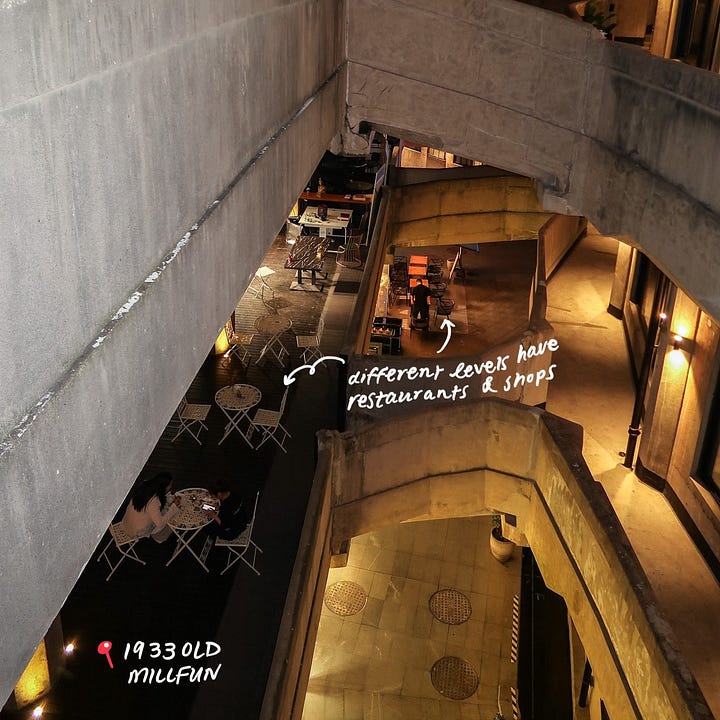
Putuo District (普陀区, pǔtuó qū)
{is vastly residential}
Tian’an 1000 Trees (天安千树, tiān'ān qiān shù)—located on Tian'an Sunshine Plaza (天安阳光广场, tiān'ān yángguāng guǎngchǎng) and also called the city’s “Hanging Gardens of Babylon.” Designed by Thomas Heatherwick, a British architect, this is another structure that caught my eye for its unique architectural design. The building complex has at least 1000 tree-topped pillars, staggered in a way where it looks like a hill with an automated watering system that keeps the greenery alive (inside it’s just a shopping mall). Sadly, when we actually visited, it was still very much under construction. Hopefully when you go, it’ll be complete!
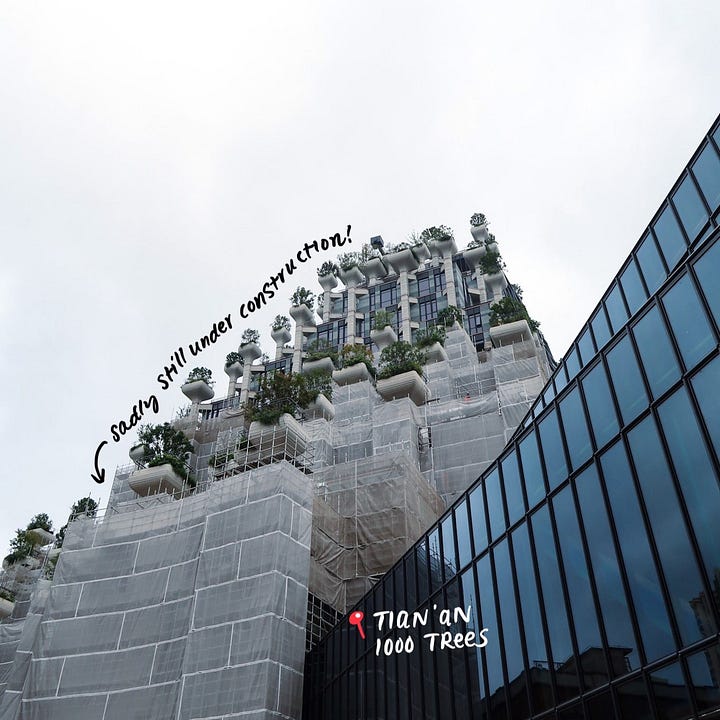
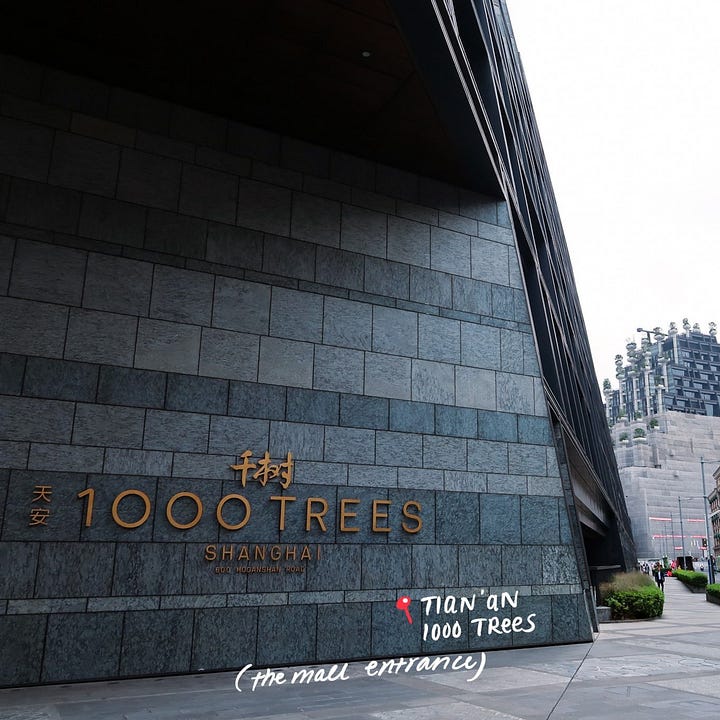
Zhenru Temple (真如寺, zhēnrú sì)—has a reputation of being the most tranquil and peaceful of the famous Shanghai temples, and is known for its 9-story pagoda and a restaurant that serves tasteful vegetarian dishes. It’s located very near my grandmother’s home, so it’s shocking that I haven’t visited yet. Hoping for next time!
Jade Buddha Temple (玉佛寺, yùfú sì)—founded in 1882, named after two jade Buddha statues that are enshrined inside. Also haven’t visited this one, but I hear it is popular to visit for its traditional architecture style.
Jing’an District (静安区, jìng'ān qū)
{named after the ancient Jing'an Temple; includes the old Zhabei District (merged in 2015)}
Jing’an Temple (静安寺, jìng'ān sì)—dating back to the year 247, it is known as one of the oldest and largest Buddhist temples in Shanghai. It is also one of the most popular temples for tourists! This can be easily visited in 1-2 hours, depending on your pace. It took us on the longer end because we were taking so many pictures.
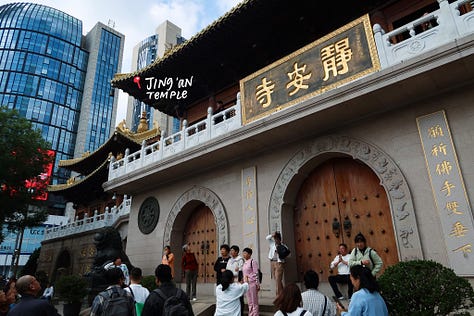
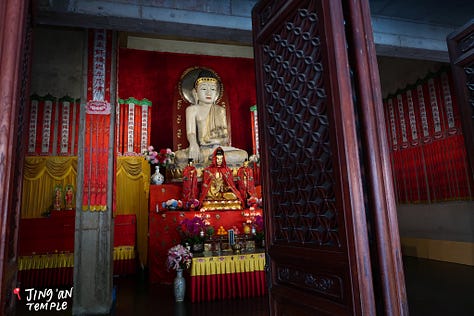
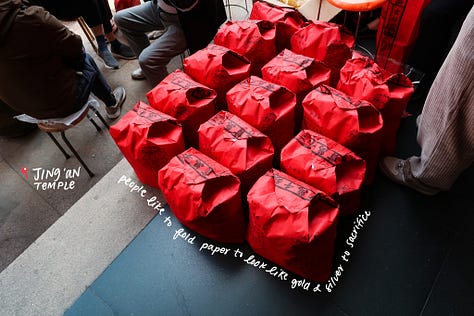
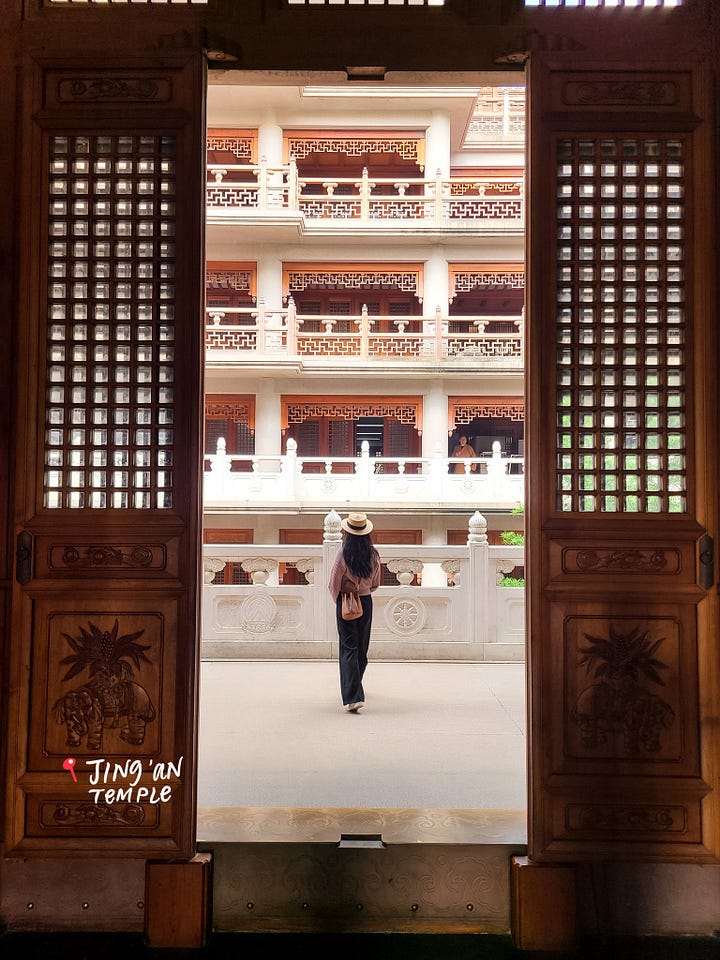
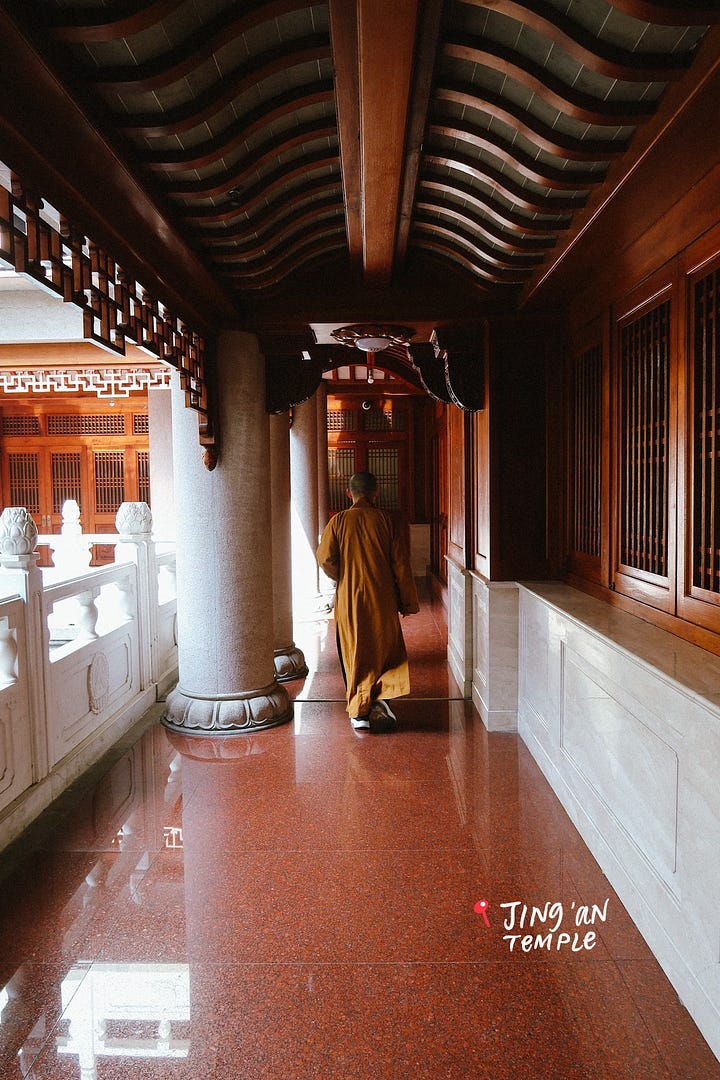
Eight Scenes Garden (八景园, bājǐng yuán)—shhhh… not many people know about this one, it’s a complete hidden gem in the center of the city kind of inside Jing’an Park (静安园林, jìng'ān yuánlín), its address: No. 1649 Nanjing West Road. I only know of this garden because of my cousin. There’s a small pond, and a tea shop where you can order tea and just hang out with a friend, read a book, etc. The garden also has beautiful landscaping and a rock structure that we had too much fun exploring.
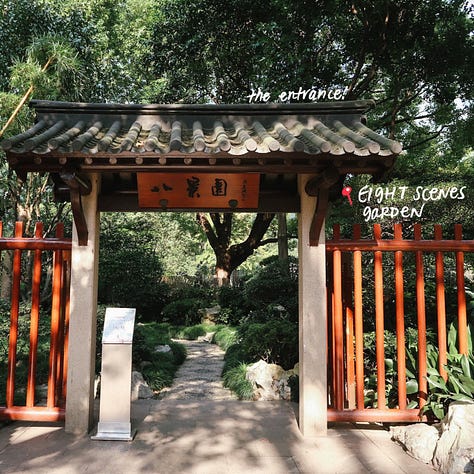
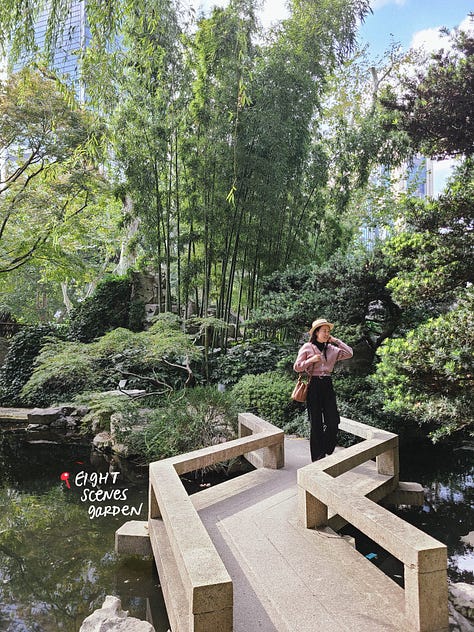
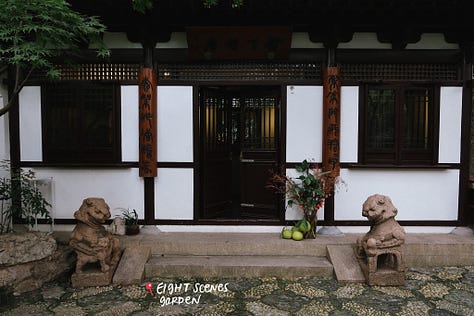
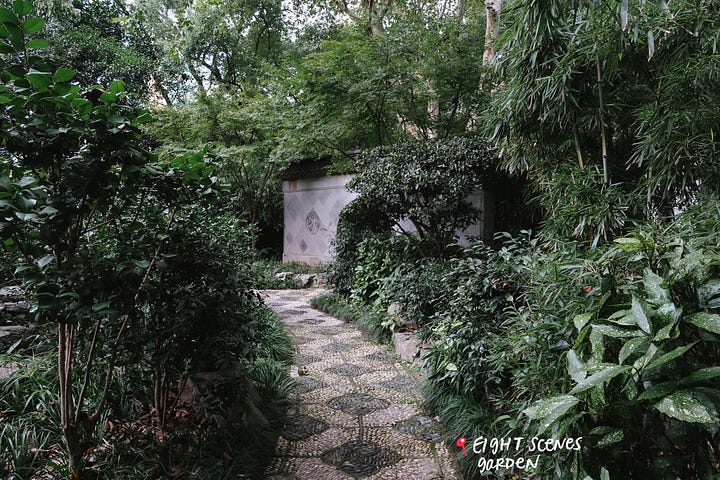
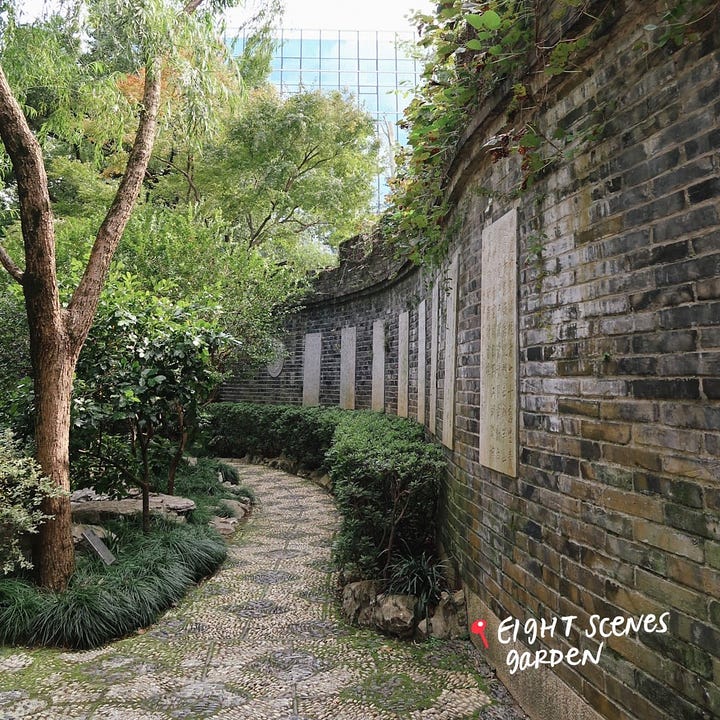
The Paramount Ballroom (百乐门, bǎi lè mén)—also called “The Paramount” and nicknamed “Gate of 100 Pleasures.” This was originally opened in 1933 and was THE nightclub and dance hall in its time. Now it has been renovated as a modern replica of the original building’s Art Deco style, while glamming up the interiors to remain a landmark for the night scene (live bands, old-school social dancing, karaoke rooms, private bar, etc.)
Xuhui District (徐汇区, xúhuì qū)
{named after its namesake, Xujiahui; is first known for its French-style architecture from the French Concession period (1849-1943), has now developed into one of Shanghai’s biggest financial districts and shopping centers}
Shanghai Community Fellowship Church (SCF) (上海国际礼拜堂, shànghǎi guójì lǐbàitáng)—my husband and I enjoy checking out churches in different cities, and Shanghai was no exception! SCF is an interdenominational church with a multinational congregation and an English church service. Be prepared to bring a foreign ID or green card in order to enter.
Metro City (美罗城, měi luó chéng)—a multi-story mall at an intersection with 3 other shopping buildings, but this one is the only one worth mentioning because the others had very similar storefronts where the price range was mid-to-high. Half of Metro City contained Japanese storefronts or stalls selling Japanese products, the other half heavily sold electronics & camera gear. Two specific stores that I found interesting and that you should check out:
Loft—a Japanese specialty store that sells cute, stylish, and trendy household and lifestyle goods like makeup, stationery, trinkets, stuffed animals, etc. I could’ve bought so much stuff here!
HotMaxx—a store founded in April 2020 in China that sells packaged snacks (usually ones that are almost expired) at discounted prices
Former French Concession’s scenic “city-walk” streets—this area was established in 1849 for French settlement, which is why the neighborhood is now known for buildings that have a mix of Western influence and traditional Chinese-style design. The phrase “city walk” is used to describe the act of walking the charming streets of the Former French Concession area (which overlaps with Jing’an District, Huangpu District, and Xuhui District) while admiring the historic buildings and romantic, tree-lined roads.
Wukang Road (武康路, wǔkāng lù)—known as “the cultural essence of Shanghai.” It’s a stretch of road that is dappled with expensive homes, boutiques, cute restaurants, and is most known for the Wukang Building (武康大楼, wǔkāng dàlóu), a European-style building known for its curved architecture
Additional roads for city walk listed below 👇 where you’ll find more artsy boutiques, local handicrafts, and small business designers’ storefronts. This is also where a lot of the trendy coffee shops are congregated (though I didn’t get a chance to visit any):
Julu Road (巨鹿路, jùlù lù)—touches Jing’an District & Huangpu District
Changle Road (长乐路, zhǎnglè lù)—touches Jing’an District, Huangpu District, and Xuhui District
Fumin Road (富民路, fùmín lù)—touches Jing’an District & Xuhui District
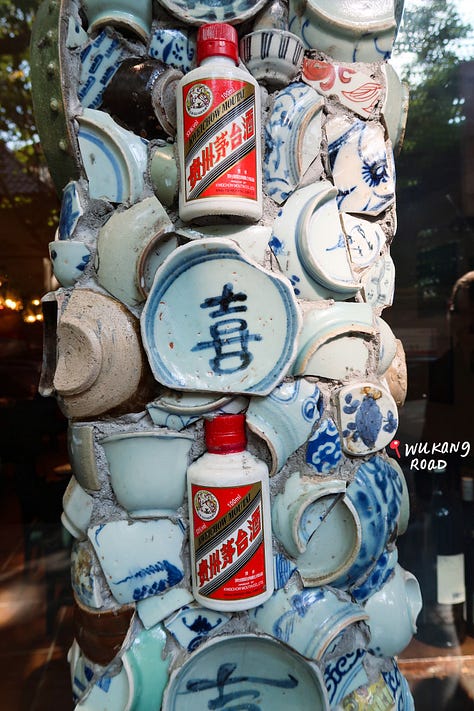


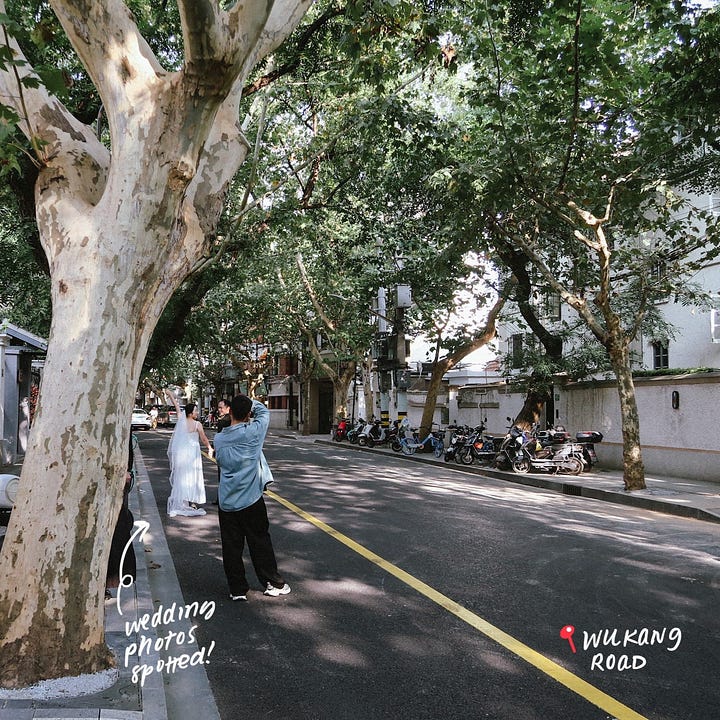
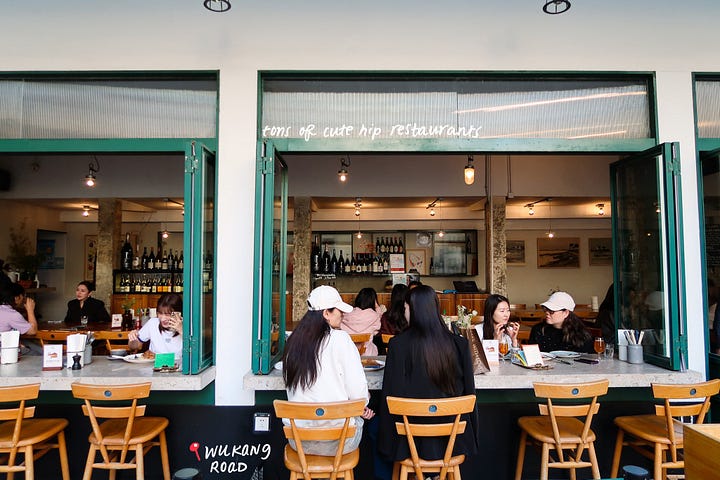
Shanghai Library (上海图书馆, shànghǎi túshū guǎn)—also named Shanghai Institute of Scientific and Technological Information (上海科学技术情报研究所, shànghǎi kēxué jìshù qíngbào yánjiū suǒ); founded in 1956 with approximately 58 million items (one of the largest libraries in the world) and 24 reading/study rooms. The building in Xuhui is the main library, with a branch location in Pudong. It’s free to visit, but requires you to pre-book your appointment.
Huangpu District (黄浦区, huángpǔ qū)
{is considered the center of Shanghai, where many international settlements were located, and where the majority of the iconic “Old Shanghai-style” architecture lies}
The Great World (大世界, dà shìjiè)—built in 1917, this was the first indoor amusement park and entertainment complex in Shanghai and has become one of the city’s most historic buildings. While it had to close its doors in 2003 due to the SARS epidemic, it reopened in 2017 as a performance hall. We actually stumbled into a free acrobatics show one afternoon! There were around 50 people in the audience, the show lasted 30-40 minutes, and even though the whole thing was super casual, the performers had immense talent.
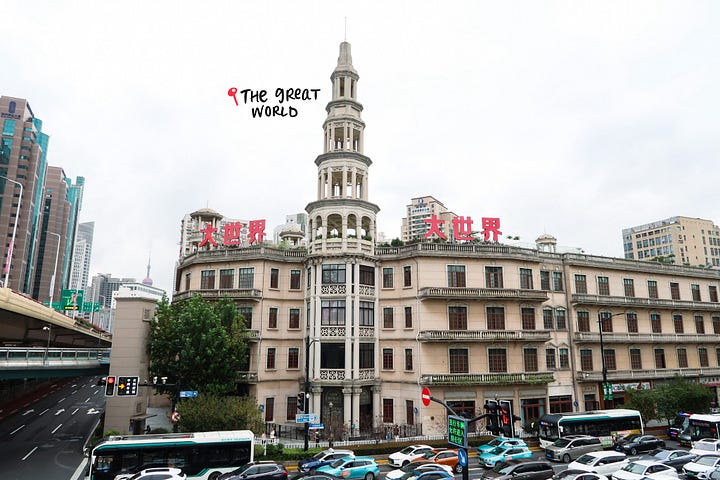
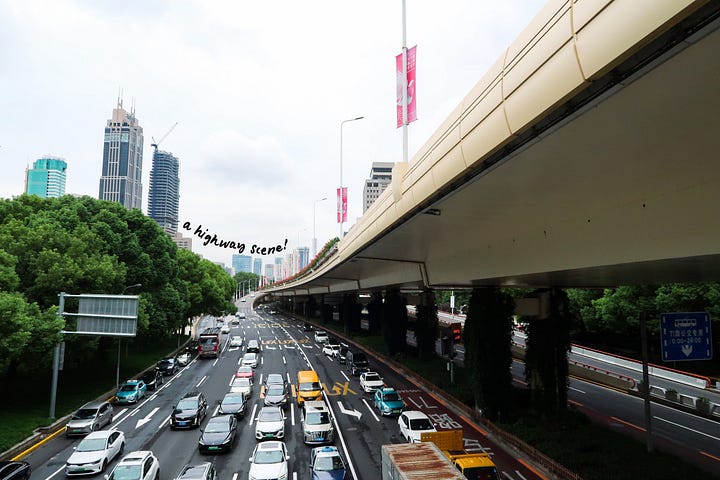

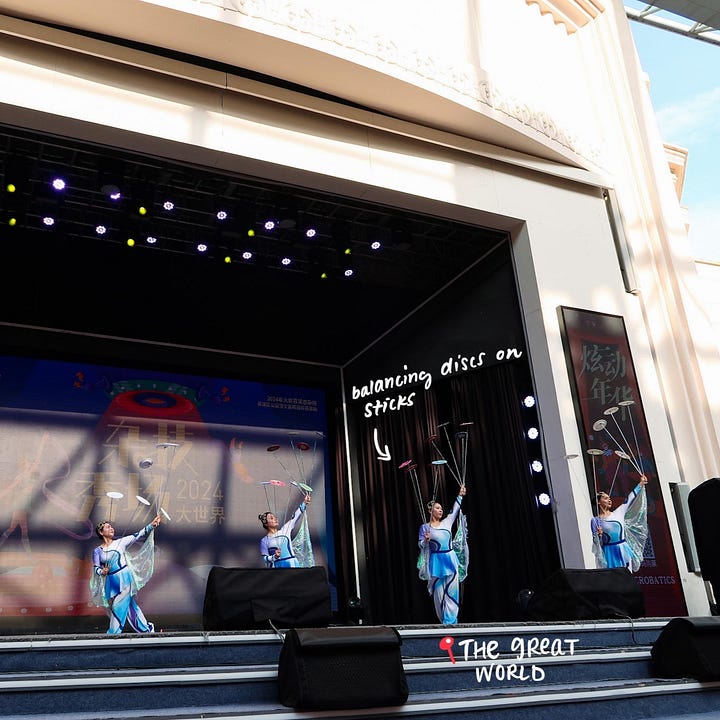
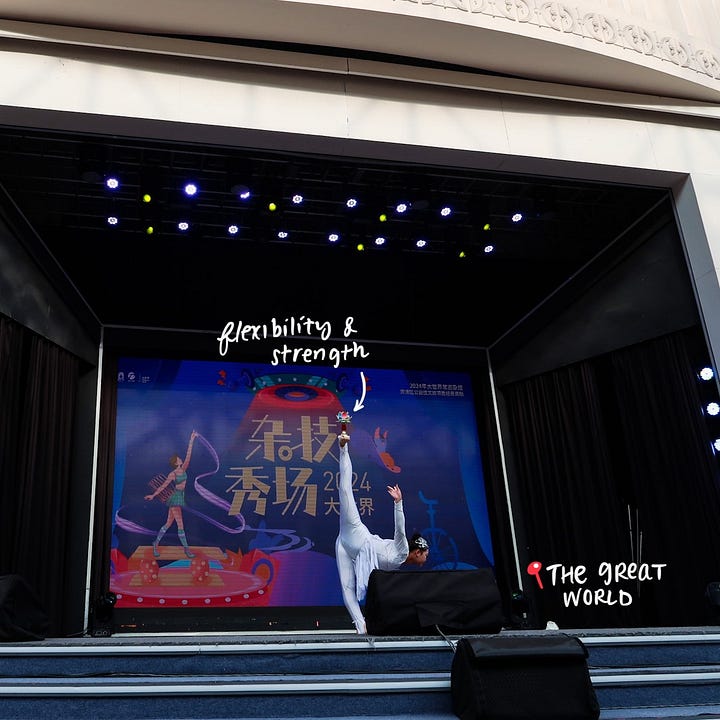
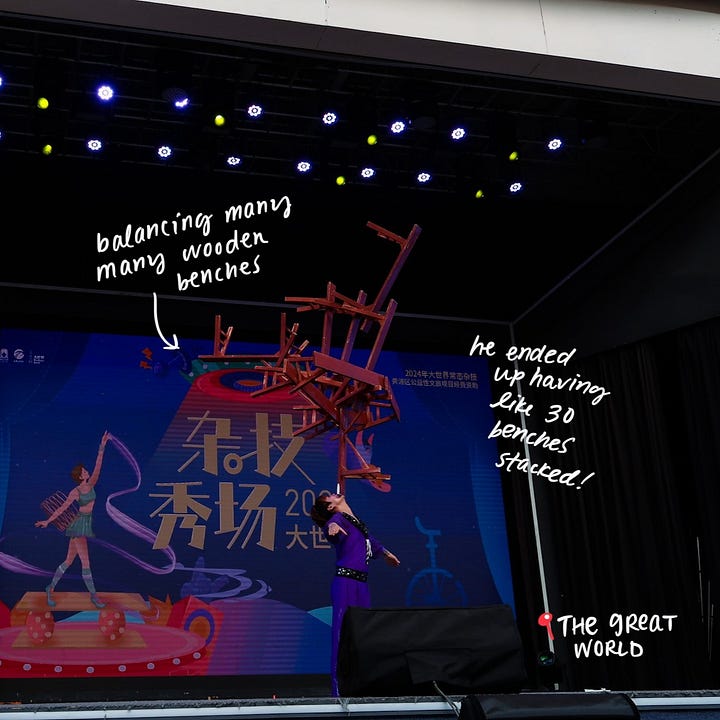
People’s Square Park (人民广场公园, rénmín guǎngchǎng gōngyuán)—this is the “main park” of Shanghai, located in the heart of the city and surrounded by many of the city’s prominent buildings (i.e., Shanghai Grand Theatre, Shanghai Museum, etc.). It used to be the horse racing course owned by The Shanghai Race Club—one of Shanghai’s most prestigious locations—but was later turned into the People's Park by the Shanghai Government. When we went, the square was lusciously green and well maintained, and it was cute to see all of the families with young kids feeding pigeons!
pro-tip—underground, in the People’s Square (人民广场, rénmín guǎngchǎng) metro station, there is a miniature shopping plaza where you can purchase clothing, accessories, food, etc. It definitely has a local feel, with nothing done-up and fancy about the stalls and the hallways are grungy, but the prices are affordable and makes for great window shopping!
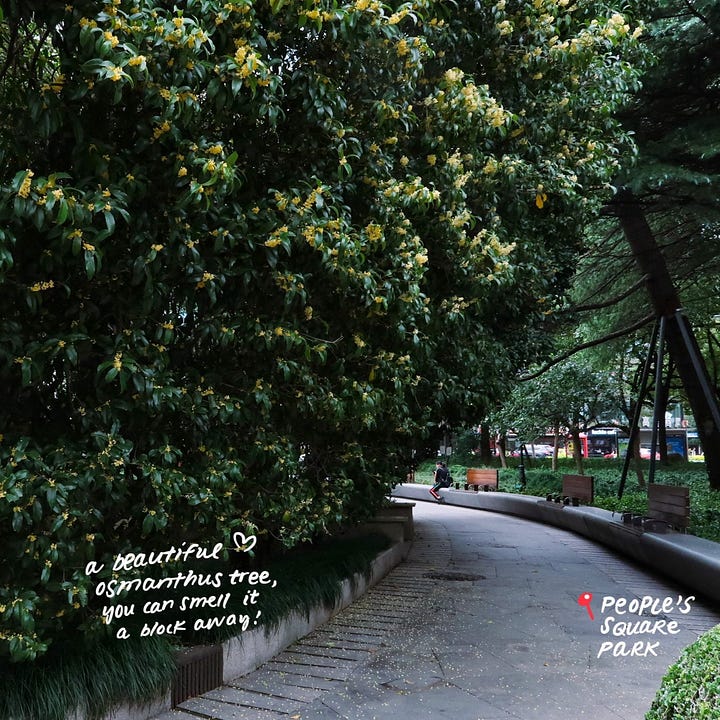
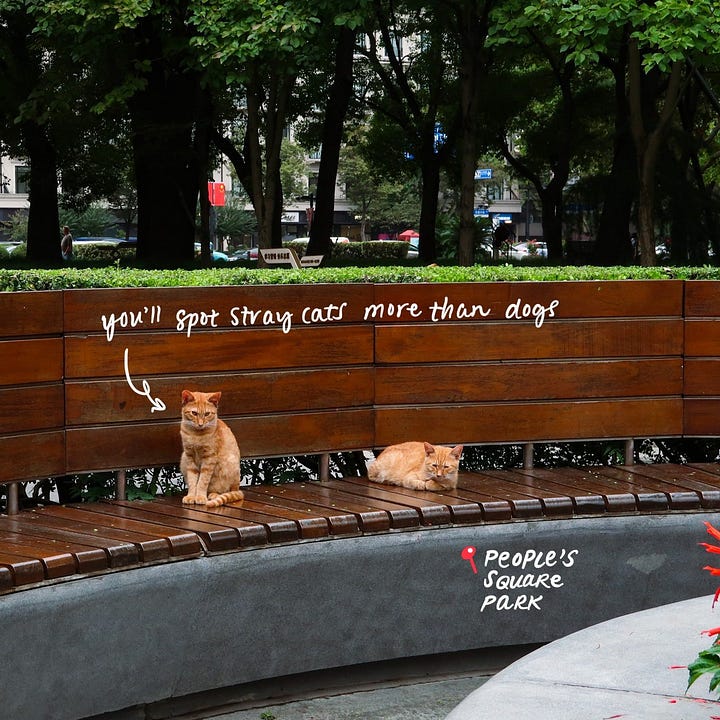
Shanghai Museum (上海博物馆, shànghǎi bówùguǎn)—is one of China’s largest and most comprehensive museums, showcasing the whole gamut from ancient Chinese artifacts to contemporary art. If you want to go, make sure you pre-order tickets and schedule a time, they operate on a reservation basis! Which is something we didn’t know so couldn’t fit this into our schedule😔
Shanghai Urban Planning Exhibition Hall (上海城市规划展示馆, shànghǎi chéngshì guīhuà zhǎnshì guǎn)—this is near the People’s Square Park and is dedicated to showcasing the development of Shanghai through the years. Having learned from our mistake with the Shanghai Museum, we made sure to reserve tickets and were able to go on one of our last days in the city. ✨I actually highly recommend checking out this specific museum at the end of your trip, because it was cool to be able to connect the city’s history with the landmarks, buildings, etc. that we saw. I was able to more fully appreciate the city’s architecture after first seeing it, then learning about it! ✨
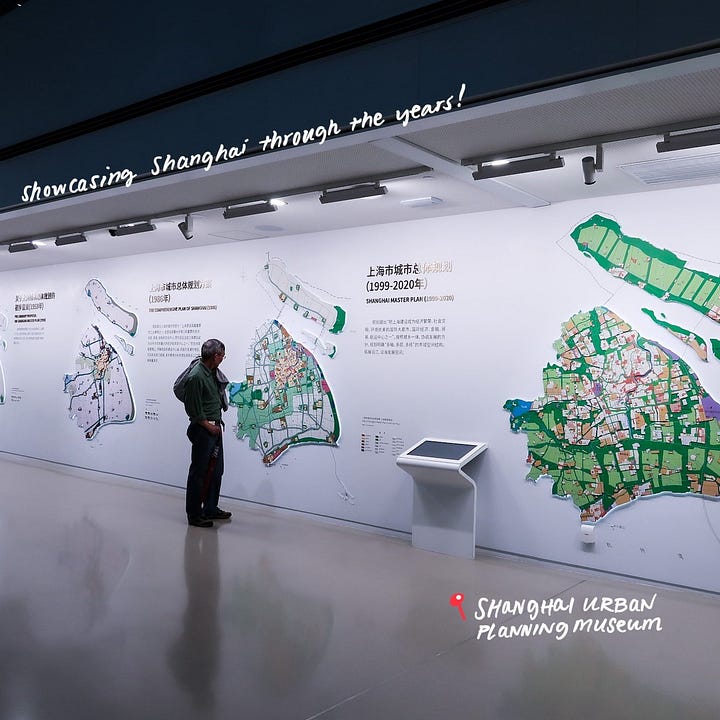

Shanghai Park Hotel (国际饭店, guójì fàndiàn)—also called “Jin Jiang Park Hotel,” its Chinese name literally translates into “International Hotel.” It was built in 1934 and was the tallest building in the city from its debut year to 1983, overlooking Shanghai’s horse racing course (that is now the People’s Square Park). Since 2006, it has become a National Priority Protected Site while still functioning as an operational hotel in the center of the city.
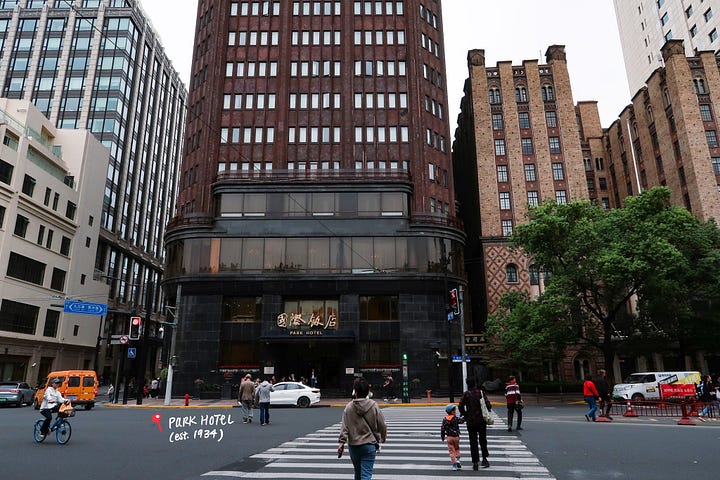
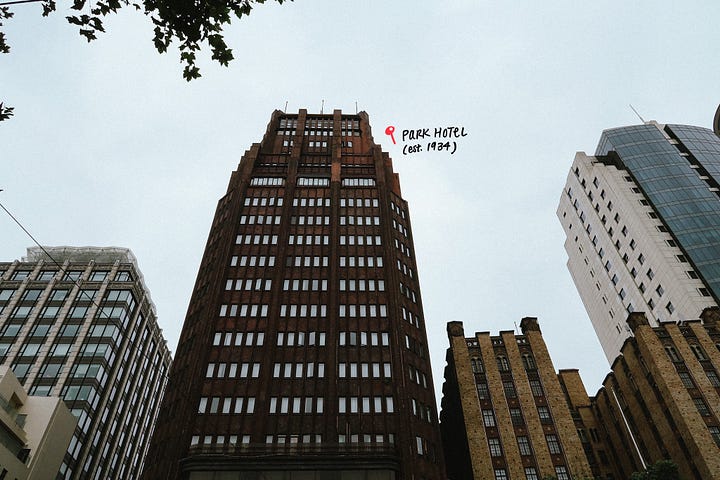
Shanghai History Museum (上海市历史博物馆; shànghǎi shì lìshǐ bówùguǎn)—focuses on the local history from 1843 to the communist takeover in 1949. It showcases a collection of about 110,000 pieces in 15 categories (i.e., painting, metal, ceramics, printing, paper-cuts, stamps, etc.)
Nanjing Road Pedestrian Street (南京路步行街, nánjīng lù bùxíngjiē)—or Nanjing Road (南京路, nánjīng lù) for short, is a pedestrian-only street lined with luxury boutiques, department stores, and traditional Chinese souvenirs and street eats. So, while there is a wide range of shopping experiences, the entire 5.5 kilometers-worth (3.4 miles) of putzing does lean more towards the mid-to-higher end of the price range.
pro tip—if you’re looking for more budget-friendly eats, head a couple blocks away/check out the nearby alleys
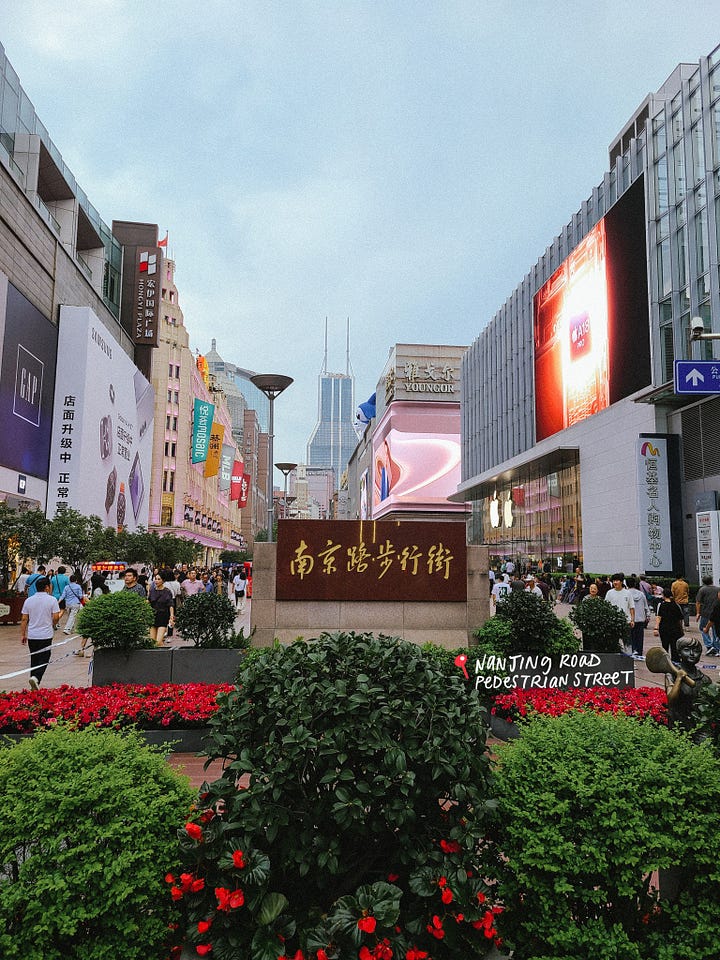
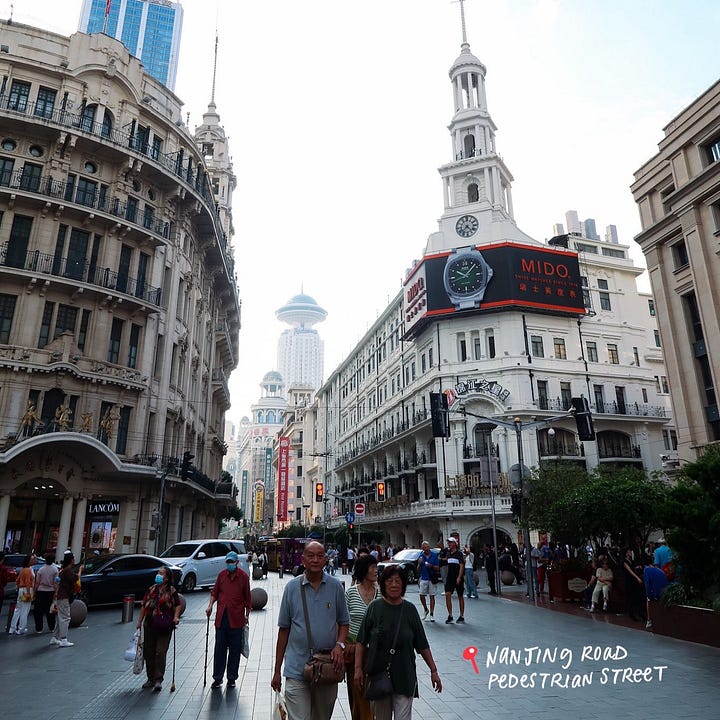
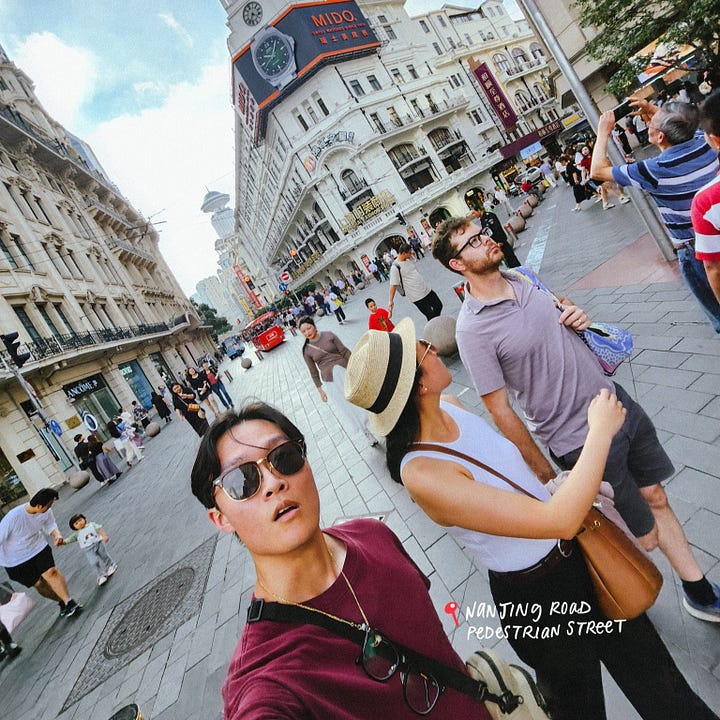
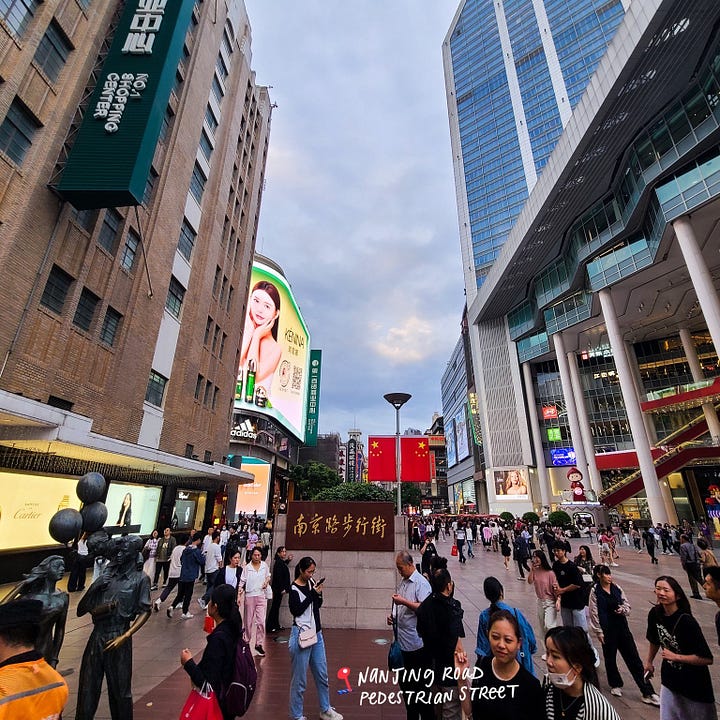
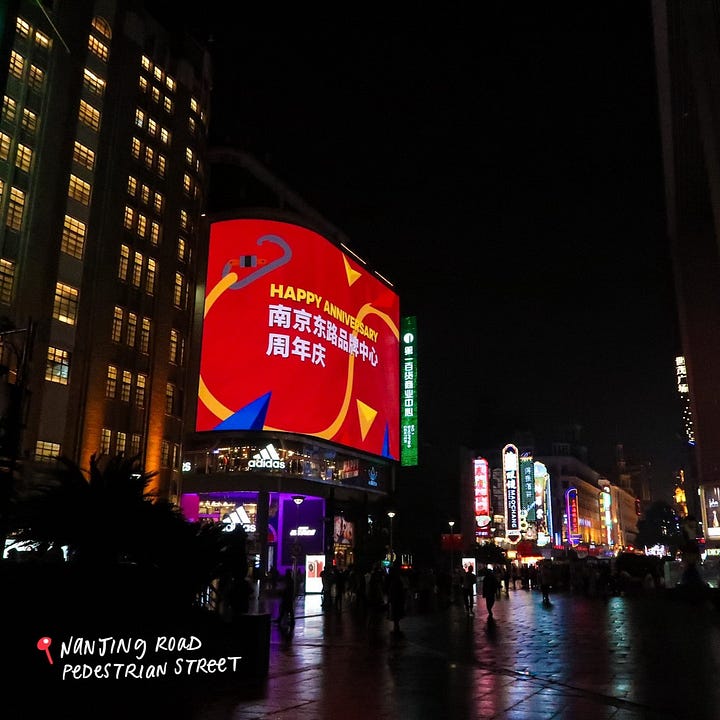
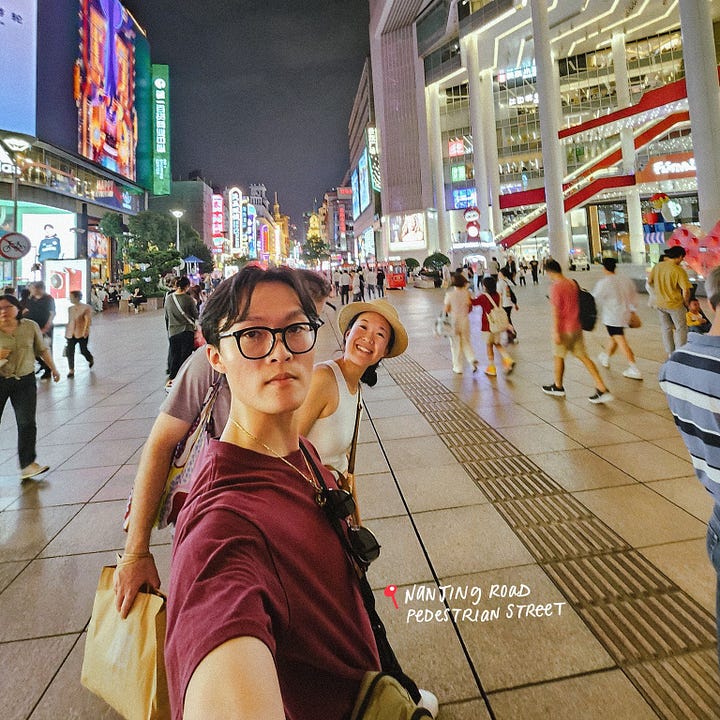
The Bund (外滩,wàitān)—is the waterfront where the iconic Shanghai city skyline (of Lujiazui) can be viewed and is also the city’s most famous walking street. There’s an eclectic beauty to the buildings’ different architectural styles along the waterfront’s avenue, which perfectly encapsulates Shanghai’s signature look (a fusion of Western and Chinese culture) while paying homage to history (British concession in 1844, among many other foreign settlements). Now, the Bund is known as “an exhibition of international buildings” from the charming old Shanghai (check out this walking tour map for a list of buildings to look out for).
pro tip: if you’re wanting to see The Bund at night, make sure to go before 10:00 PM! All of the lights turn off on the Lujiazui side and on the majority of Nanjing Road/The Bund walkway at 10:00 PM.
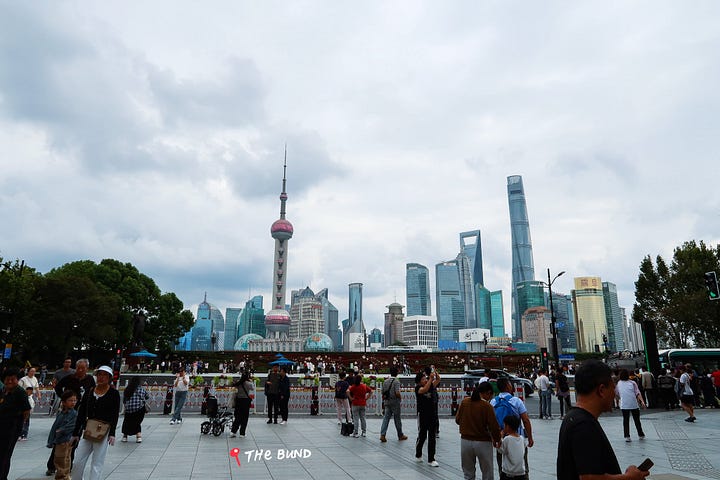
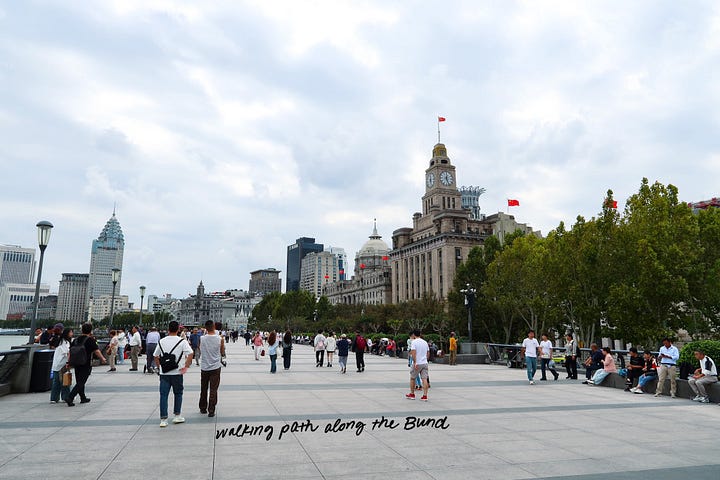

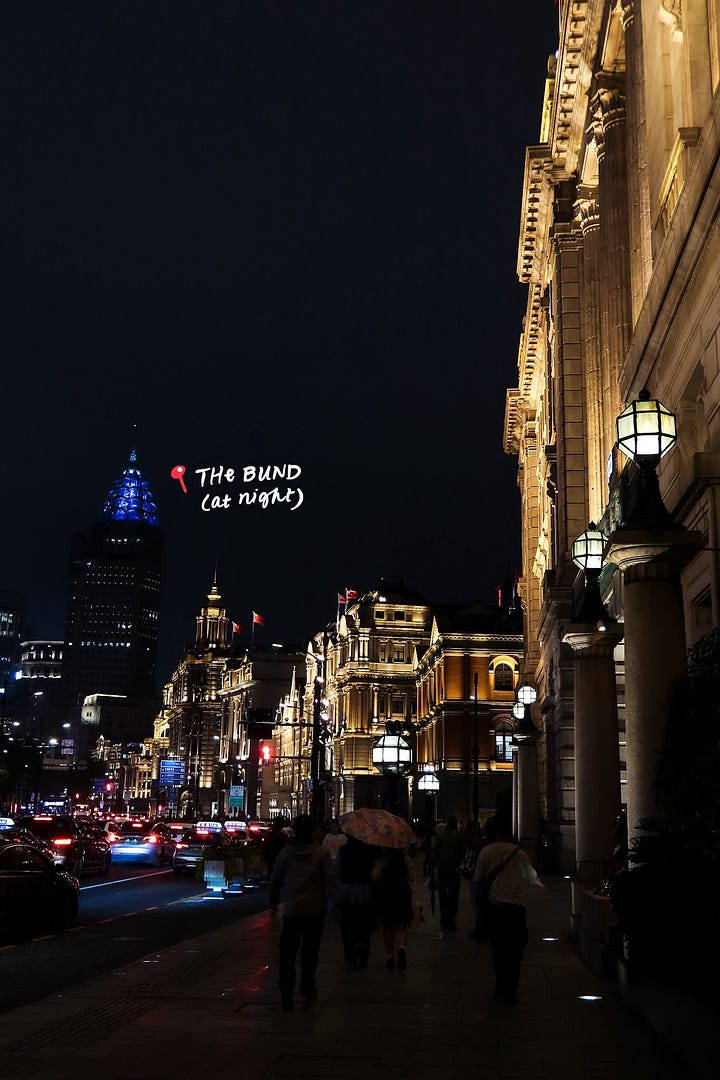
Waibaidu Bridge (外白渡桥, wàibáidù qiáo)—also known as the “Garden Bridge,” is located at one end of the Bund and was China’s first all-steel bridge. It was constructed in 1908, replacing a wooden bridge built in 1856, and is mildly controversial: in its early days, anyone who wanted to cross had to pay a toll. However, since the American and British expats (allegedly) paid on credit, it appeared to the locals that foreigners were able to cross for free, causing an uproar over the unfairness. I can’t confirm which version of the story is true, but to this day, there are still some lingering negative feelings from older generations about the misunderstanding.
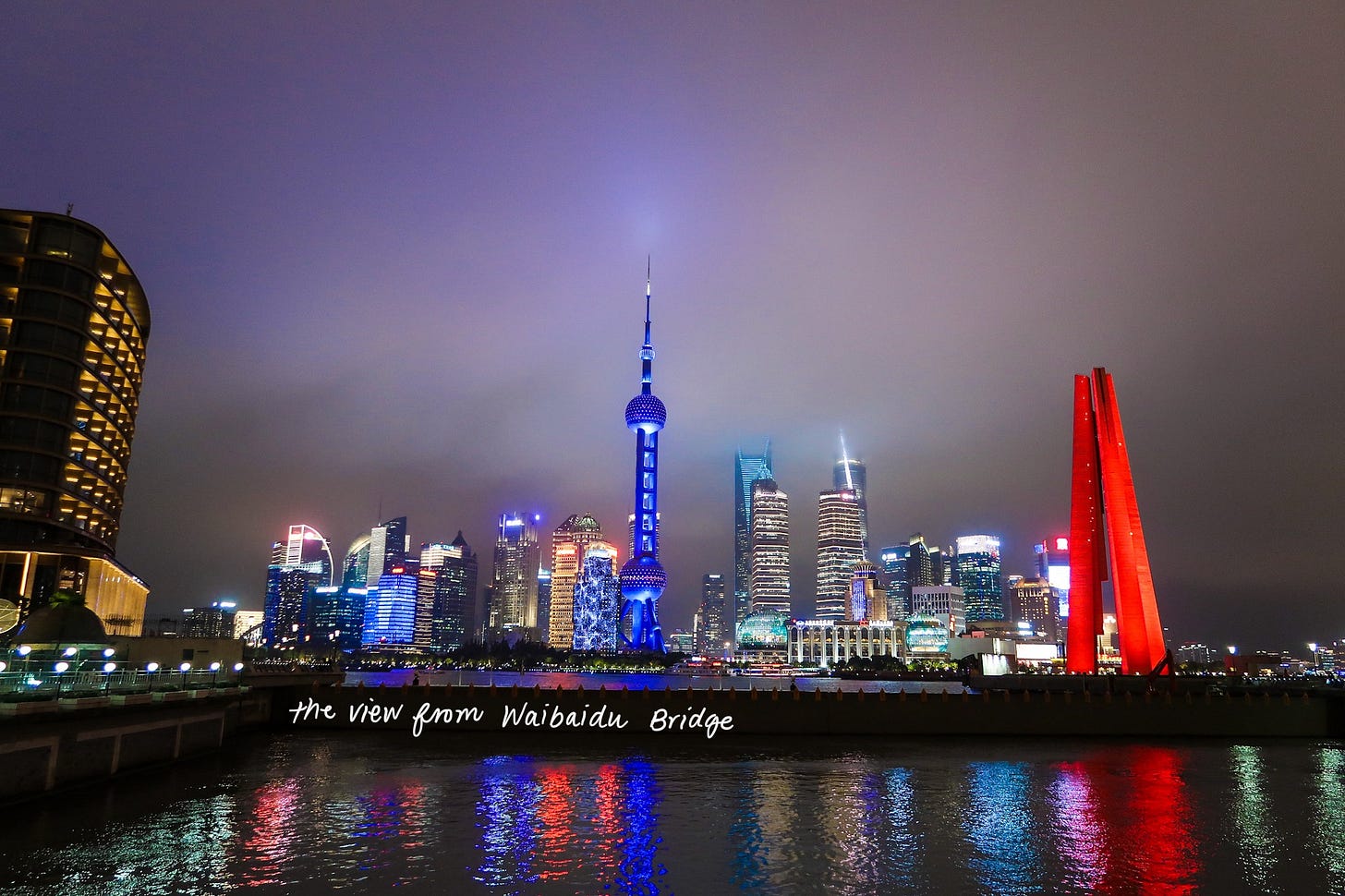
feat. the People’s Heroes Monument lit up in red 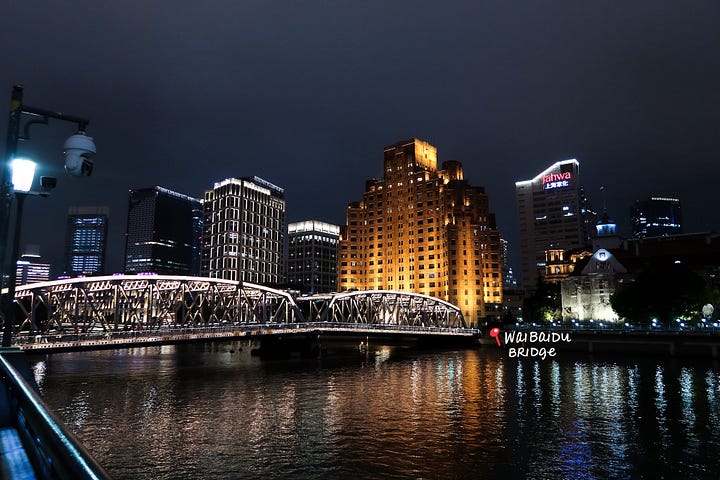
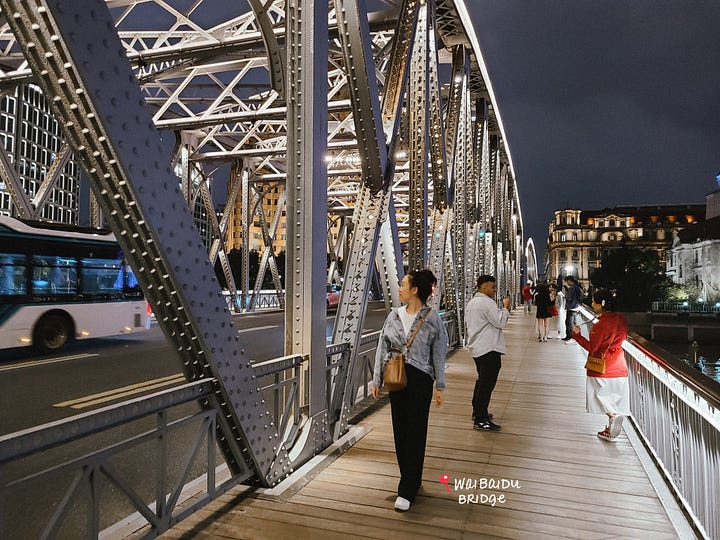
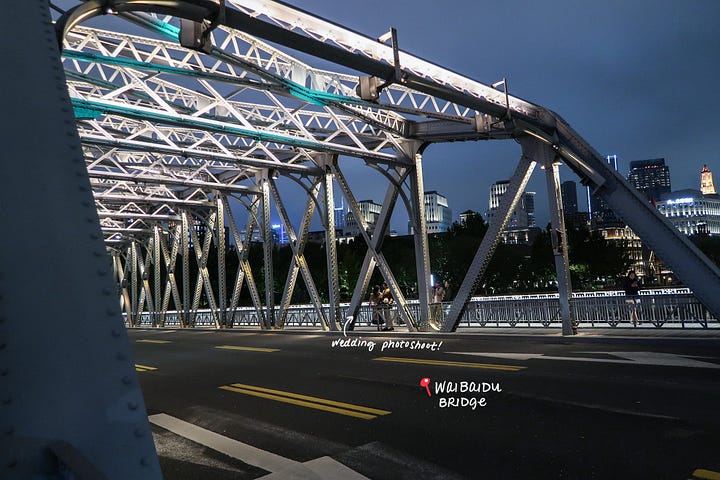
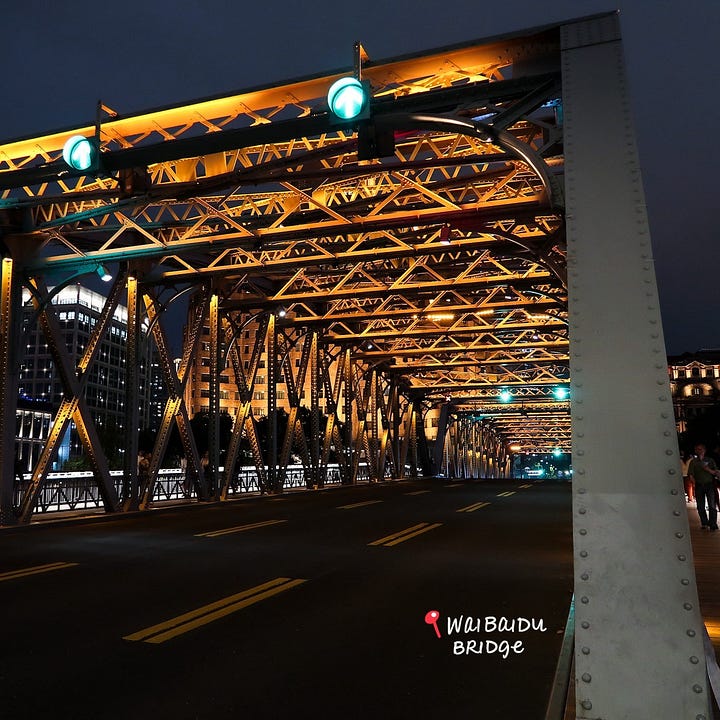
The Somekh Building (沙美大楼, shāměi dàlóu)—also known as the Samet Building, was built in 1921 as a Dinty Moore’s Cafe by Atkinson & Dallas Co. Ltd. and recently completed remodeling in 2022 by SHISUO Design. The new design aims to strike a balance between preservation and renewal, deconstruction and reconstruction, and the history and the present. It is now a hotel that also doubles as a destination for architecture buffs and photographers!
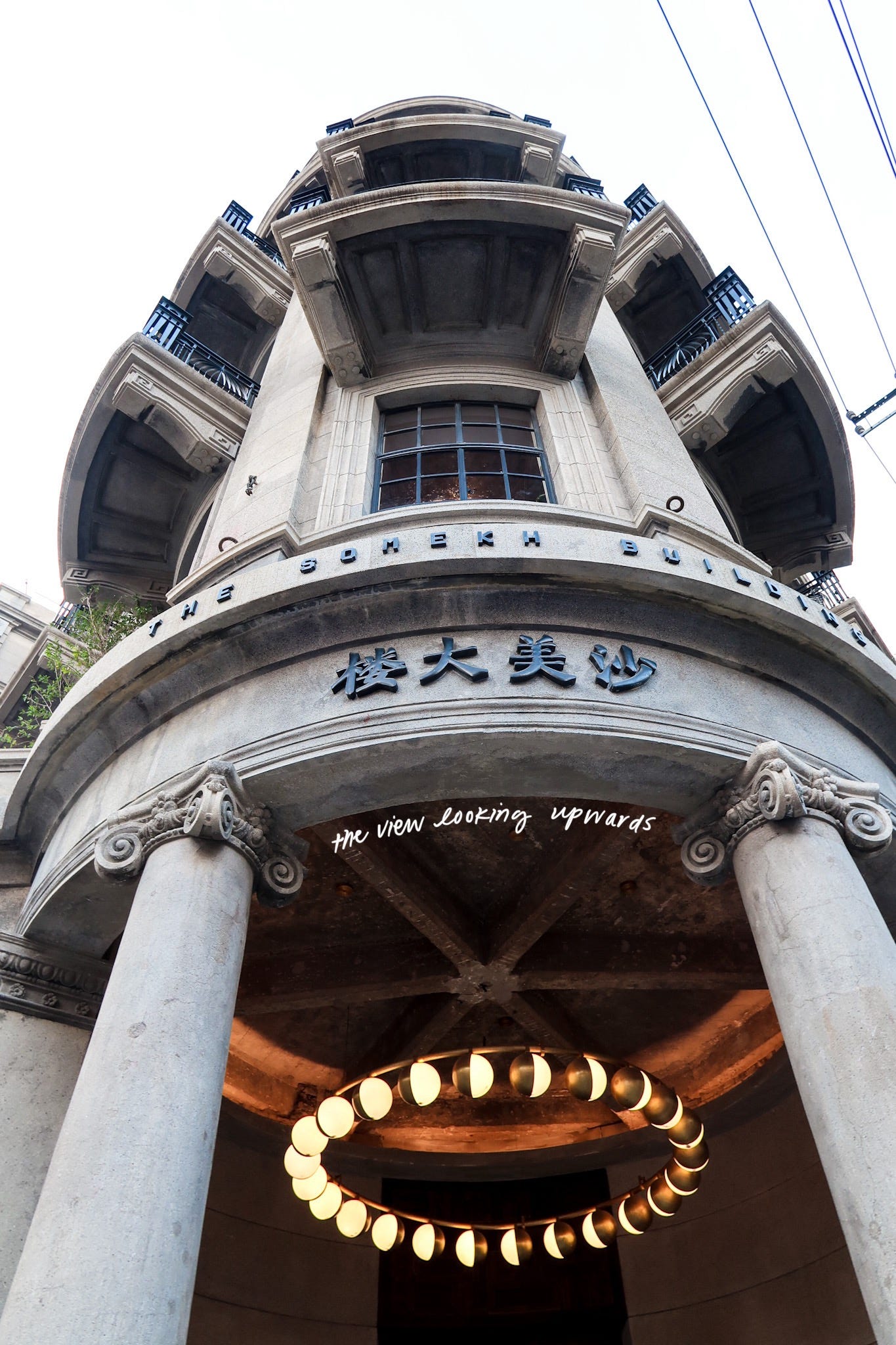
Fuzhou Road (福州路, fúzhōu lù)—is a couple blocks from Nanjing Road, and is known for its higher density of stationery, office, and art supply shops, as well as stores selling art and antiques. This is a niche recommendation for my fellow artists out there who want to buy paint/brushes/art supplies for half the price that’s offered online or in your brick-and-mortar Michaels/Blick. Look for storefronts with the term “艺术品店” (yìshù pǐn diàn) in it 😊
Shanghai Book City (上海书城, shànghǎi shūchéng)—located on Fuzhou Road, this bookstore completed a 2-year remodeling project in 2021 (led by Wutopia Lab) in efforts to draw in a broader community and bring life to Fuzhou Road, and is now known as the “Crystal Palace,” because of how its exterior glitters when light hits the aluminum panels that wrap around the building. Shanghai Book City has always been a cornerstone on my family’s itinerary (we just love browsing bookstores) and our visit this time took my breath away. Post-remodel, every floor has its own architectural intrigue, with embedded storefronts among the book shelves that either sell food, beverages, and products, or showcase art.
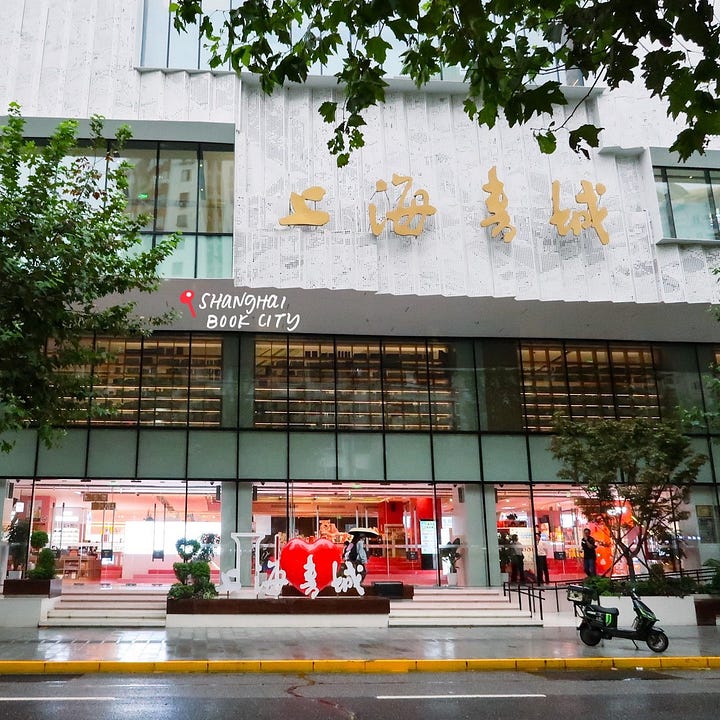
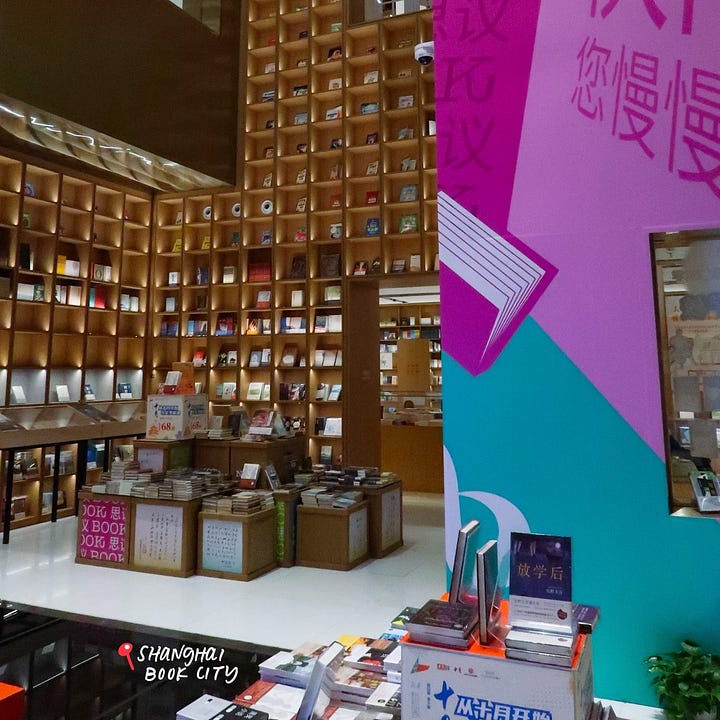
Shanghai Old Street (上海老街,shànghǎi lǎo jiē)—this is an old business street that now has a mix of traditional Chinese-style souvenirs, jewelry, art, and clothing (mostly geared towards tourists) and classic Shanghainese street food (also overpriced compared with the ‘burbs). The architecture of the buildings are charmingly still in the Ming Dynasty style (1368-1644) with their lattice windows and upwardly curved shingled roofs.
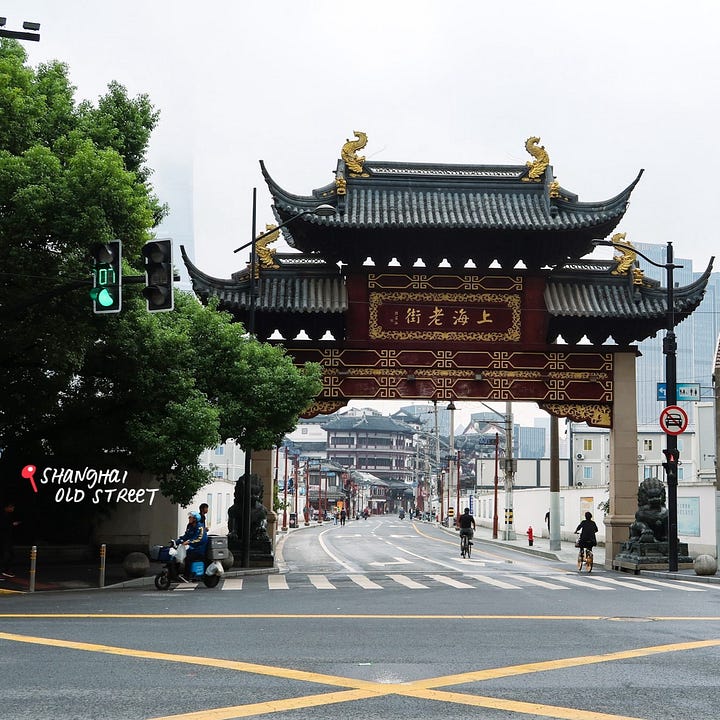
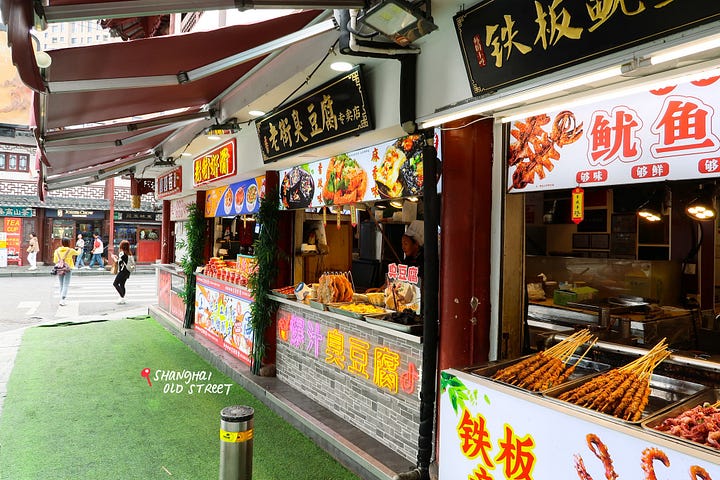
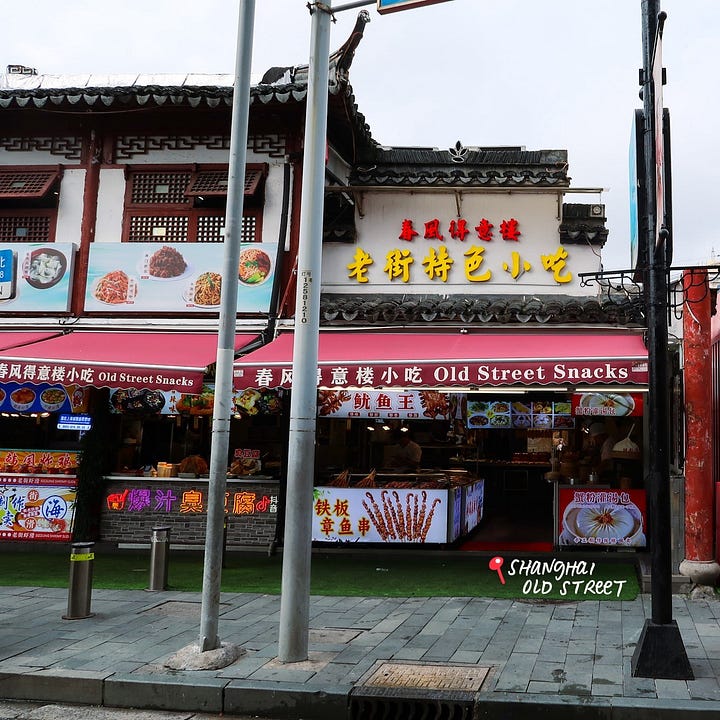
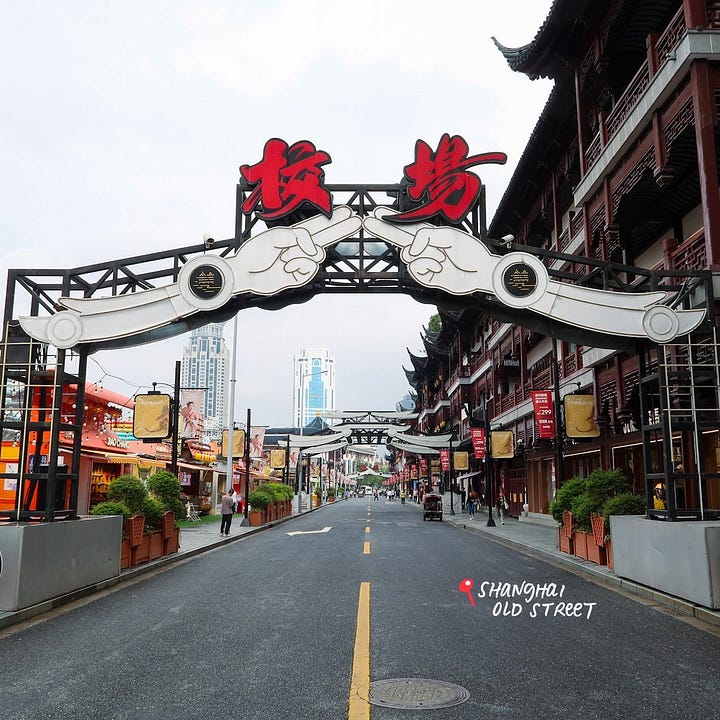
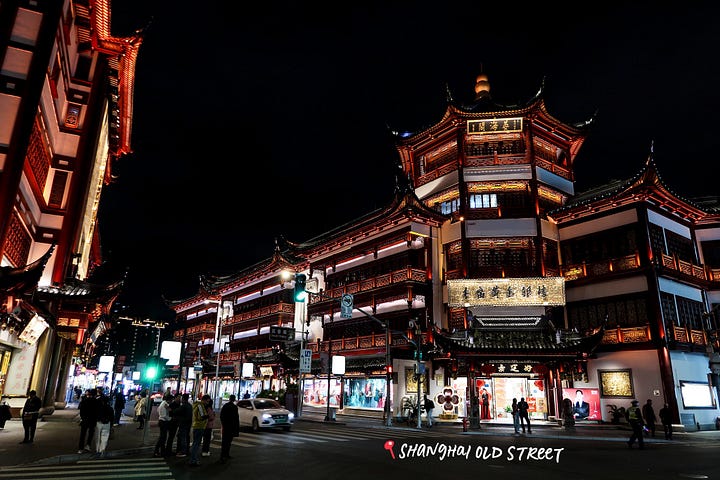
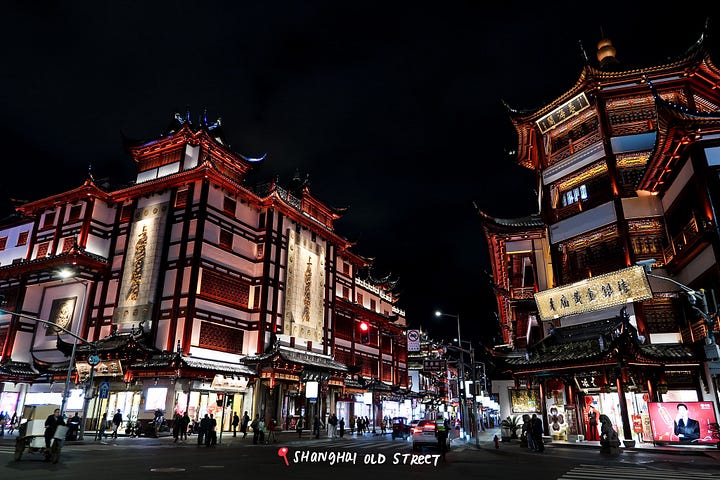
There are a couple of attractions that offshoot from this main street, that I’ll list below 👇
The City God Temple (城隍庙, chénghuángmiào)—built during the Ming Dynasty (1368-1644), the name “chéng huáng miào” has now grown to generally refer to the area around it and not just the temple itself. It is a highly touted destination, with a saying that says “one who fails to reach the temple never reaches Shanghai” (funnily enough, I still haven’t been 👀)
Yuyuan Market (豫园商场, yù yuán shāngchǎng)—also known as Yuyuan Bazaar, refers to the outdoor shopping market that is right outside the Yu Garden and next to the Old City God Temple. The storefronts here are not like what you find in the commercial malls, but are more local Chinese brands selling cultural products, snacks, jewelry, souvenirs, etc. The layout is also not what you would typically expect from an outdoor mall—it almost has a maze-like quality, like you’re exploring the alleyways of a city plucked from the Ming Dynasty. It’s a great place to buy gifts, is stunningly lit up at night, and I just love the traditional Chinese-style architecture!

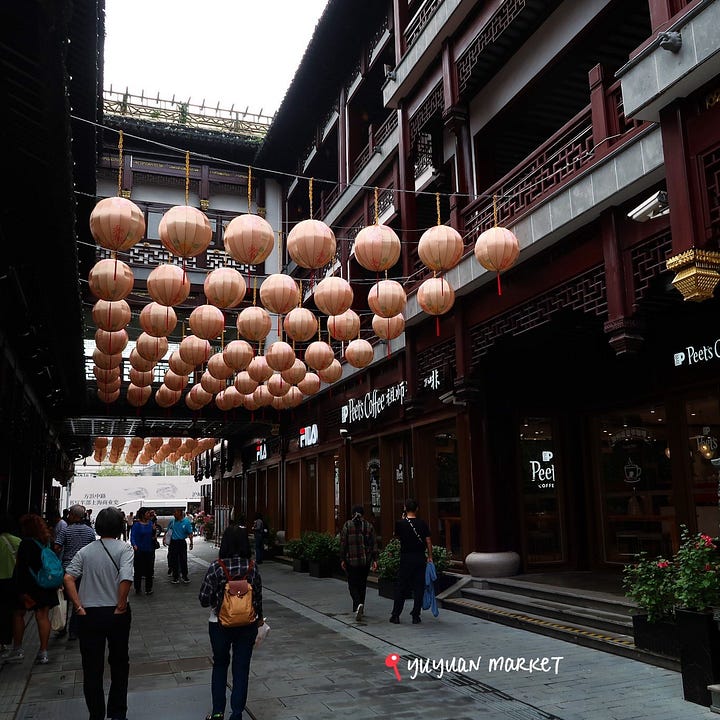
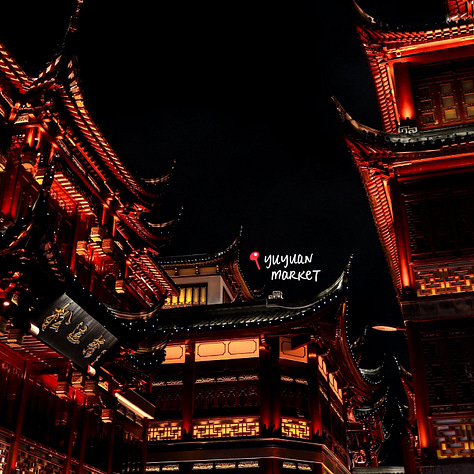
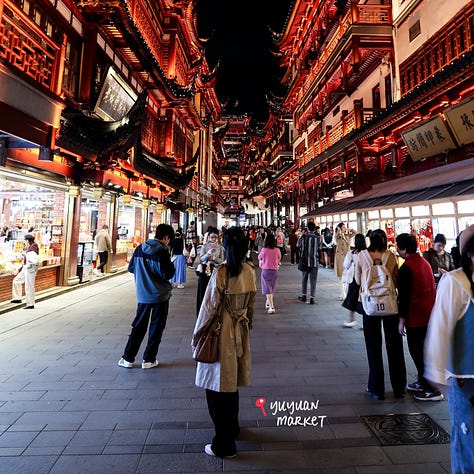
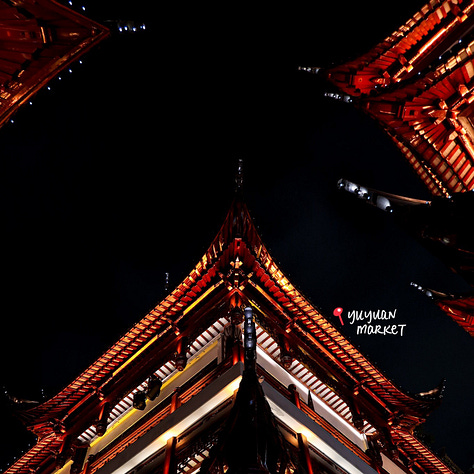
naturally, the lights at night SLAM 💥 Fuyoumen Wholesale Market (福佑门小商品市场, fúyòu mén xiǎo shāngpǐn shìchǎng)—is what I will be using to refer to the multi-story buildings on Fuyou Road (福佑路, fúyòu lù) near Yuyuan where you can buy a variety of wholesale, small commodity products like decor, stationary, make up, handbags, jewelry, electronics, clothing, etc., at very affordable prices (but the quality… can be variable).
Yu Garden (豫园, yùyuán)—also called “Yuyuan Garden” (but that’s like saying chai tea — which means “tea tea” — since yuán means “garden,” but I digress), is a garden first built in 1559, designed in the classical Ming and Qing Dynasty style. It is comprised of numerous pavilions, rockeries, koi ponds, cloisters, bridges, and greenery of the region (bamboo, ginkgo, etc.), and is the largest of Shanghai’s ancient gardens. Admission tickets aren’t free, but worth every penny. You’re able to bring snacks in too, I always spot local aunties munching on straight-up tomatoes and cucumbers 😆
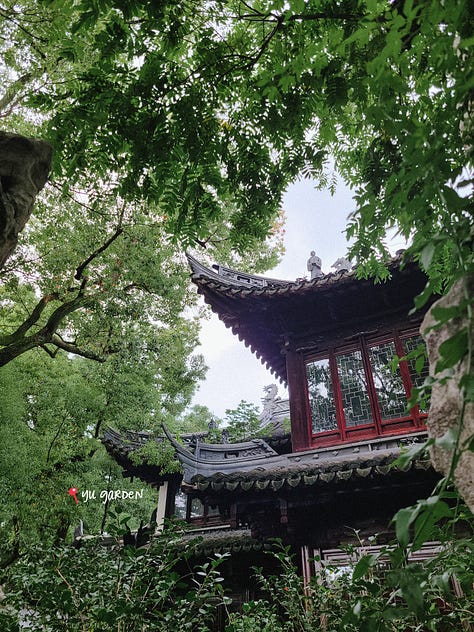
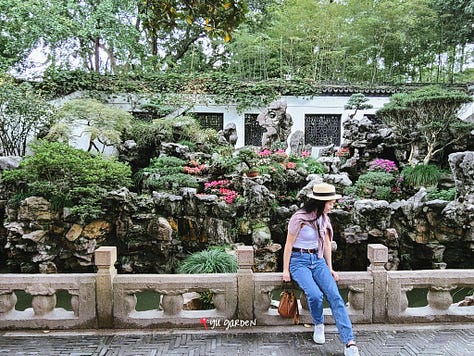
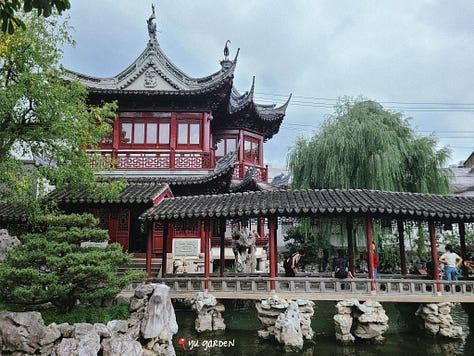
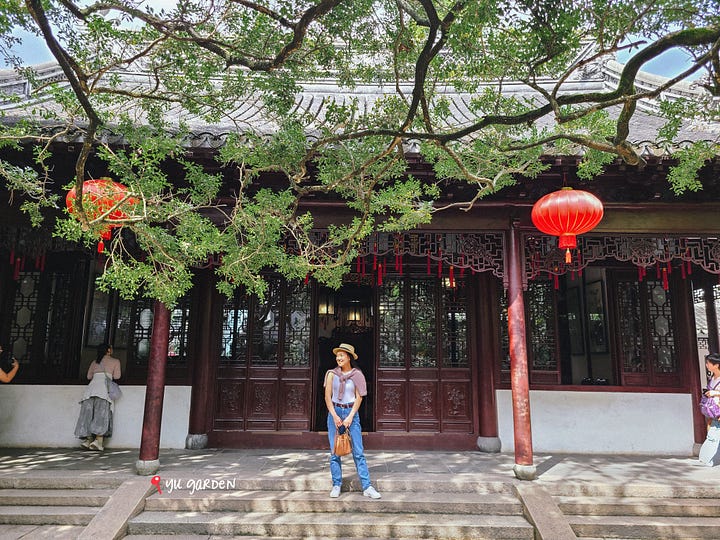
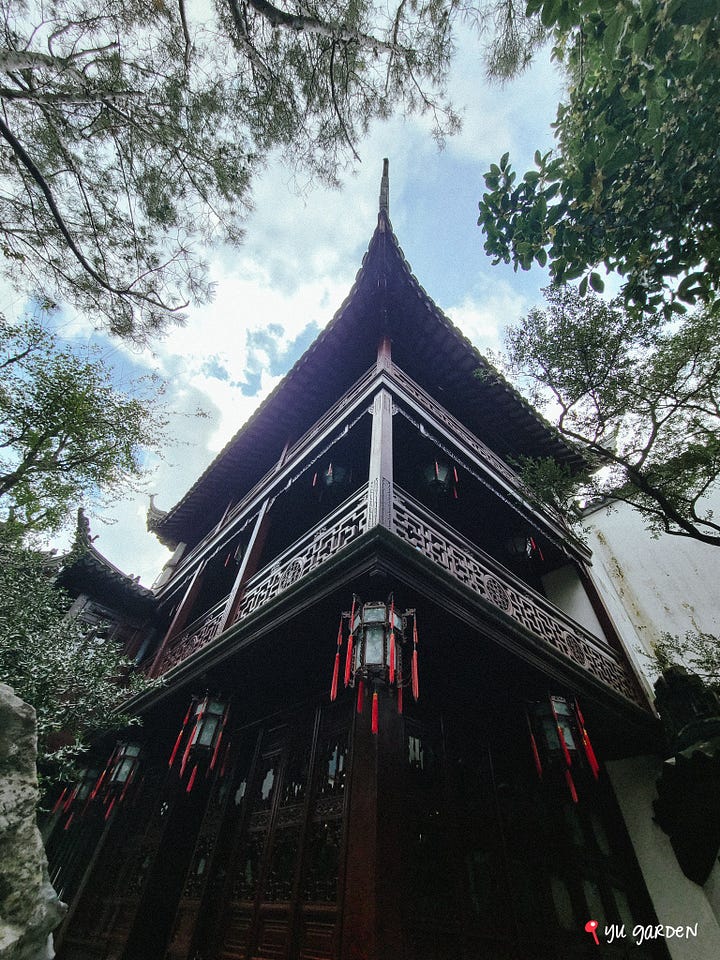
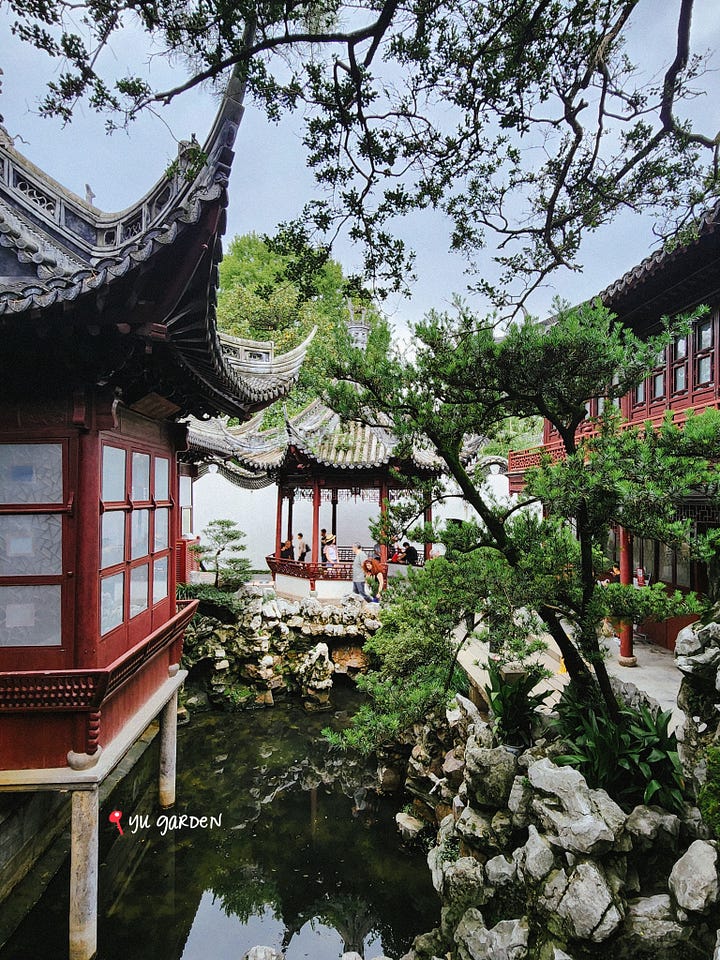
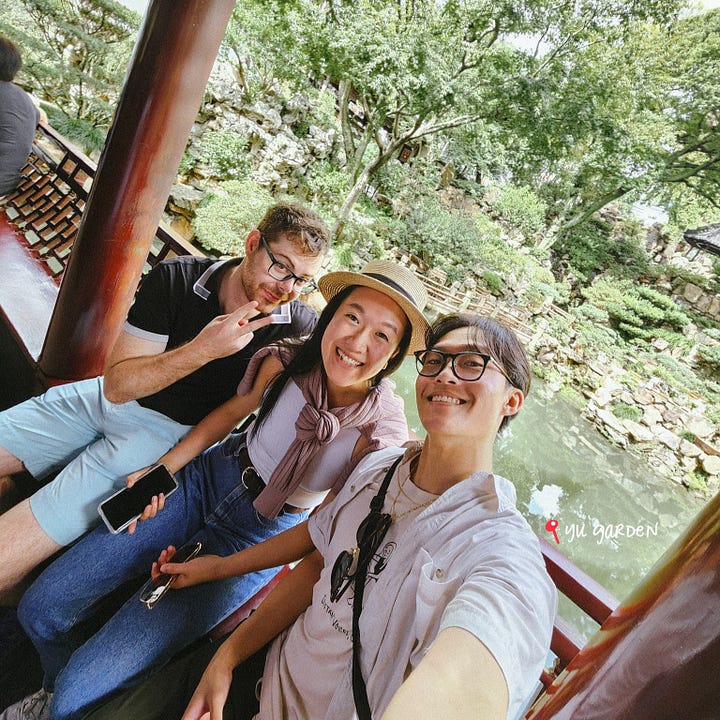
I have too many pictures of this place
Shikumen (石库门, shí kù mén)—literally translates into “stone-framed door,” and is a traditional Shanghainese architectural style that dates back to the mid-19th century. This is less of an individual attraction, but more of a pattern you’ll notice in buildings of specific neighborhoods. Specific areas where you’ll see this style of architecture and are worth going to are:
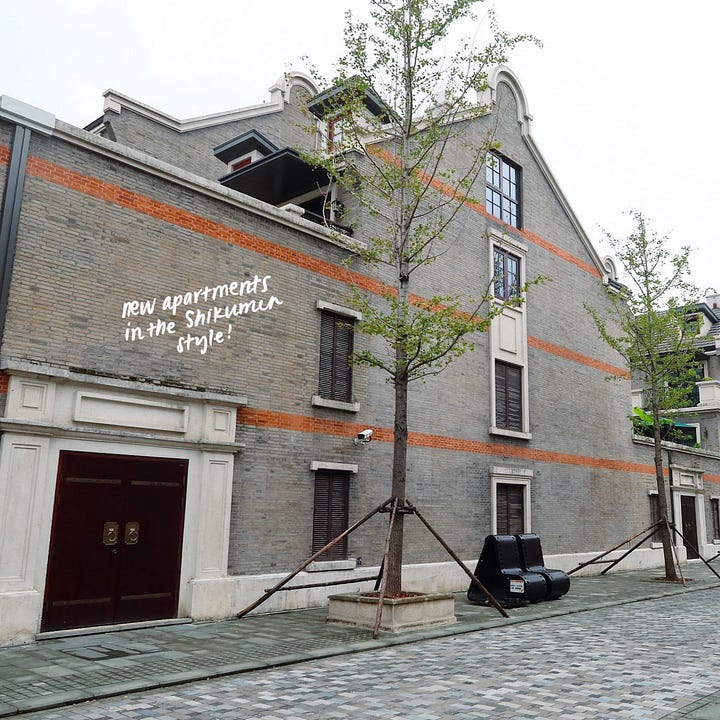

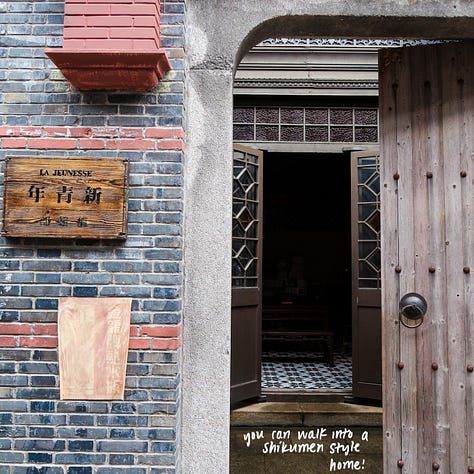

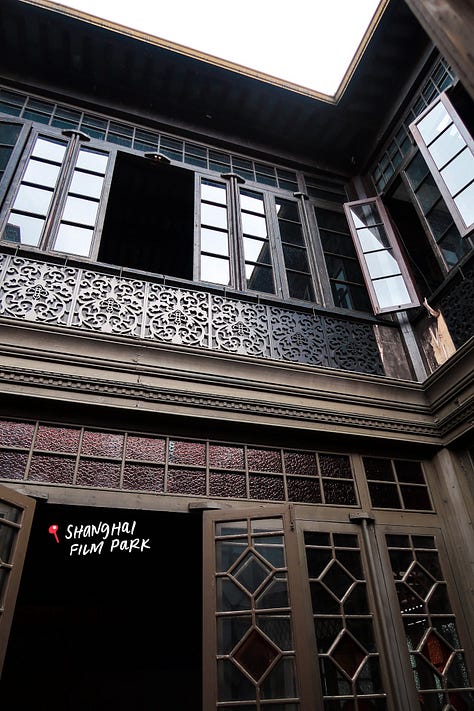
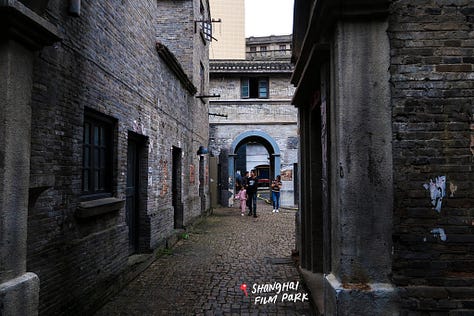
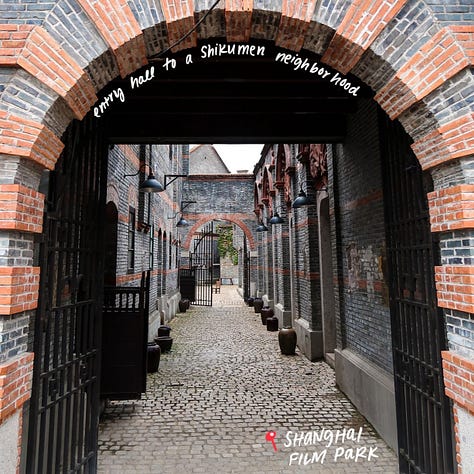
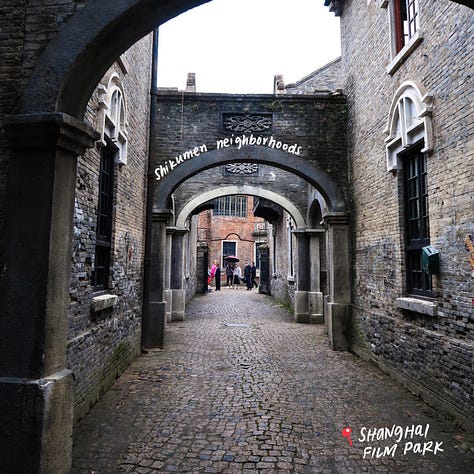
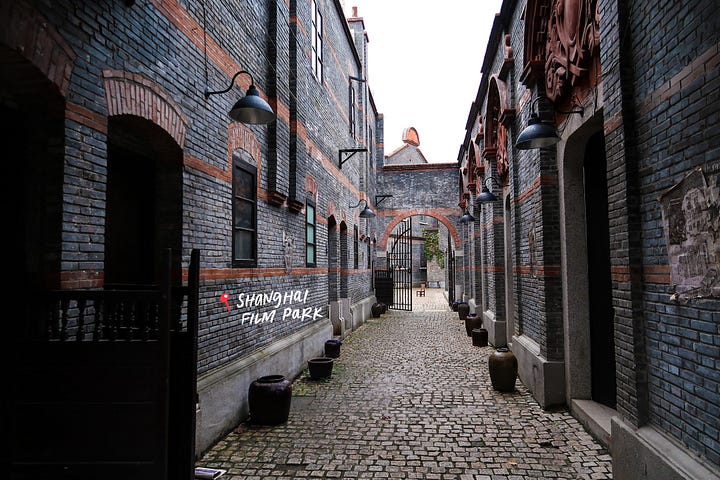
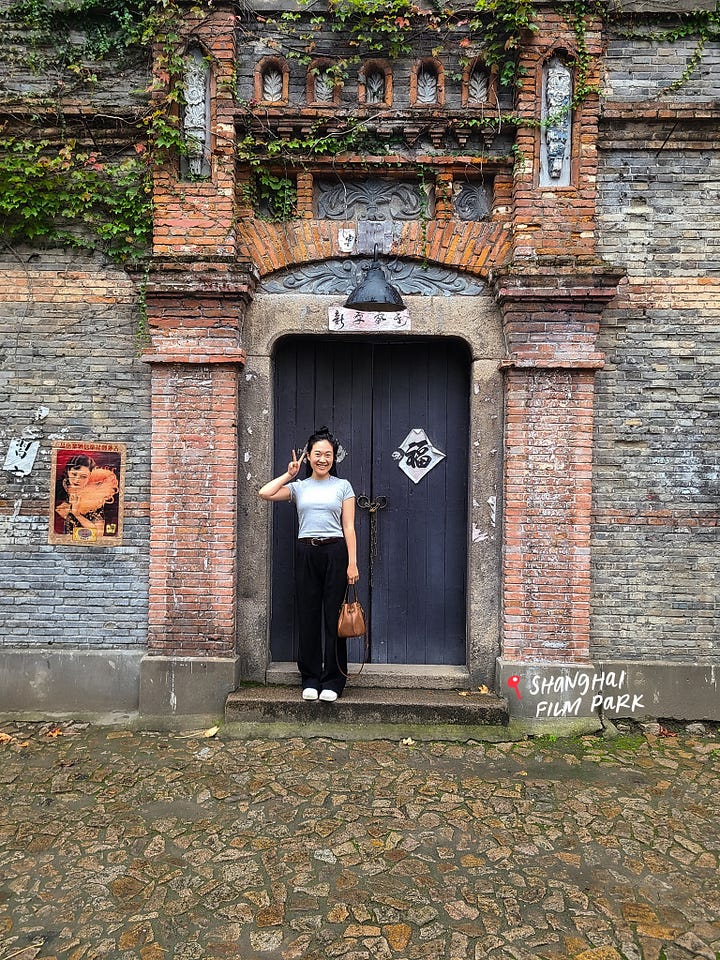
Tianzifang (田子坊, tiánzǐ fāng)—this is an outdoor shopping market set in the enclave of a traditional Shanghai neighborhood, complete with criss-crossing clothing lines overhead and a web of maze-like alleyways for you to meander through. It’s all very whimsical and feels locally authentic in the way you can haggle with the shopkeepers. The storefronts range from cute boutiques selling locally handmade items and souvenirs, to traditional clothing and jewelry, to local Shanghainese snacks and body care products, to trendy cafes and bars. I always leave finding all of my gifts for family and friends from here.
pro tip: a lot of the vendors have multiple storefronts selling the same products scattered throughout this maze of a mall, so be encouraged to comparison shop and don’t feel like “this is the only shop where I can find X.” Chances are that if you turn the corner, you’ll see another storefront seeing the same thing!
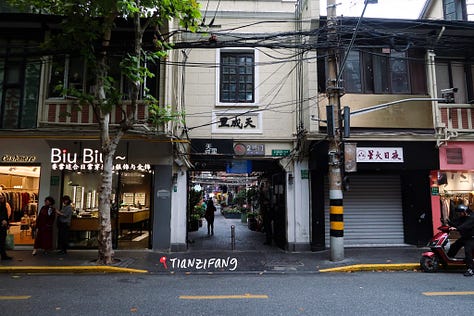
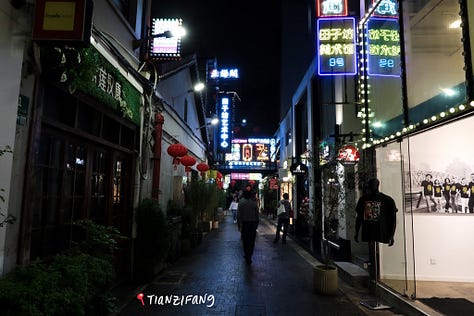
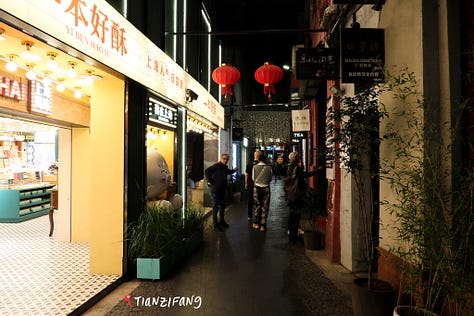
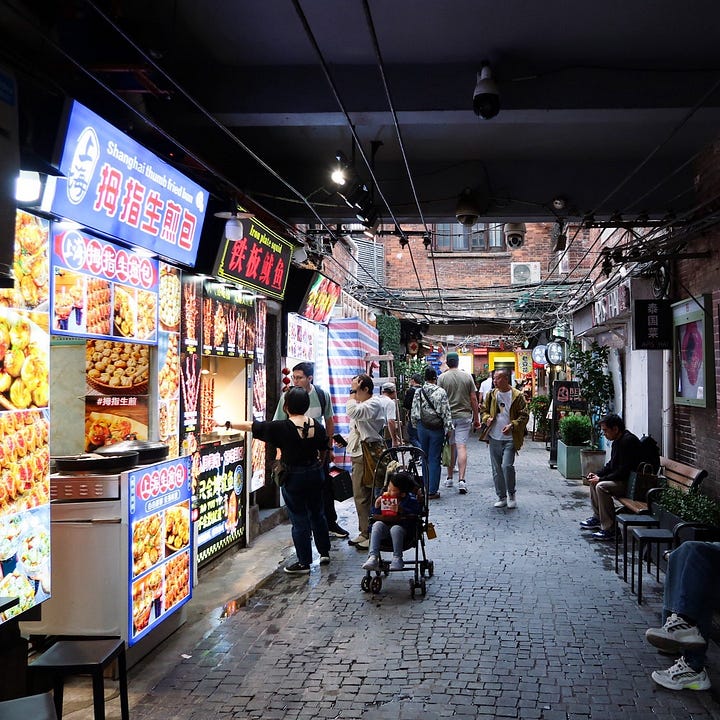
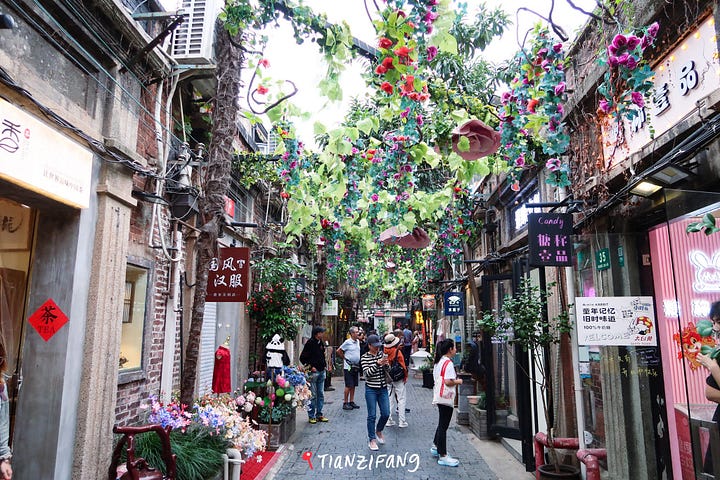
Xintiandi (新天地, xīntiāndì)—was one of the most bustling commercial areas in old Shanghai in the 1920s and 1930s. In 1998, it was transformed into the vibrant hub it is today, featuring a “South Block” and a “North Block.” The South Block contains modern shopping plazas, luxury malls, high-end boutiques, and upscale restaurants, cafes, and bars that offer a variety of international cuisines. And the North Block preserves more of the Shikumen-style architecture. As you walk through Xintiandi, you truly get to experience historical heritage harmoniously existing next to shiny modernity.
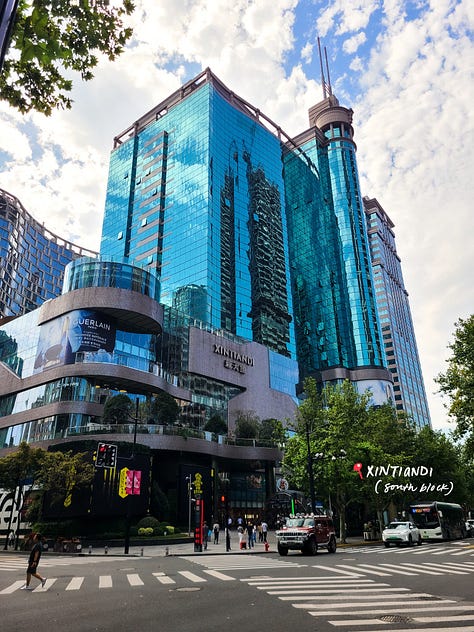
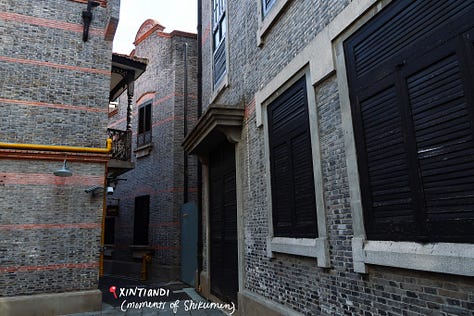
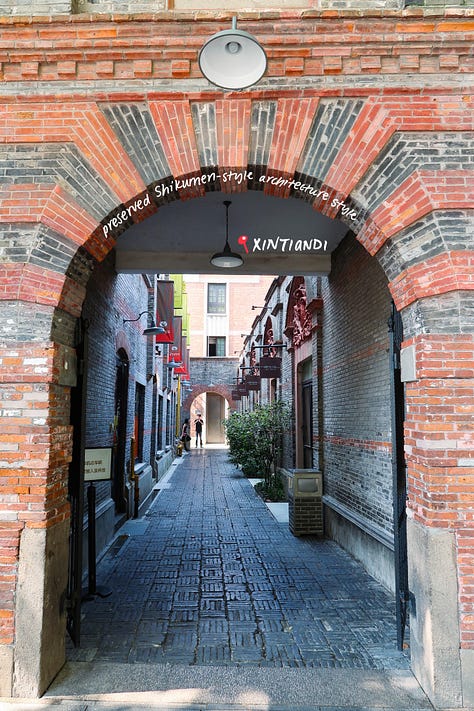
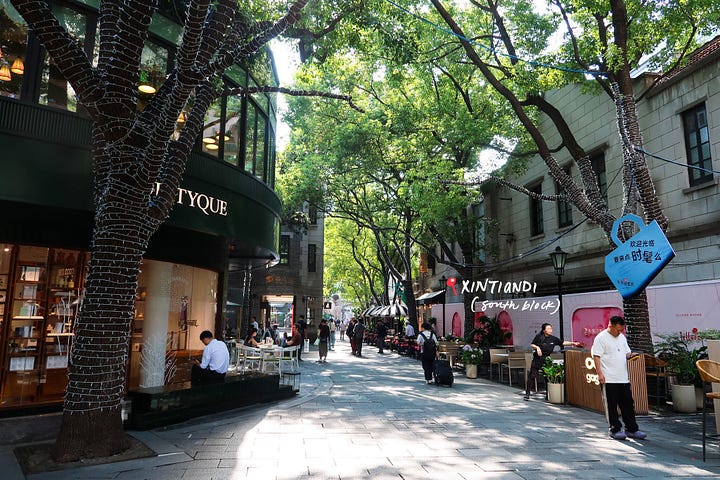
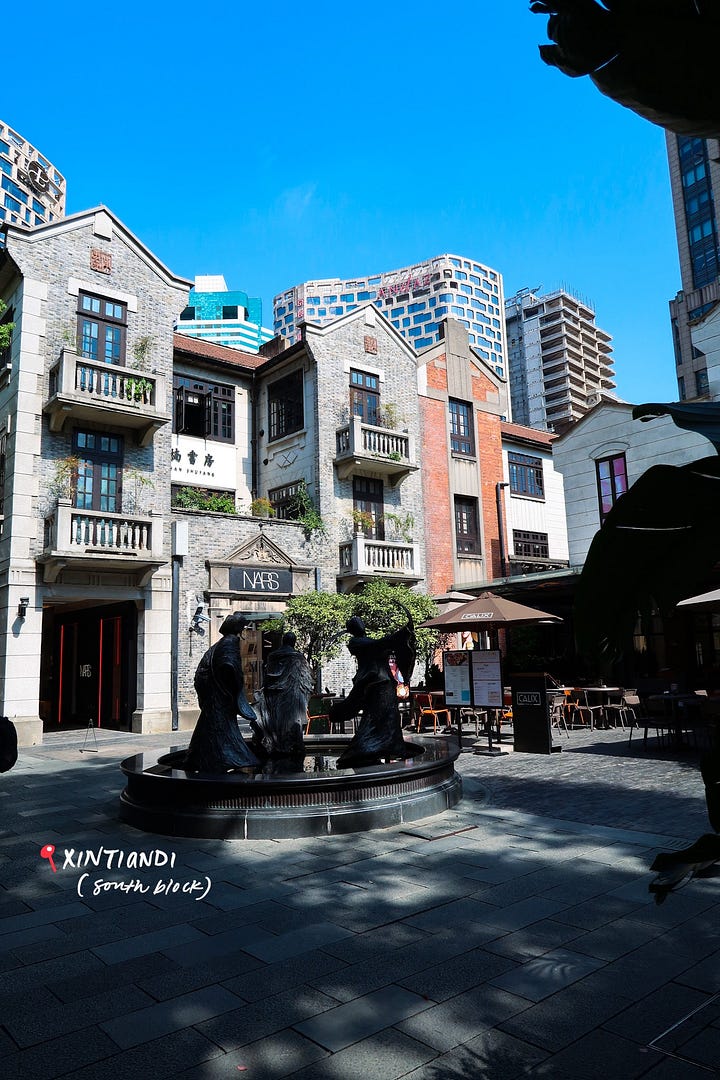
Site of the First National Congress of the Chinese Communist Party (中国共产党第一次全国代表大会会址, zhōngguó gòngchǎndǎng dì yī cì quánguó dàibiǎo dàhuì huì zhǐ)—this is the preserved location of the first National Congress of the Chinese Communist Party that took place in July 1921. Since then, it’s become a renowned historical attraction in Shanghai, and is located next to Xintiandi. We stumbled upon it while looking for a coffee shop, and found quite a crowd gathered for a special event.
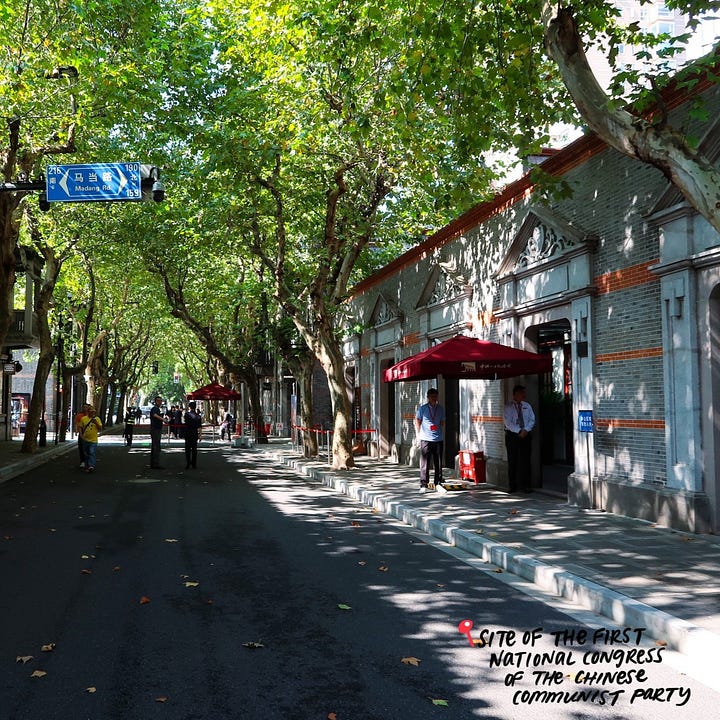
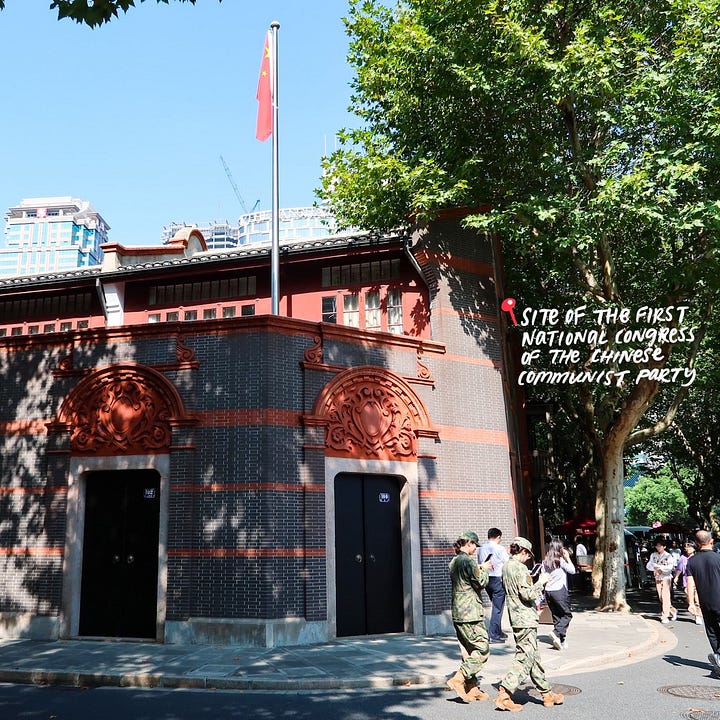
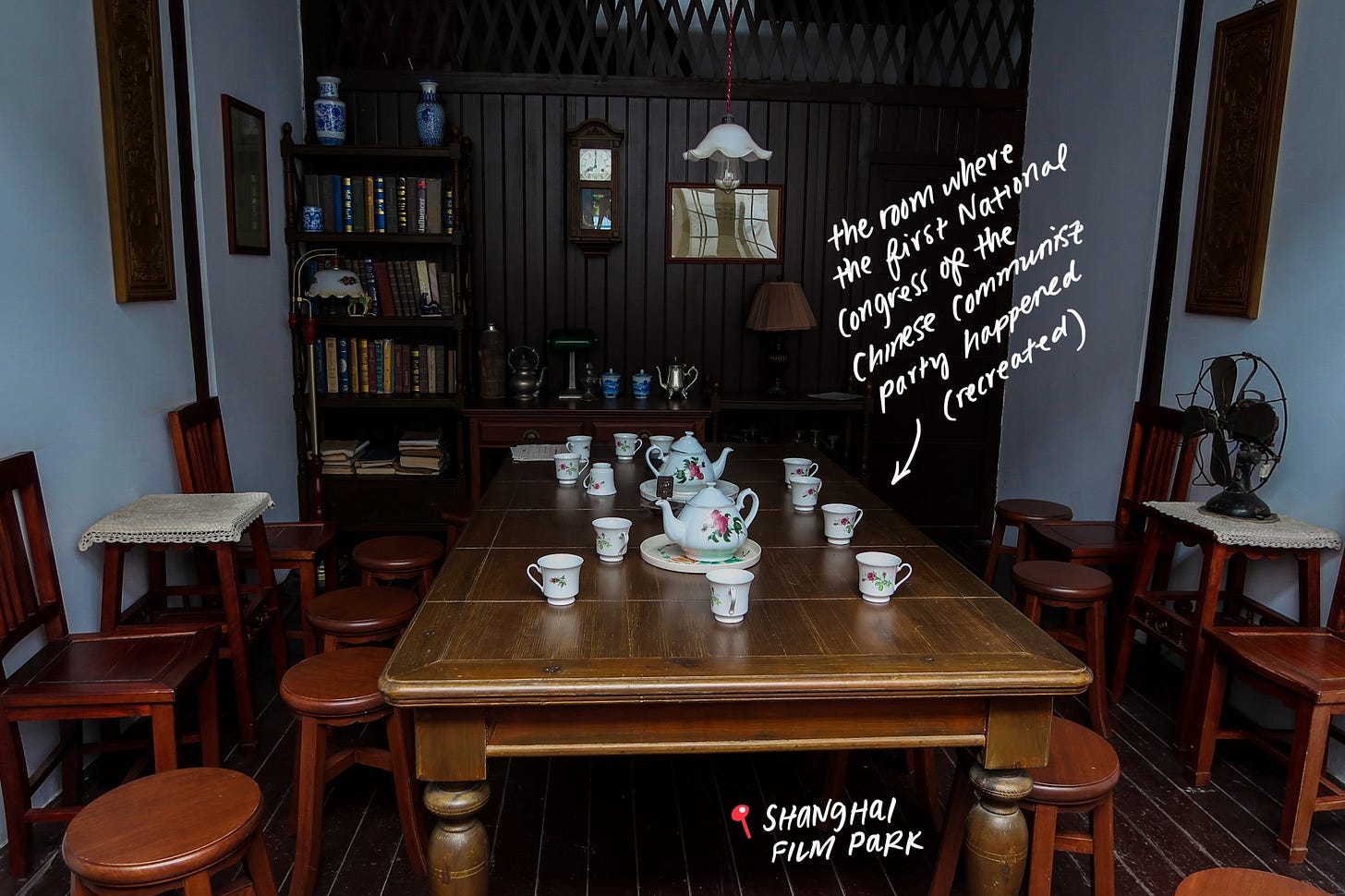
Minhang District (闵行区, mǐnháng Qū)
{I haven’t explored yet, but noting down for next time}
I read on Rachel Gouk’s blog, Nomfluence, that this district houses Shanghai’s K-Town, and has a great selection of Japanese and Korean restaurants. Plus, a Korean bathhouse to boot!
Songjiang District (松江区, sōngjiāng qū)
{considered in the outskirts of Shanghai, but this park is so worth it!}
Shanghai Film Park (上海影视乐园, shànghǎi yǐngshì lèyuán)—also known as the “Shanghai Film Shooting Base.” This was established in 1992 and is a working film and television studio containing full-scale replicas of a number of Shanghai’s landmarks modeled after the 1930s time period (it has provided the backdrop for over 430 films and 980 TV dramas!). As you walk through the park, you’ll also pass costume and prop warehouses and photography studios, where you can pay to get hair & make up done of that time period and get a mini photoshoot. While this theme park is a bit of a trek to get to from the city center, I loved everything about it: the feeling of teleporting back in time and getting immersed in the world of cinematic production is something you can’t find anywhere else, and it was so cool to be able to “check out” all of Shanghai’s notable landmarks within the span of 3 hours 💥
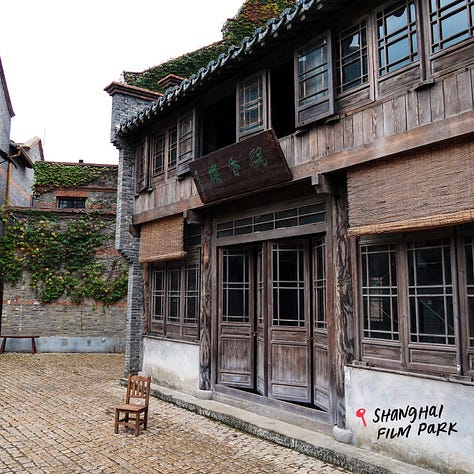
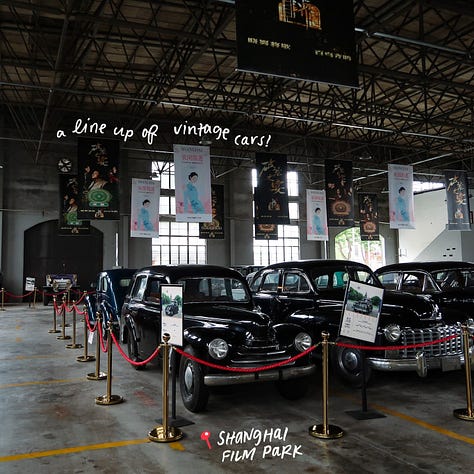
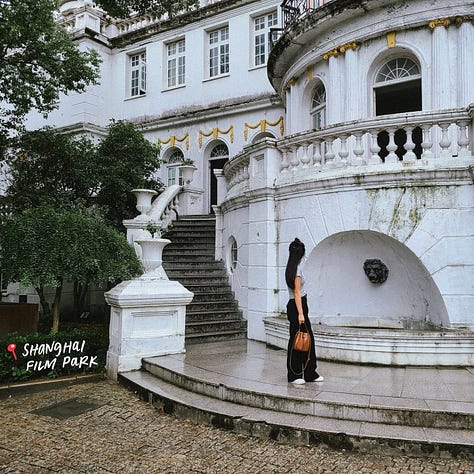

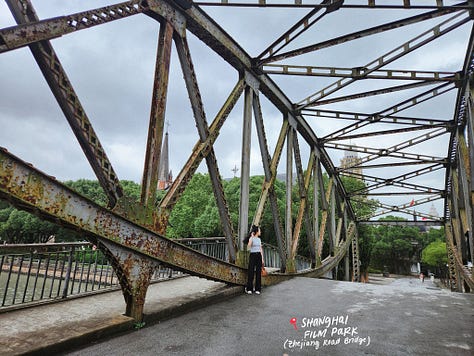

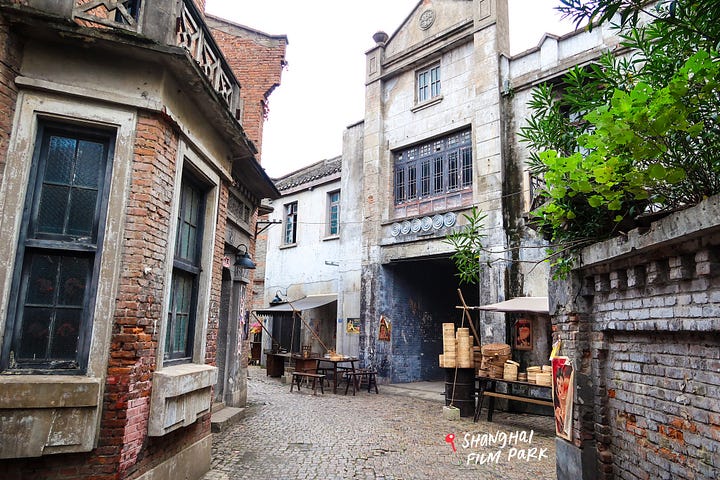
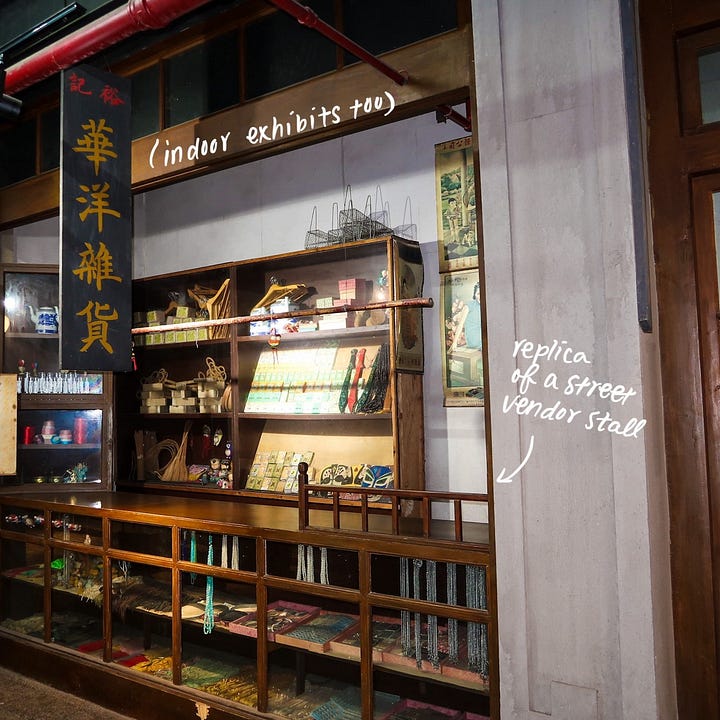
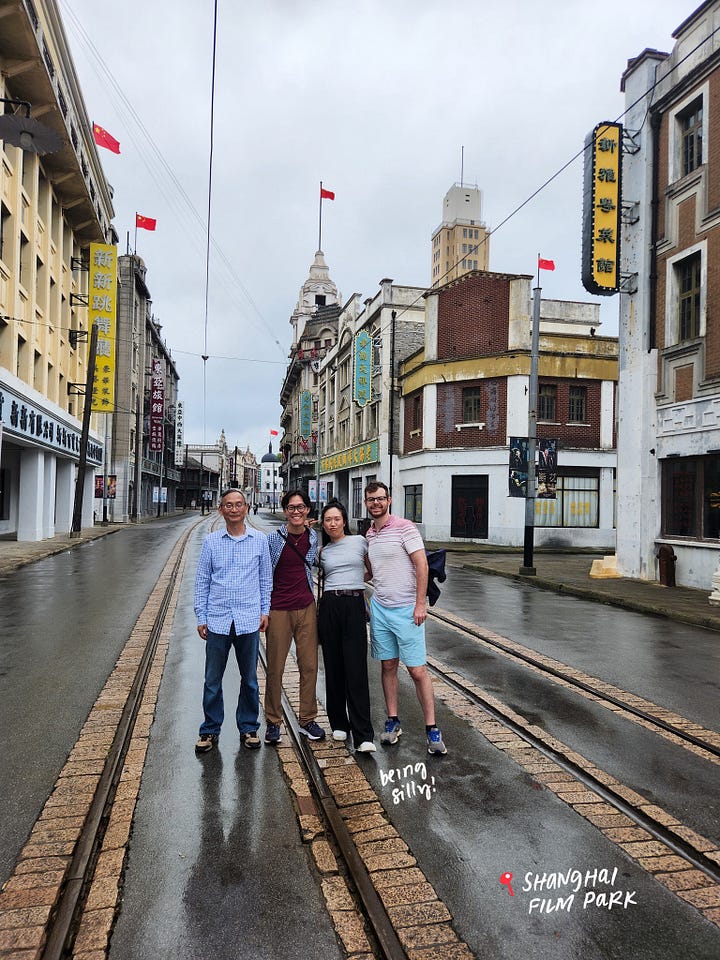

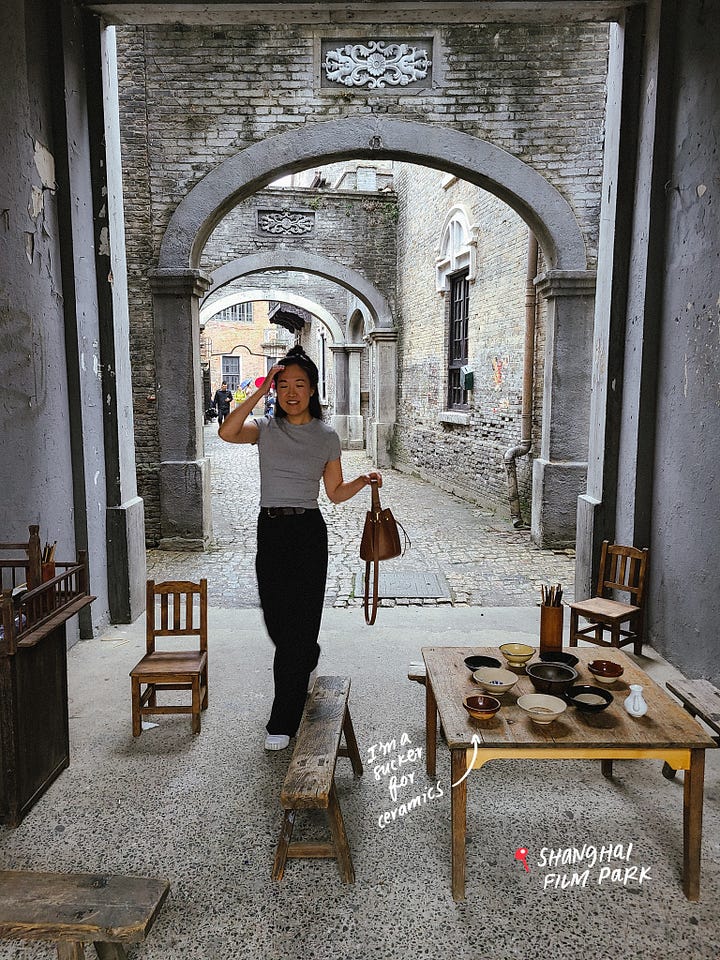
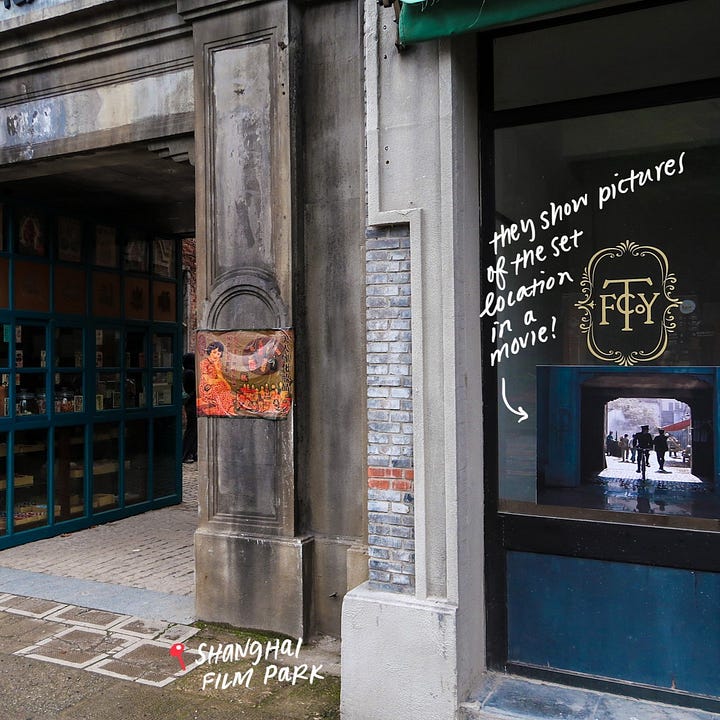
Zhujiajiao (朱家角, Zhūjiājiǎo)
{also known as “Zhujiajiao Ancient Town,” located in the Qingpu District of western Shanghai}
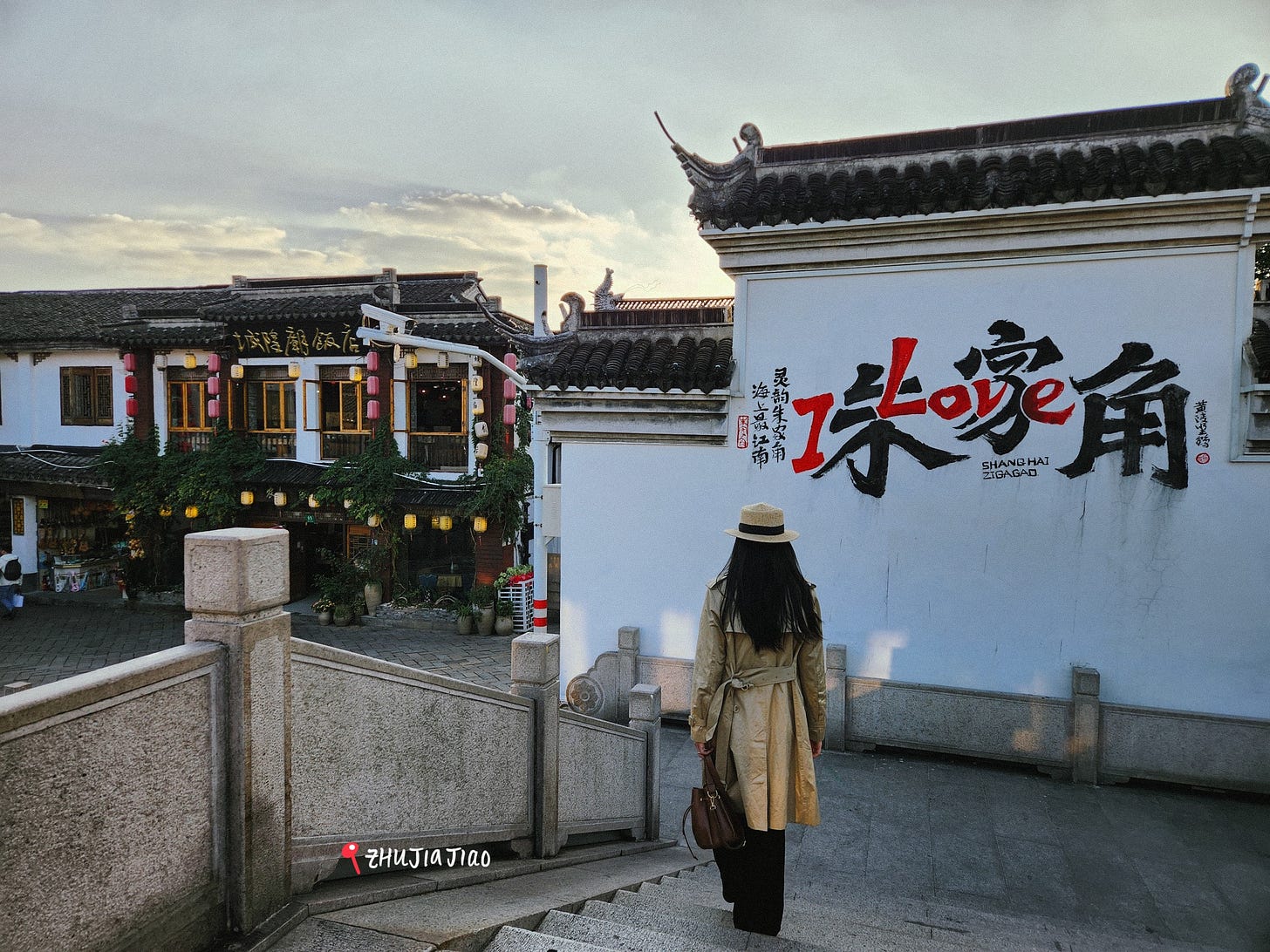
Originated during the Song Dynasty, this well-known water town has a history spanning 1,700+ years and is often monikered the “Venice of Shanghai” for its intricate canal systems and charming stone bridges. The layout of the town has the feeling of Yuyuan Market multiplied tenfold, in its traditional Chinese-style architecture and winding alleyways. The admission isn’t free, but they have different ticket options depending on what you’re interested in seeing.
how to get there—Since it’s about 30 miles from Shanghai’s city center, you’ll have to take a car or ride the metro (which is what we did). Taking the metro is relatively easy, and not too far a walk from the entrance to Zhujiajiao, so I highly recommend this option!

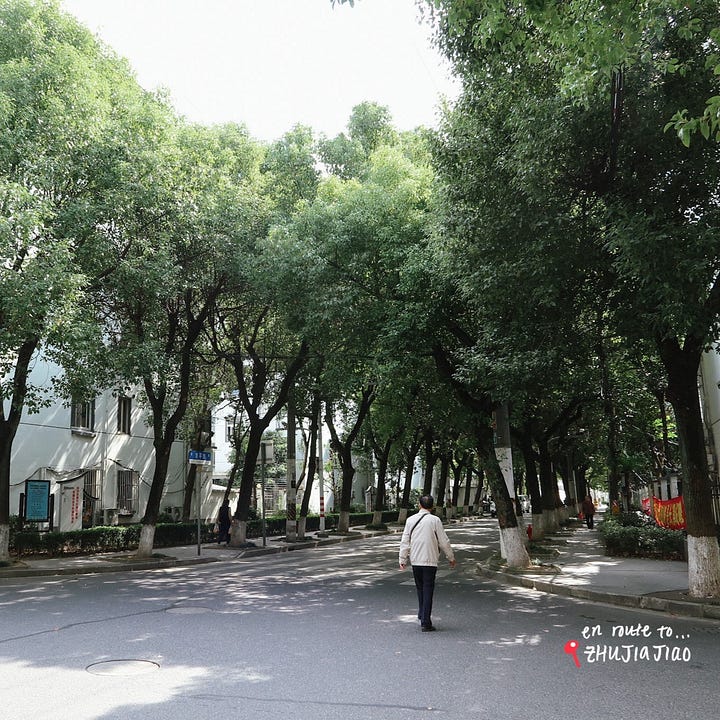
scenery on the way to Zhujiajiao what to do—there are art galleries, gardens, Buddhist temples, etc. you can visit and a canal boat ride you can take, but every time I visit I’ve been pretty content with walking the streets, admiring the architecture, and browsing the vendor stalls. The food stalls here are super generous with their samples, and there’s such a large variety of homemade authentic dried fruits, condiments, pickled things, snackish items and cakes, and street food. A great place to explore another facet of the Shanghainese food scene :)
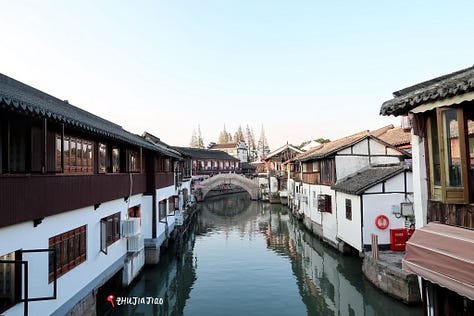
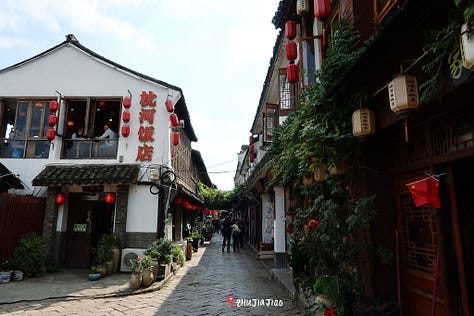
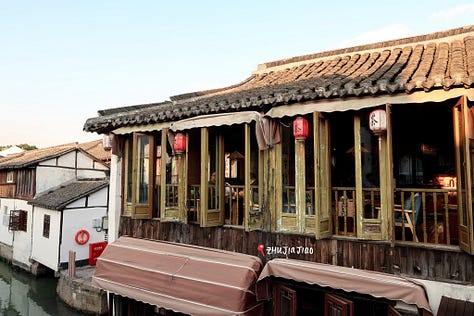
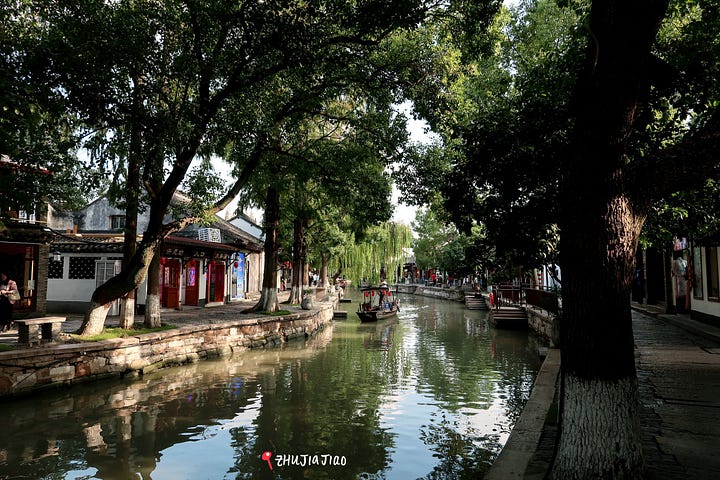
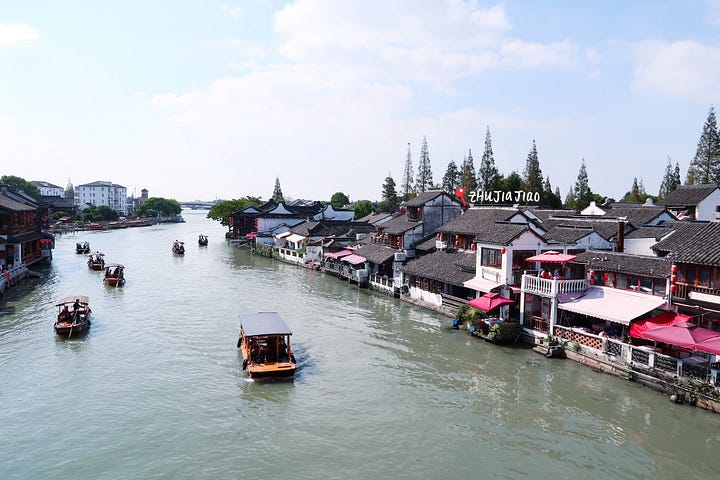
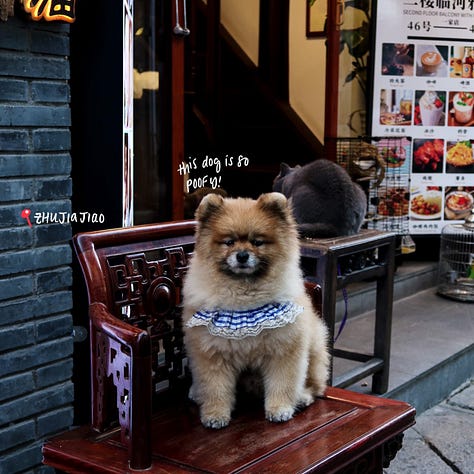
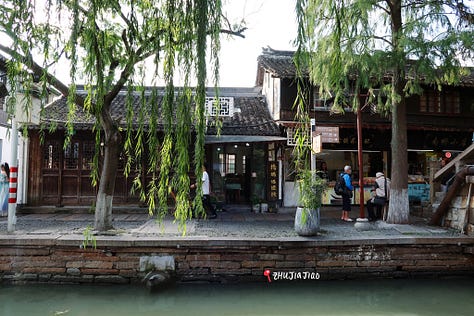
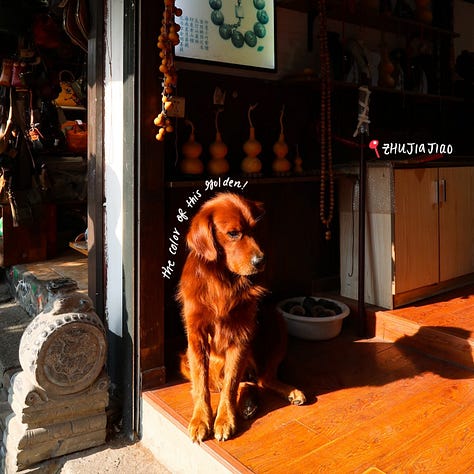
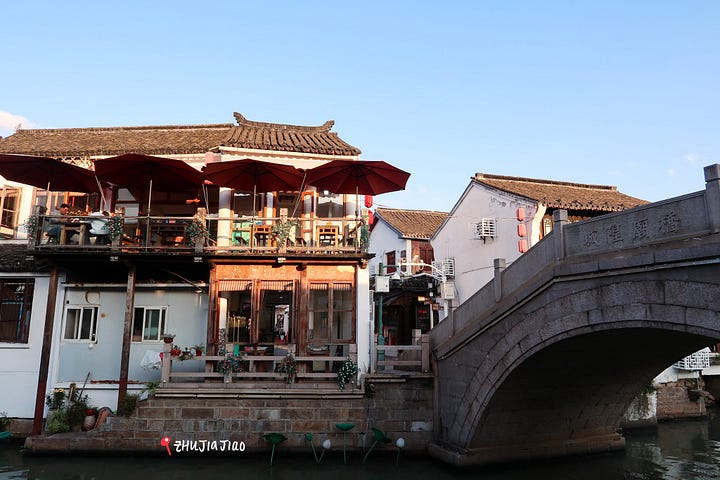
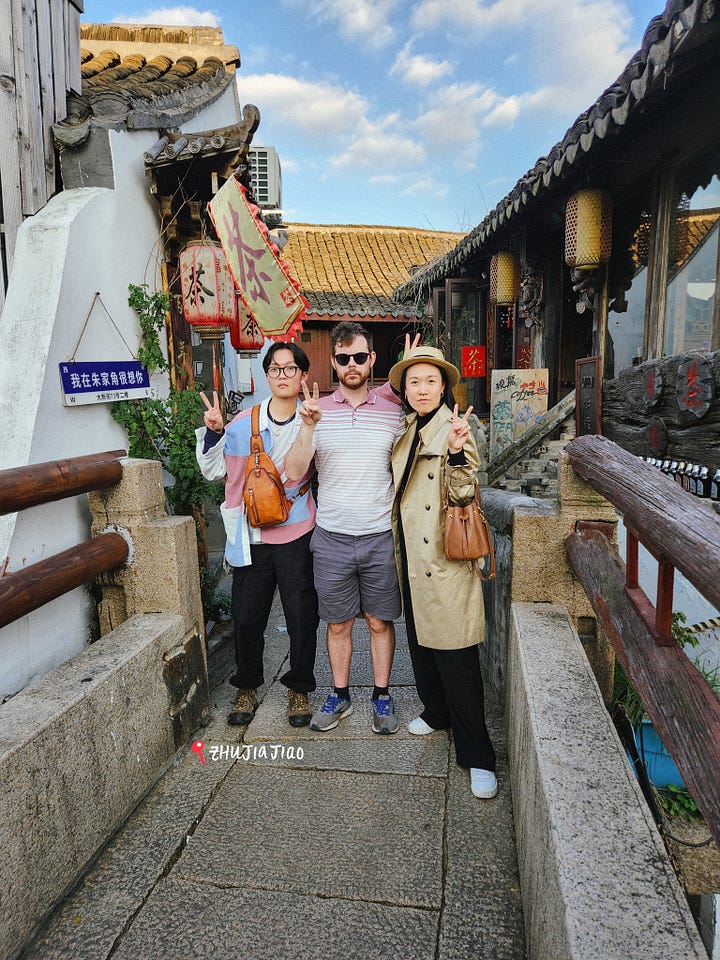
also have too many pics from this place that I'll spare you from City God Temple (城隍庙, chénghuángmiào)—if it’s not too crowded, this is worth checking out! Very serene ✨ it probably took us 15-20 minutes to fully walk through
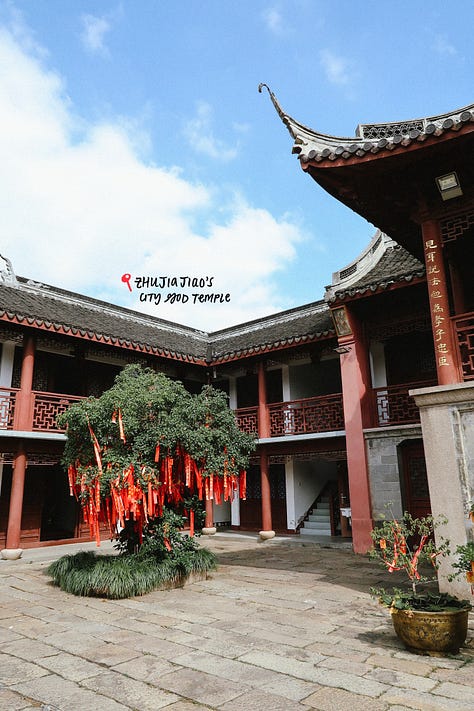

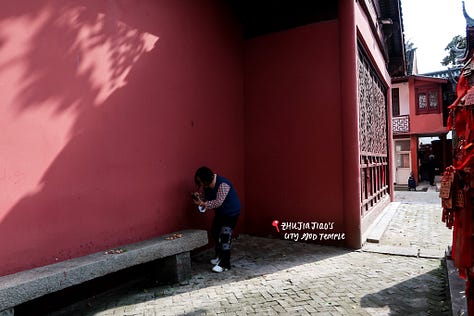
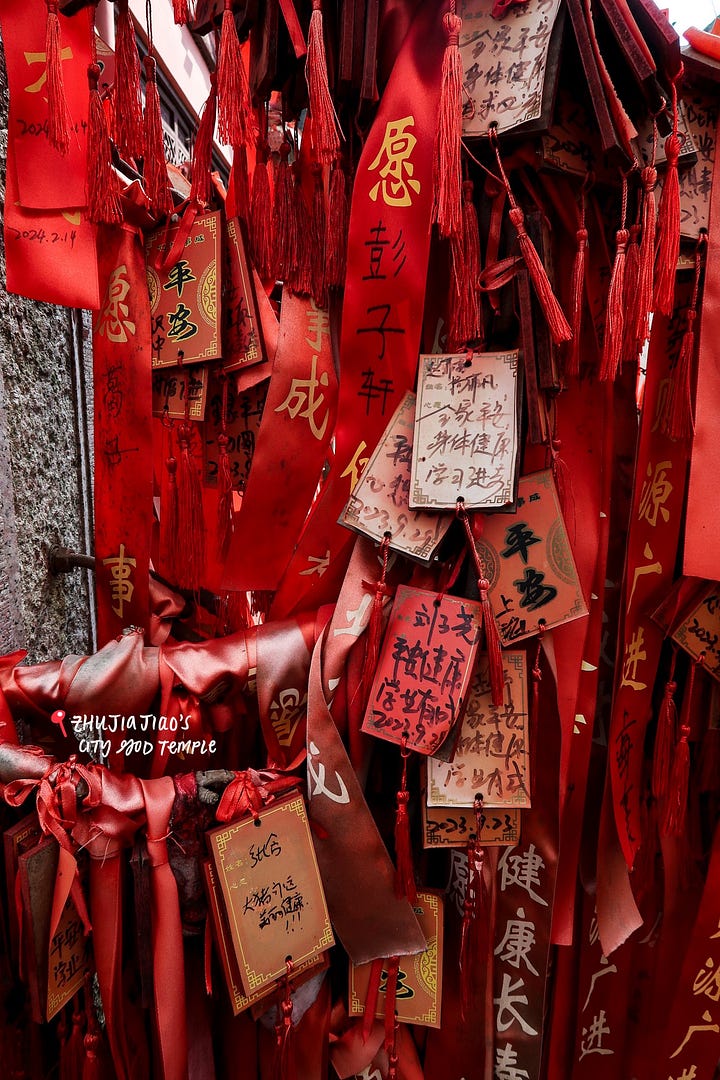
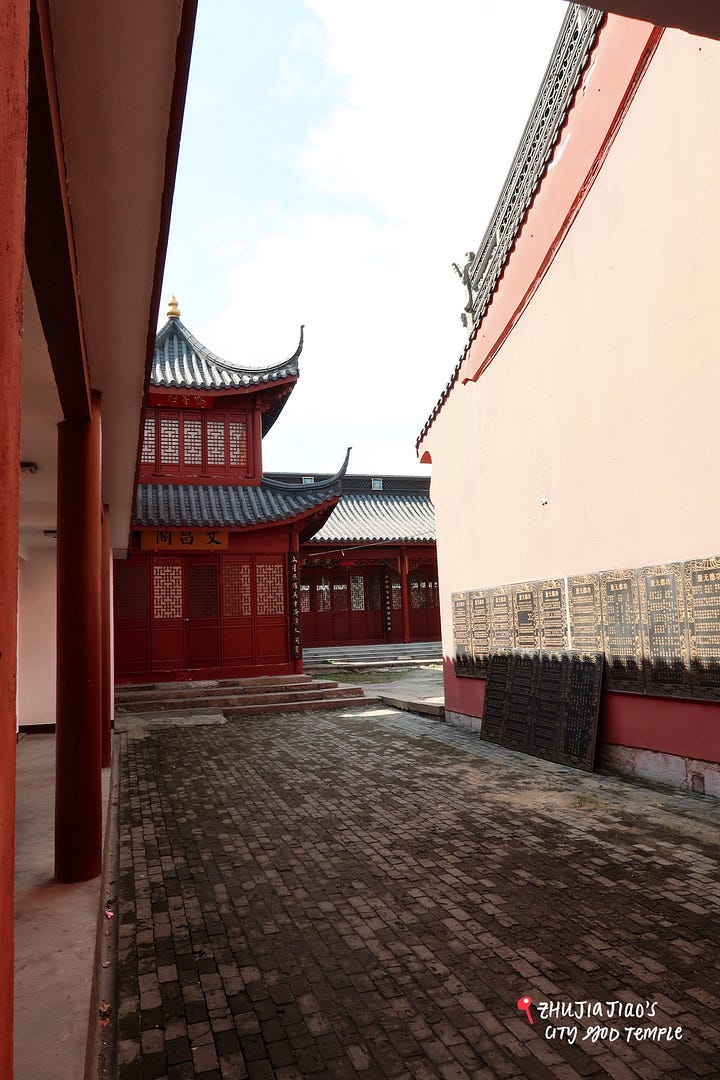
in closing
I hope this helps in planning your own visit to Shanghai! If there are any unanswered questions, please comment below and I’ll try my best to answer. This post is already massive but I’m still going to include an appendix of fun auxiliary things anyway 🥳 thanks for reading ❤️
appendix
(A) a bucket list from a Shanghainese native
Courtesy of my cousin 💕 she loves exploring culture and the arts, and sent me a list of things to do if I wanted to do some more local/non-tourist-y activities. Here’s that list!
get a massage—specifically one from this chain: 感智盲人按摩 (Gǎn zhì mángrén ànmó). The business’ history is very cool—it began by giving visually impaired individuals an employment opportunity, and has since grown to have multiple branches! There’s a location on Wujiang Road (吴江路, wújiāng lù) the Taiguhui store (太古汇店, tàigǔ huì diàn).
watch a Shanghai Folk Opera (上海民间戏曲, shànghǎi mínjiān xìqǔ)—also called 评弹 (píngtán)
visit a monastery (寺庙, sìmiào)—experience the serenity and try the vegetarian food (素斋, sù zhāi) in the temple. Monastery options: Longhua Temple (龙华寺, lónghuá sì), Jing’an Temple (静安寺, jìng'ān sì)
make traditional Chinese incense sticks (中国传统用香, zhōngguó chuántǒng yòng xiāng)—so you can bring home the authentic smell of Shanghai; this is a traditional cultural heritage activity!
ride The Bund boat tour (外滩双层巴士观光, wàitān shuāng céng bāshì guānguāng)—this is a double decker boat that will drive along the Huangpu River so you can view The Bund and Lujiazui
go on a city walk in the French Concession area—a great free activity to do when the weather is nice; on the roads near Wukang Building: Julu Road (巨鹿路, jùlù lù), Changle Road (常乐路, chánglè lù), Fuming Road (富民路, fùmín lù), etc.; mentioned earlier in my post.
(B) a list of helpful blogs/influencers
For better or for worse, I always use Instagram as my starting point when planning a trip, and Shanghai was not an exception! iykyk, then you know that any ol’ Instagram creator or blogger just won’t do. My three criteria for a follow-worthy account: a blog from a persona that is relatable to someone in their 20’s-30’s, whose content is relatively up-to-date, and is also ideally aesthetically pleasing. The list of folks below check at least 2/3 of my criteria:
rachelgouk.com (Nomfluence)—she is based in Shanghai, and her site is food & drink focused, but with lifestyle advice like “Where To Stay In Shanghai: A Guide to the Best Districts”
thetravelingqipao (Instagram)—love the photos and reels she makes, and she seems to always find the coolest hidden gems!
timeoutshanghai.com (TimeOut)—blog ran by a group of writers; currently only covering Beijing and Shanghai. They have fun articles like “The Most Instagrammable Places in Shanghai” and “Shanghai’s Best al Fresco Happy Hours” but the articles can be relatively out-of-date (sadly)
letstraveltochina.com—a Chinese travel blog run by Esther, a writer and content creator documenting traveling in China; she has articles like “Discover 11 Best Shanghai Gardens" and “Top 25 Local Shanghai Dumpling Restaurants of 2024,” etc.
(C) my own Shanghai food guide
The unabridged answer to the question, "How was the food?!" Also known as, a bucket list of food you need to try when you're in Shanghai, but really probably any big city in China. Come check out this menu resource I've put together for you 😊
(D) my Shanghai where-to-eat list
A list of the restaurants we tried in Shanghai 🍴 sharing everything you need to know about our experience, the restaurant's vibe, what we ordered, and if it is overall worth going to. This post will give you a peek into the Shanghai food scene... 👀
(E) my Shanghai travel prep tips
Where I share what goes into getting yourself travel-ready for Shanghai (& China), and how the process was like for me, in hopes that it alleviates any anxiety and stress that comes from not knowing.


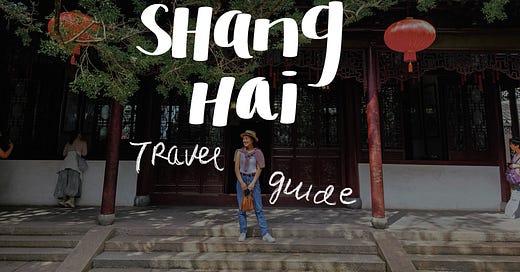


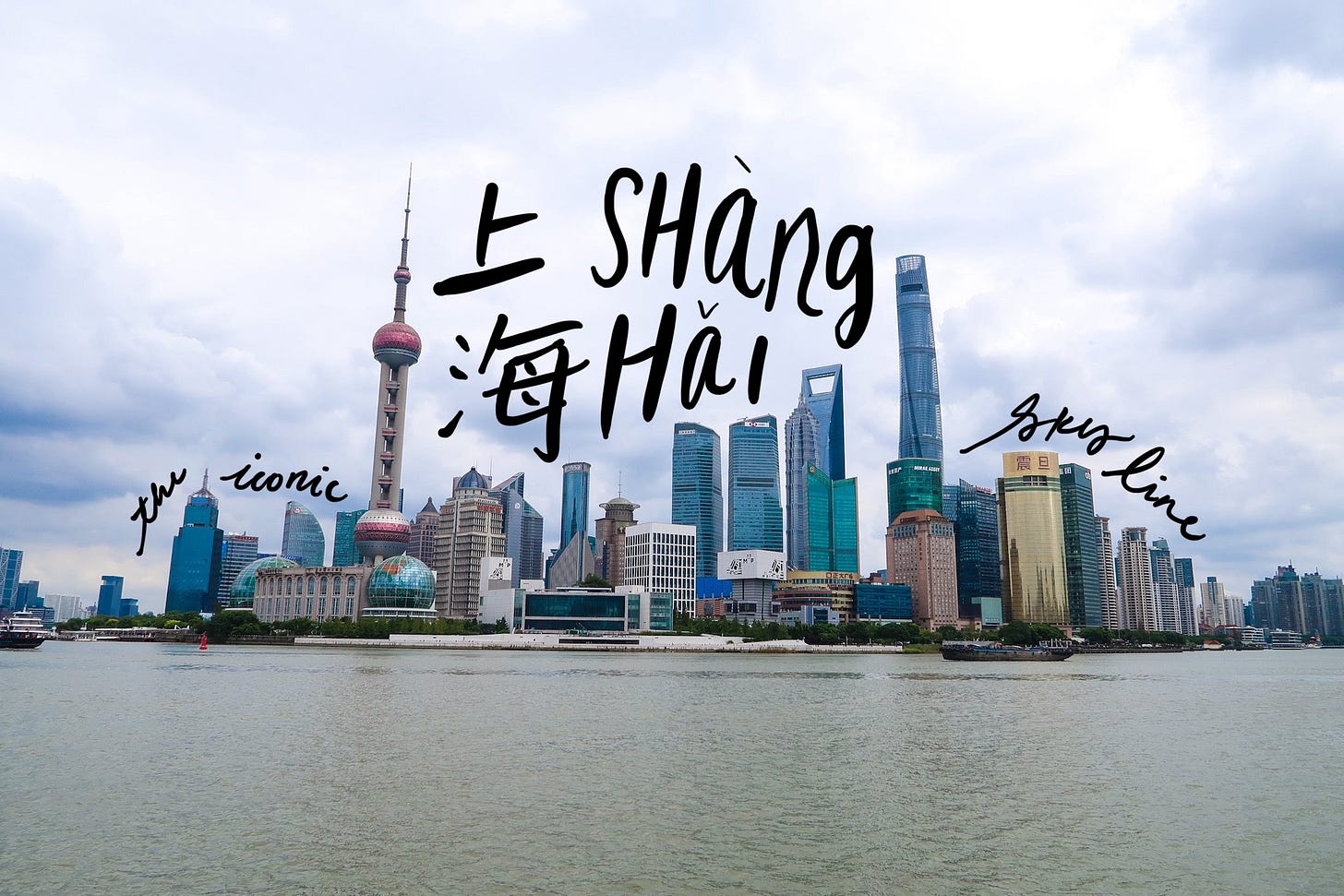
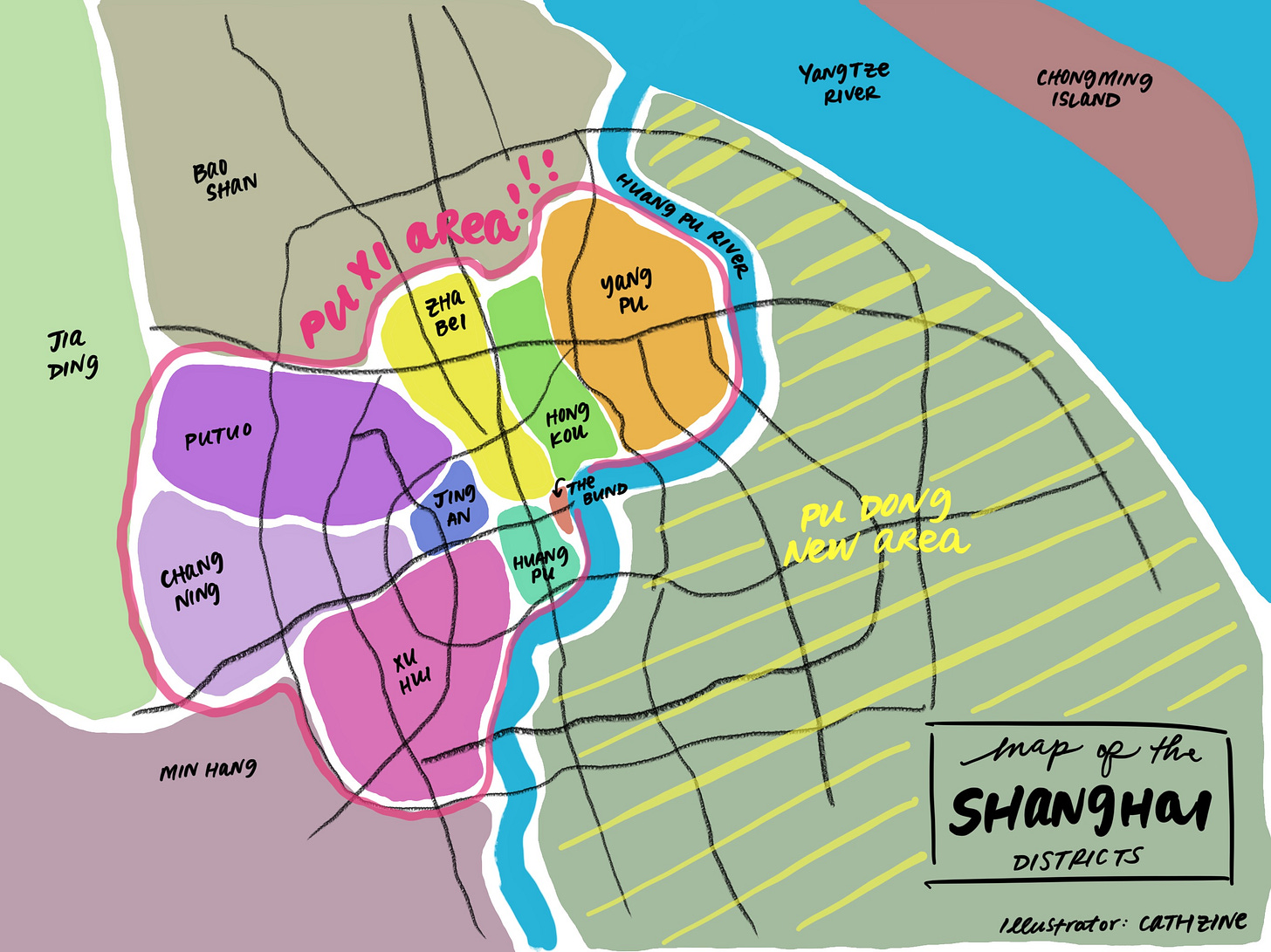
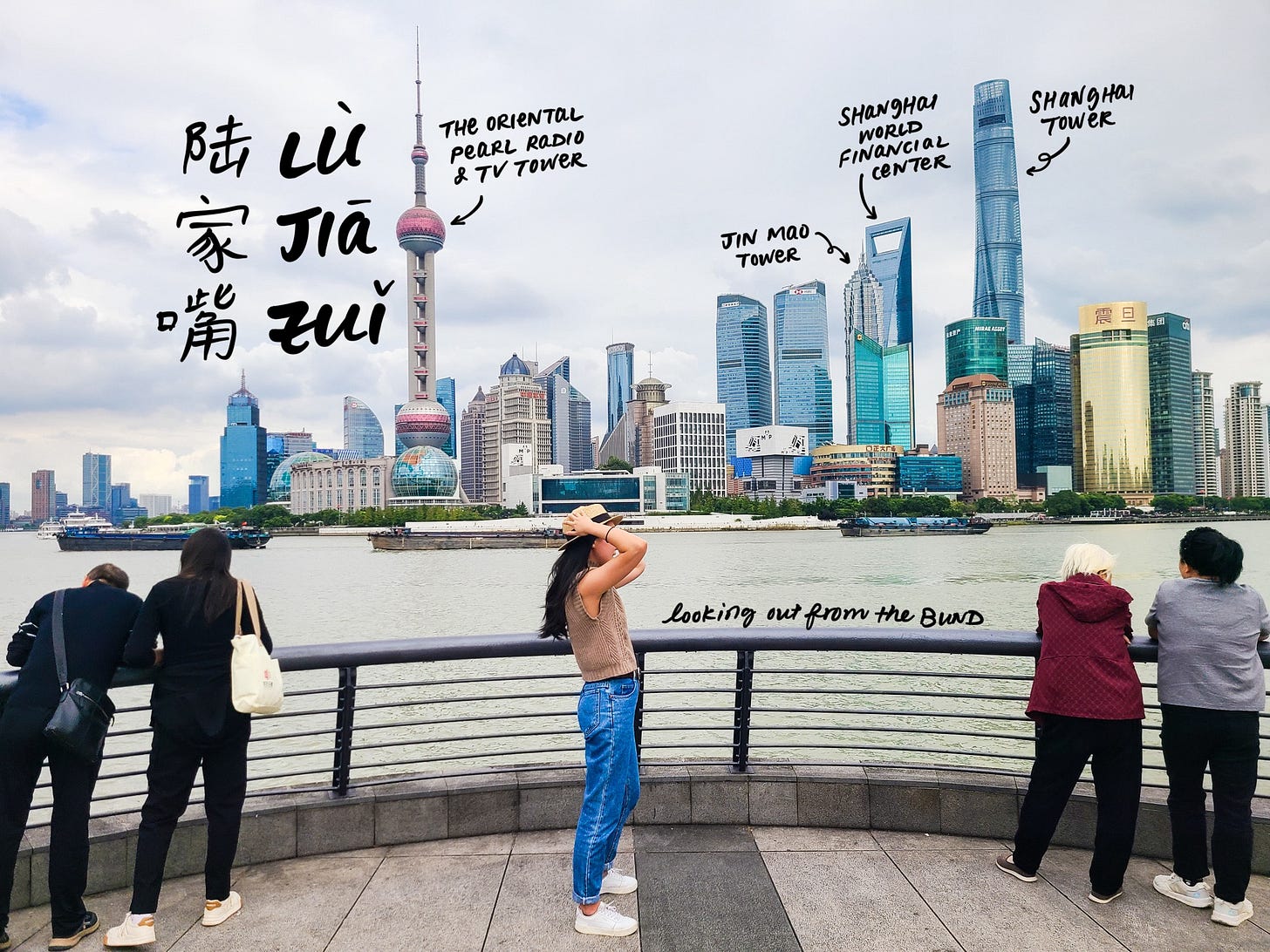
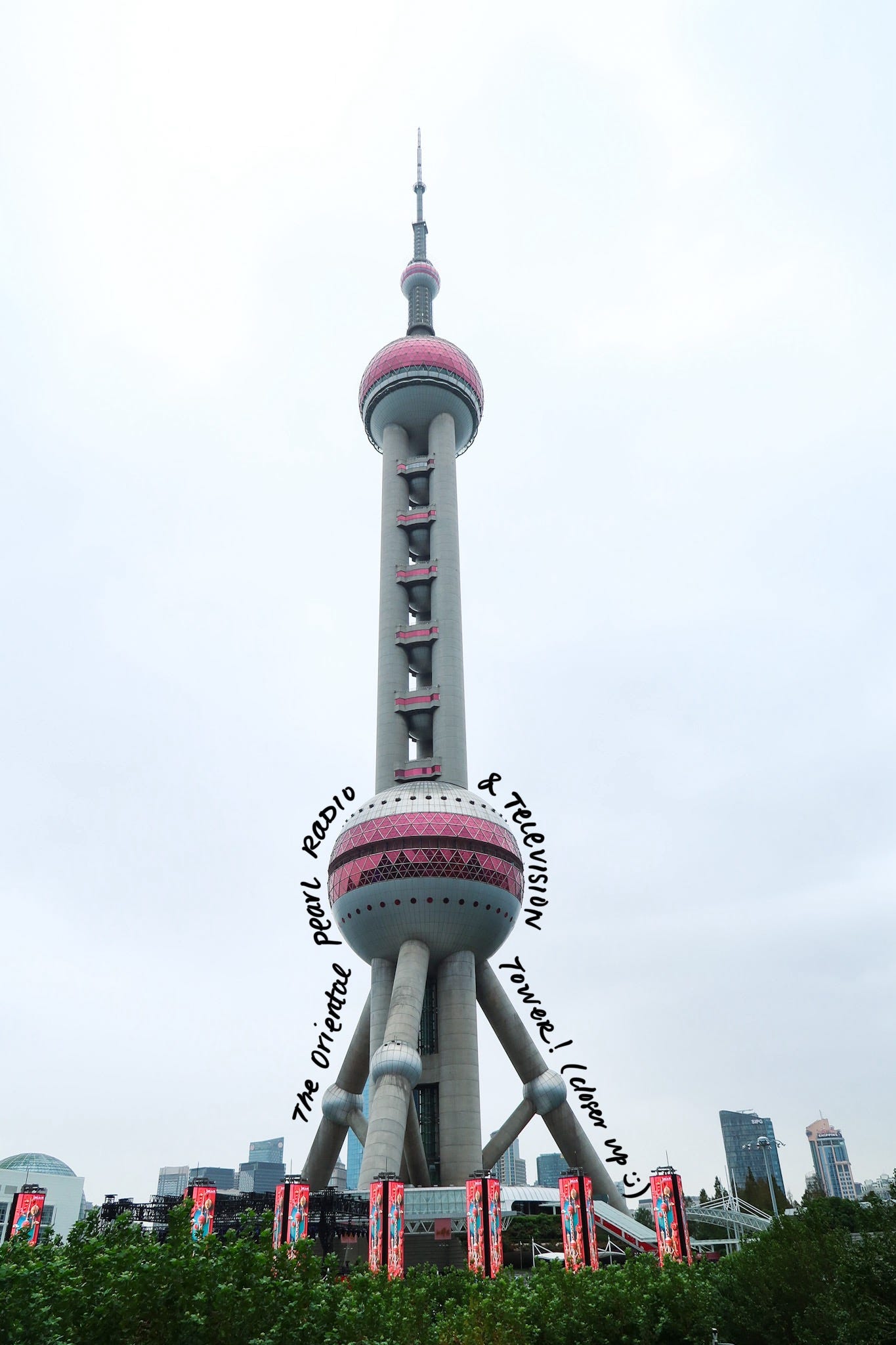
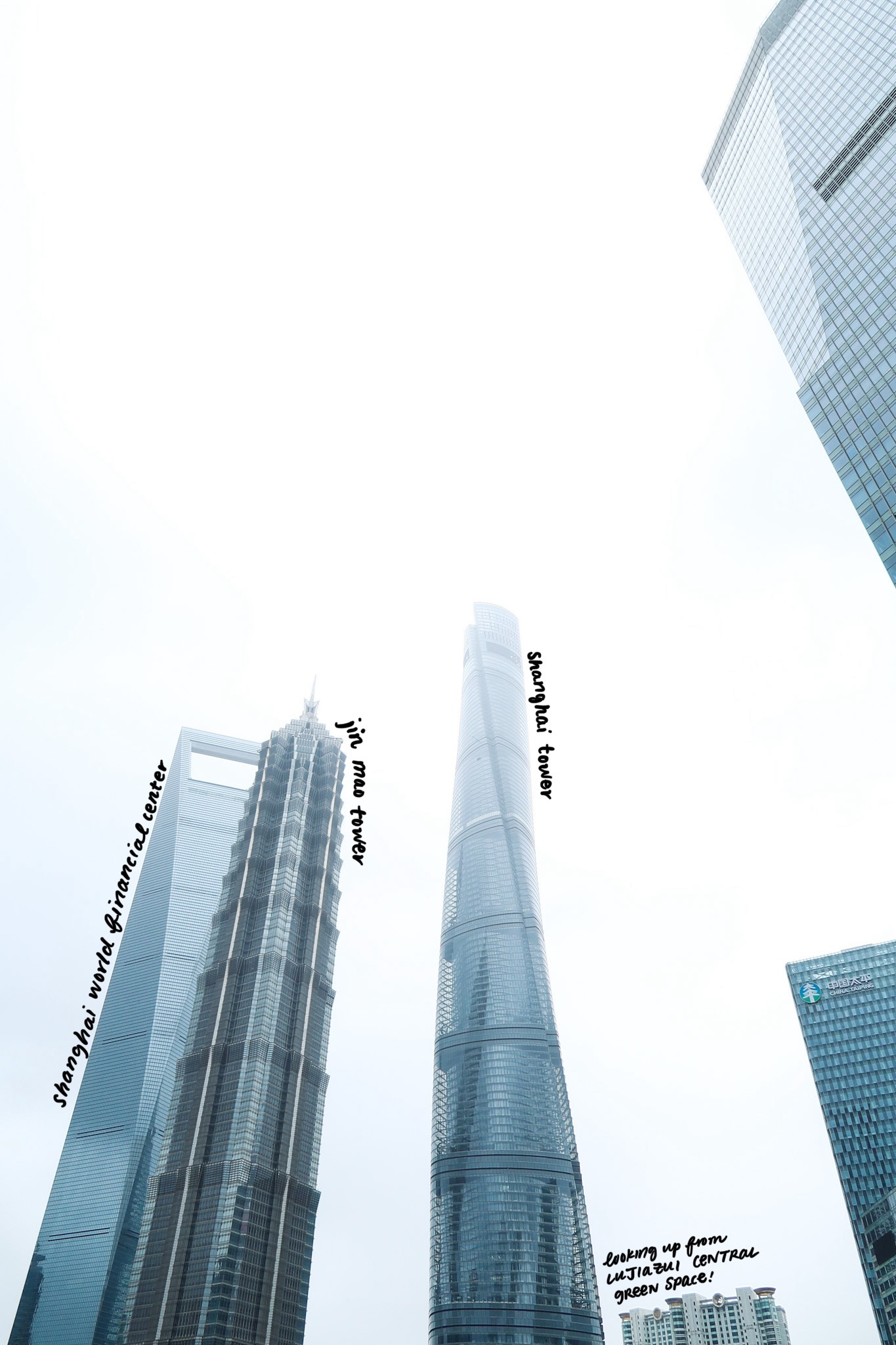
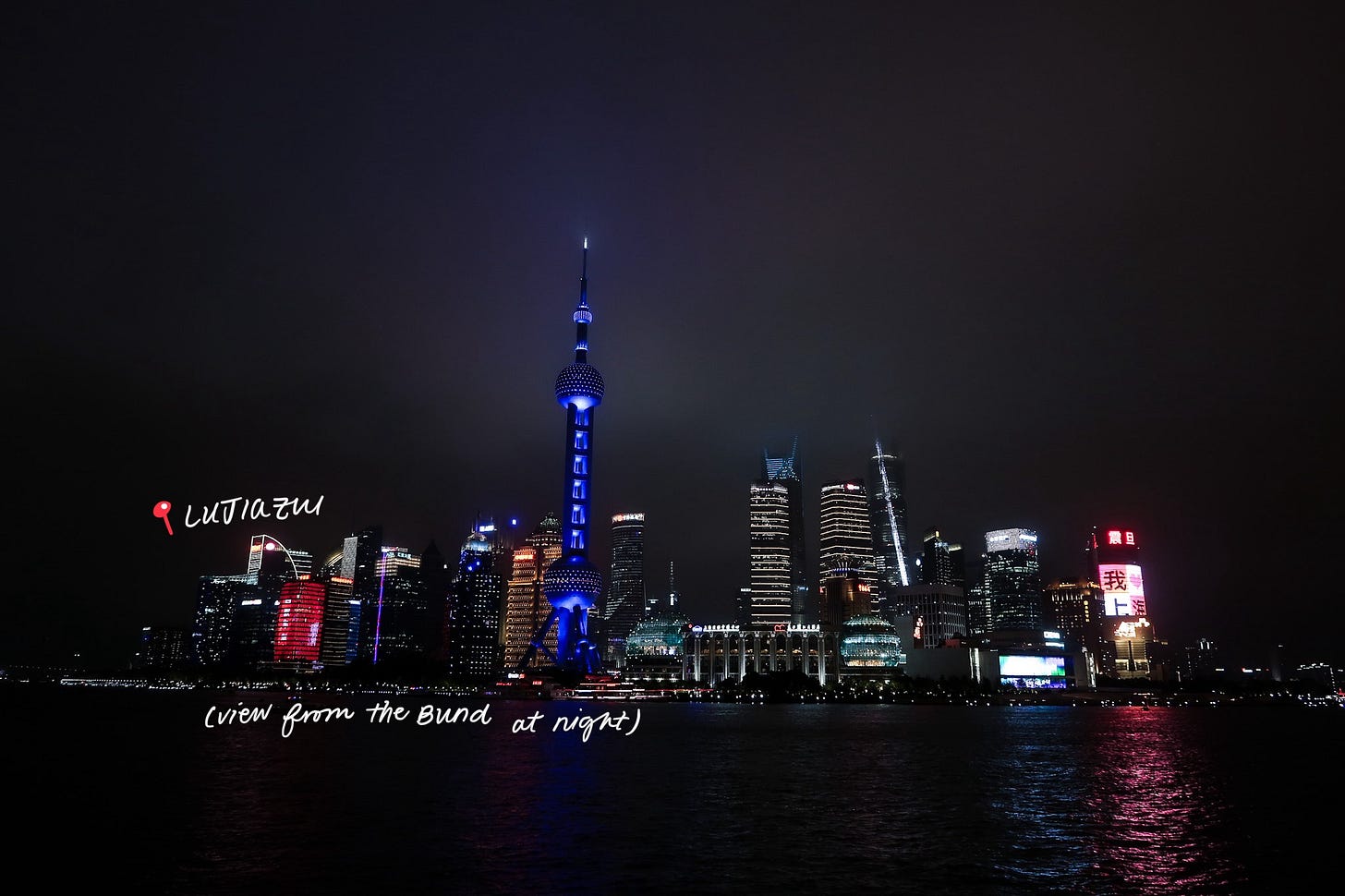
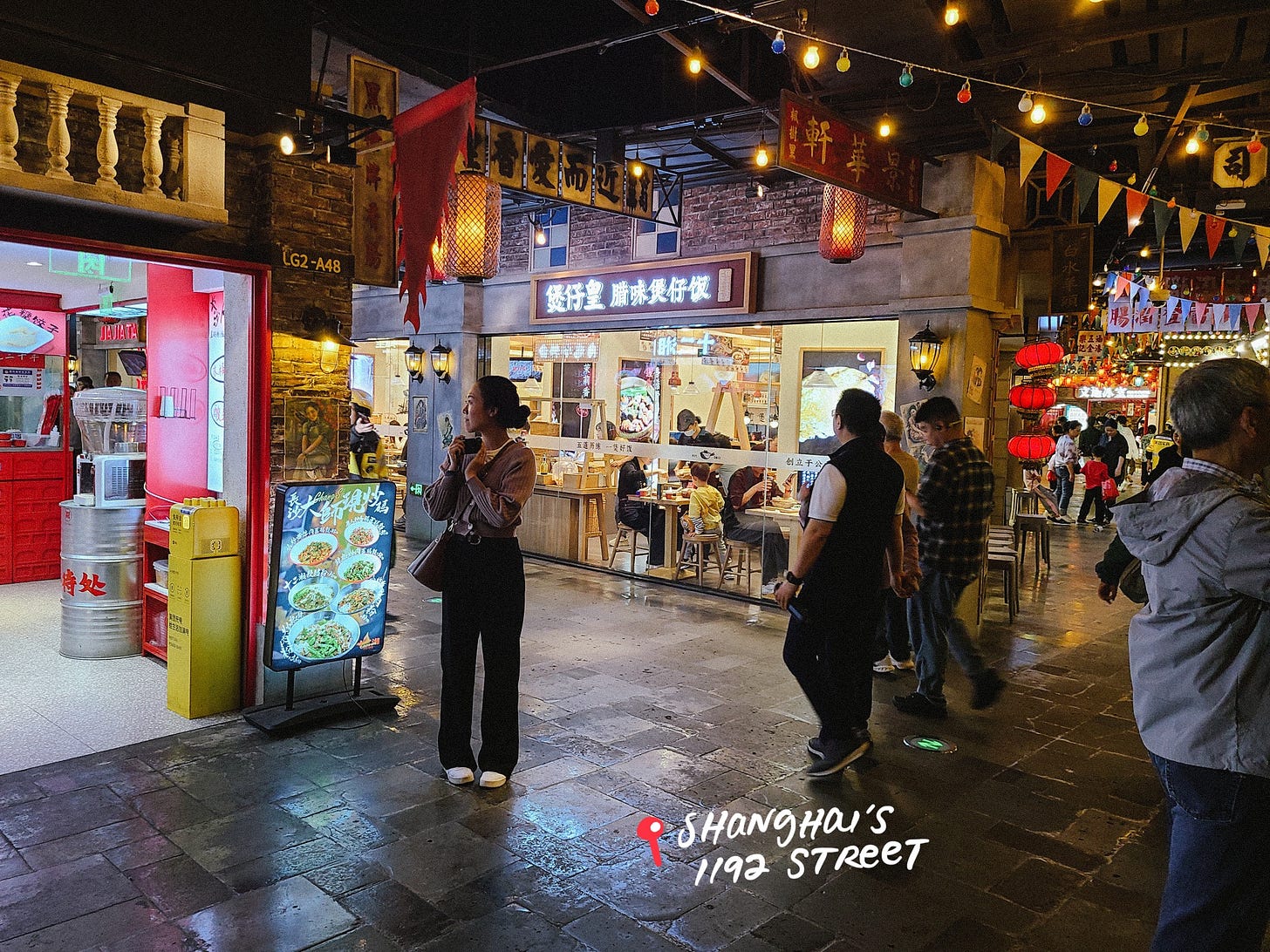

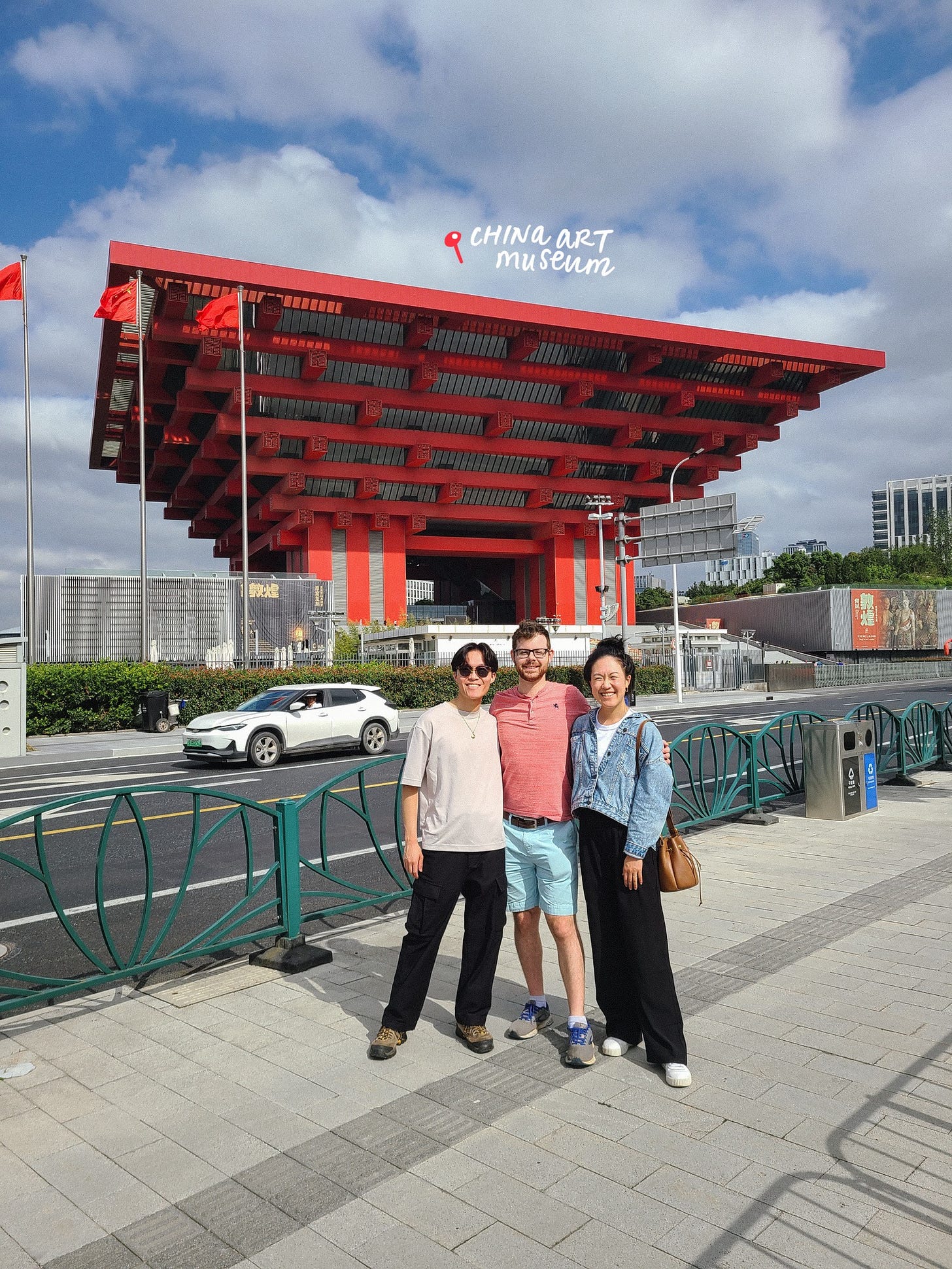
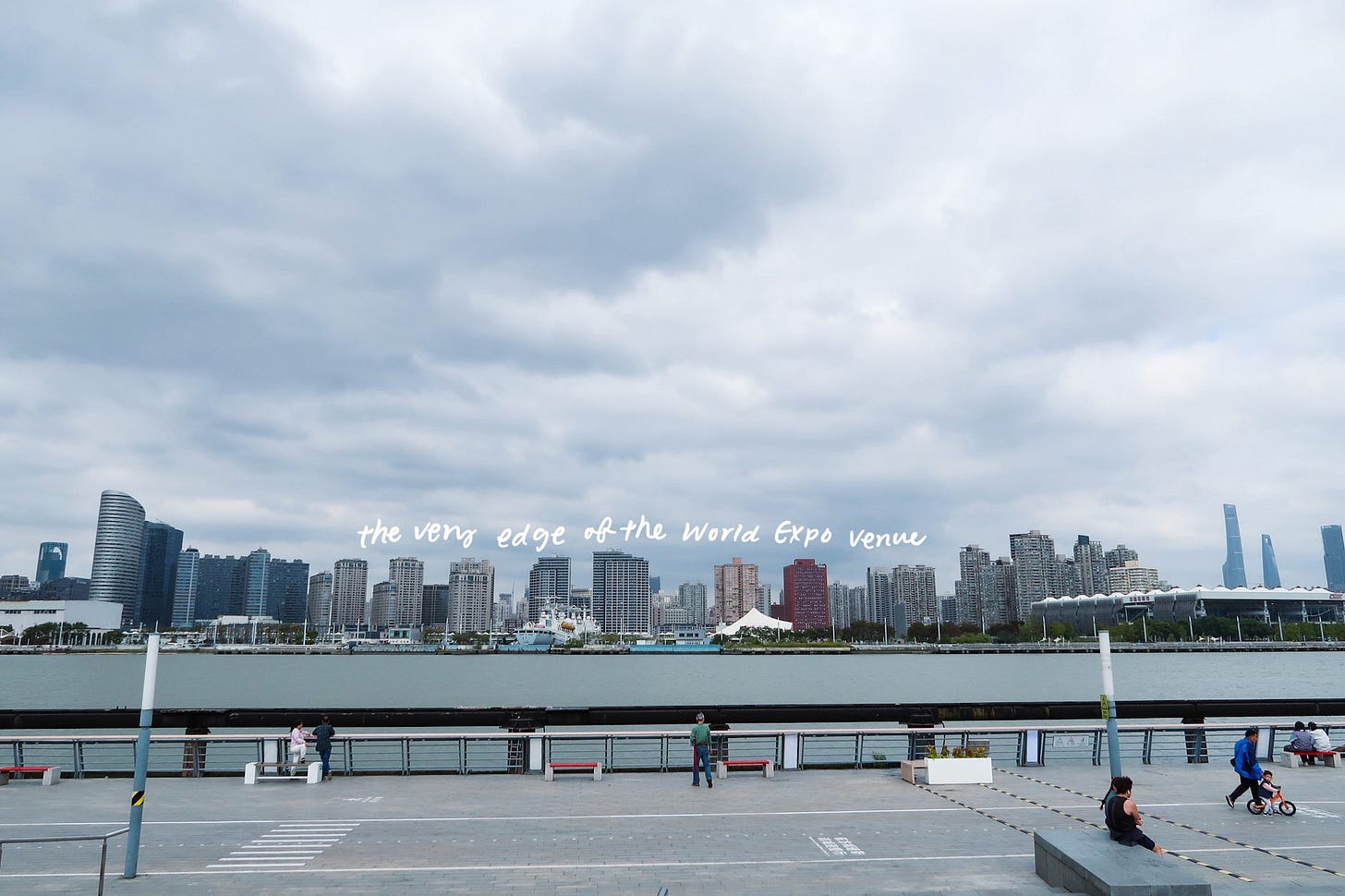
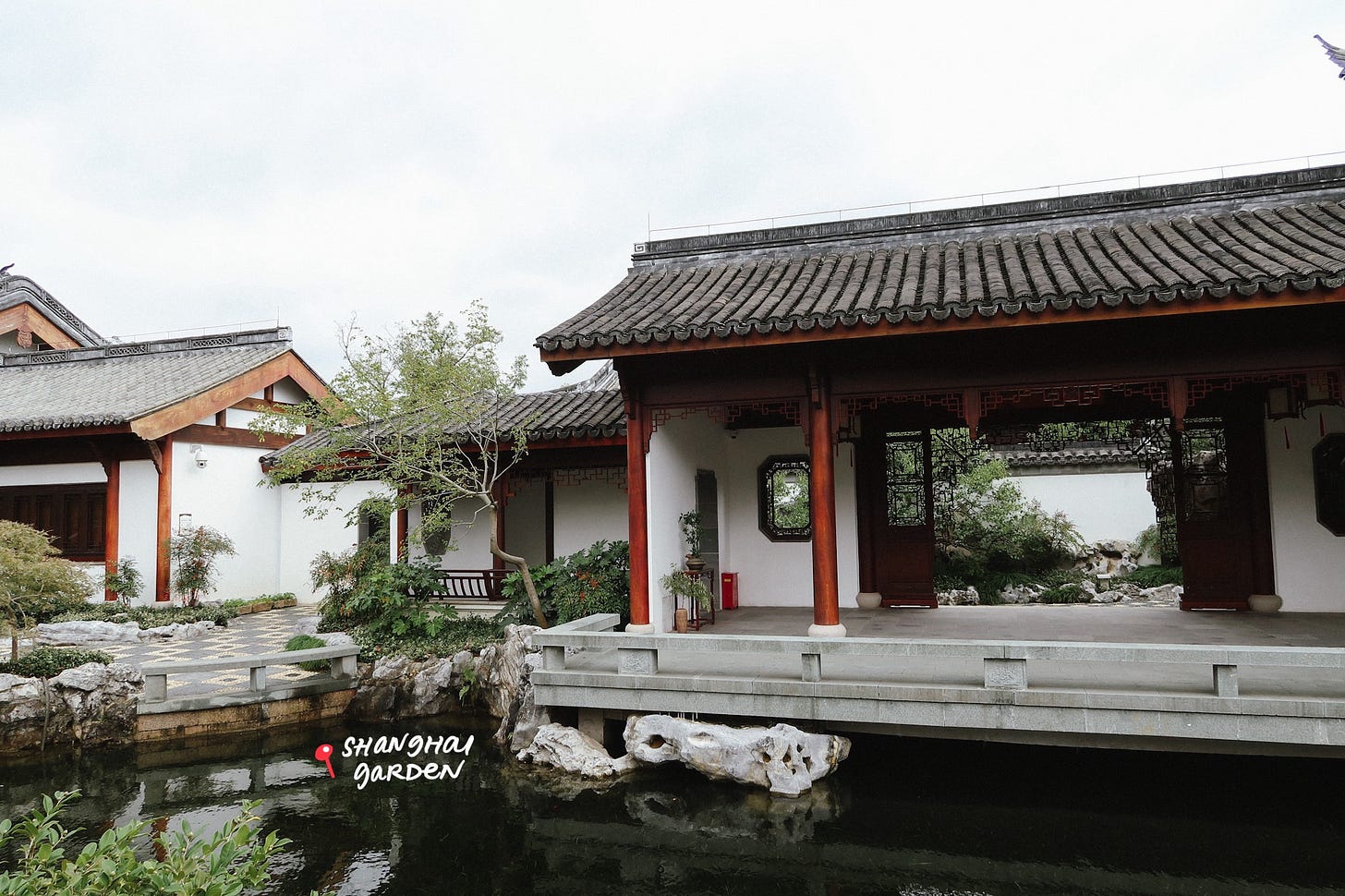
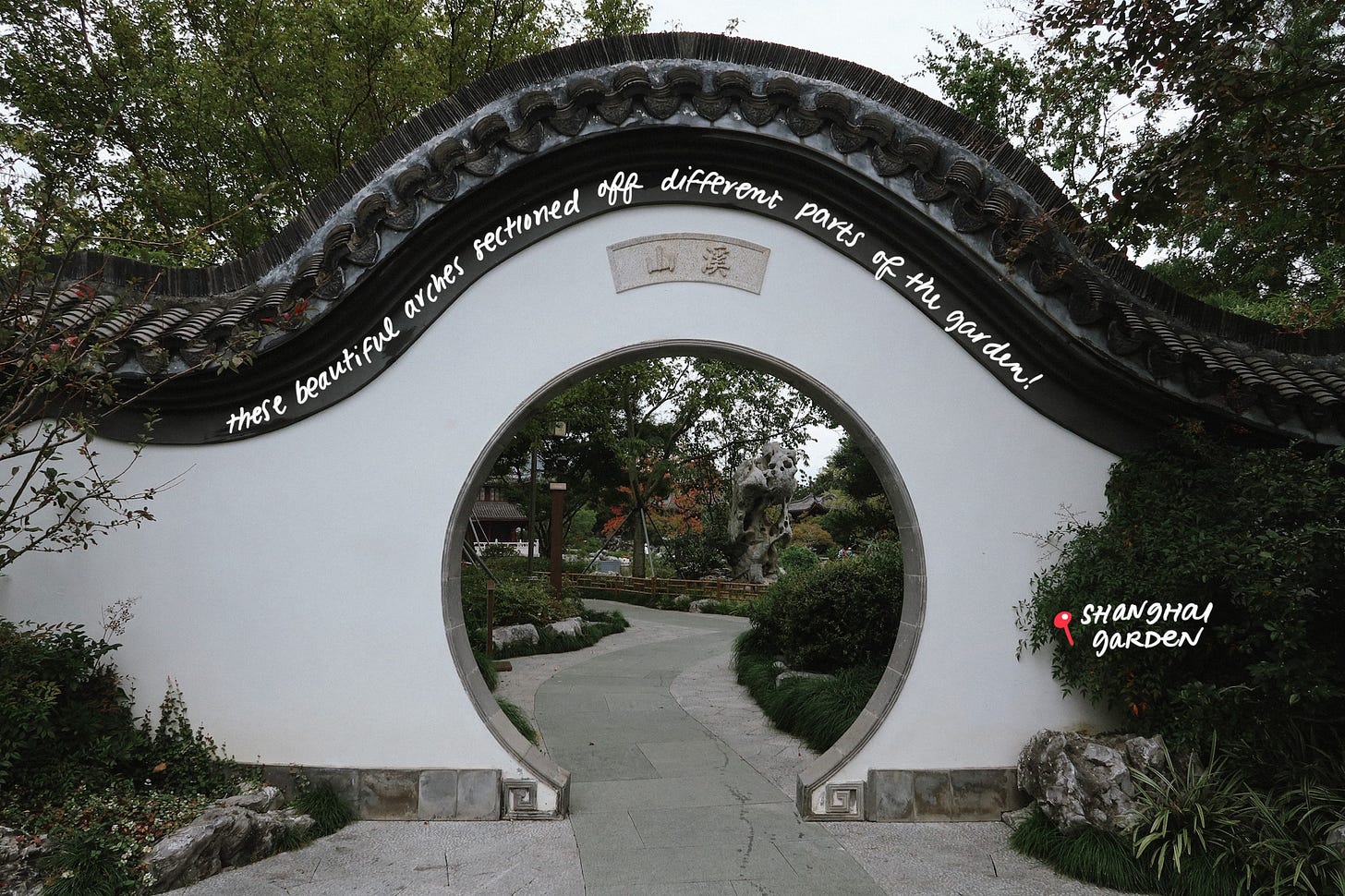
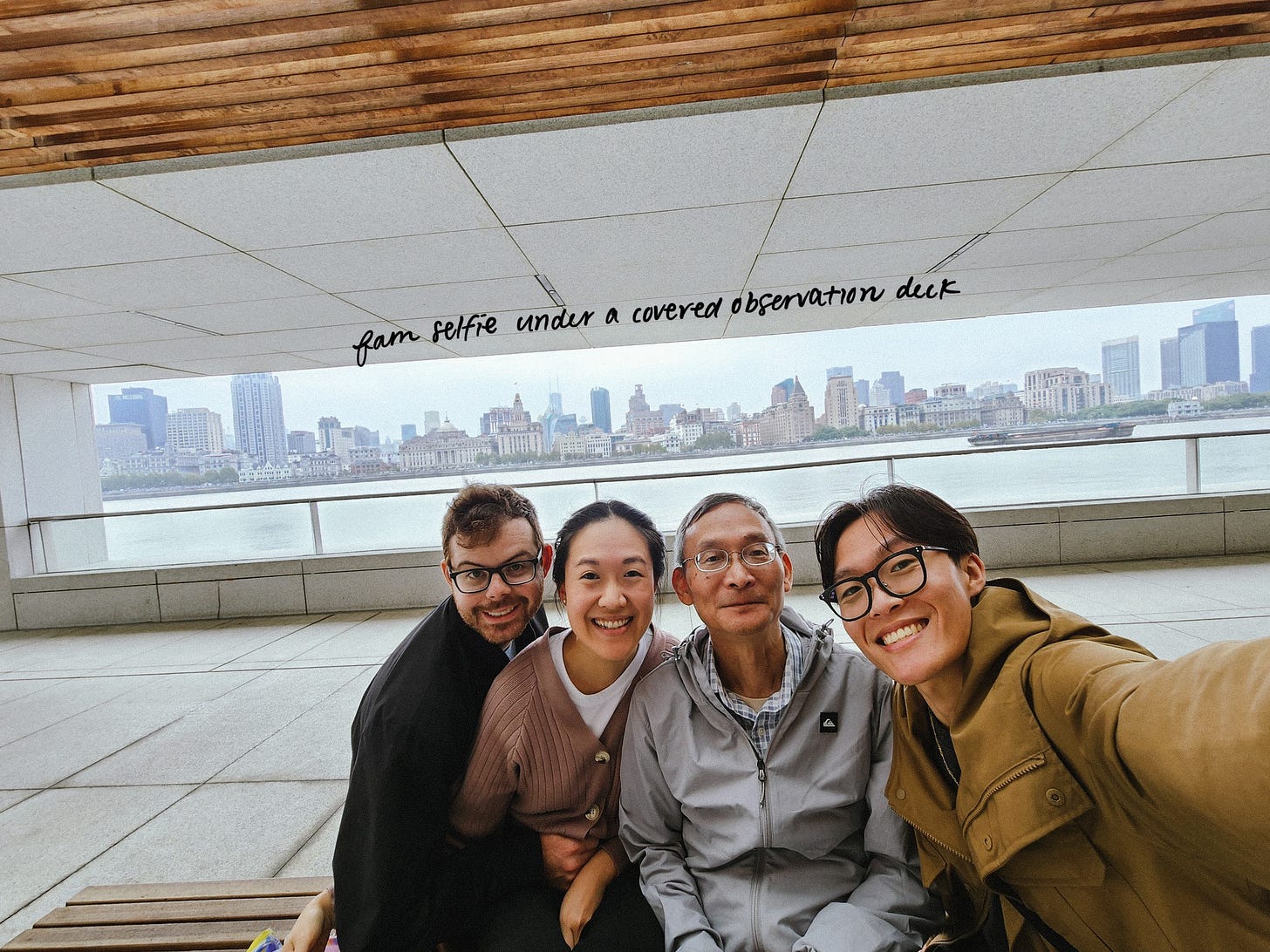
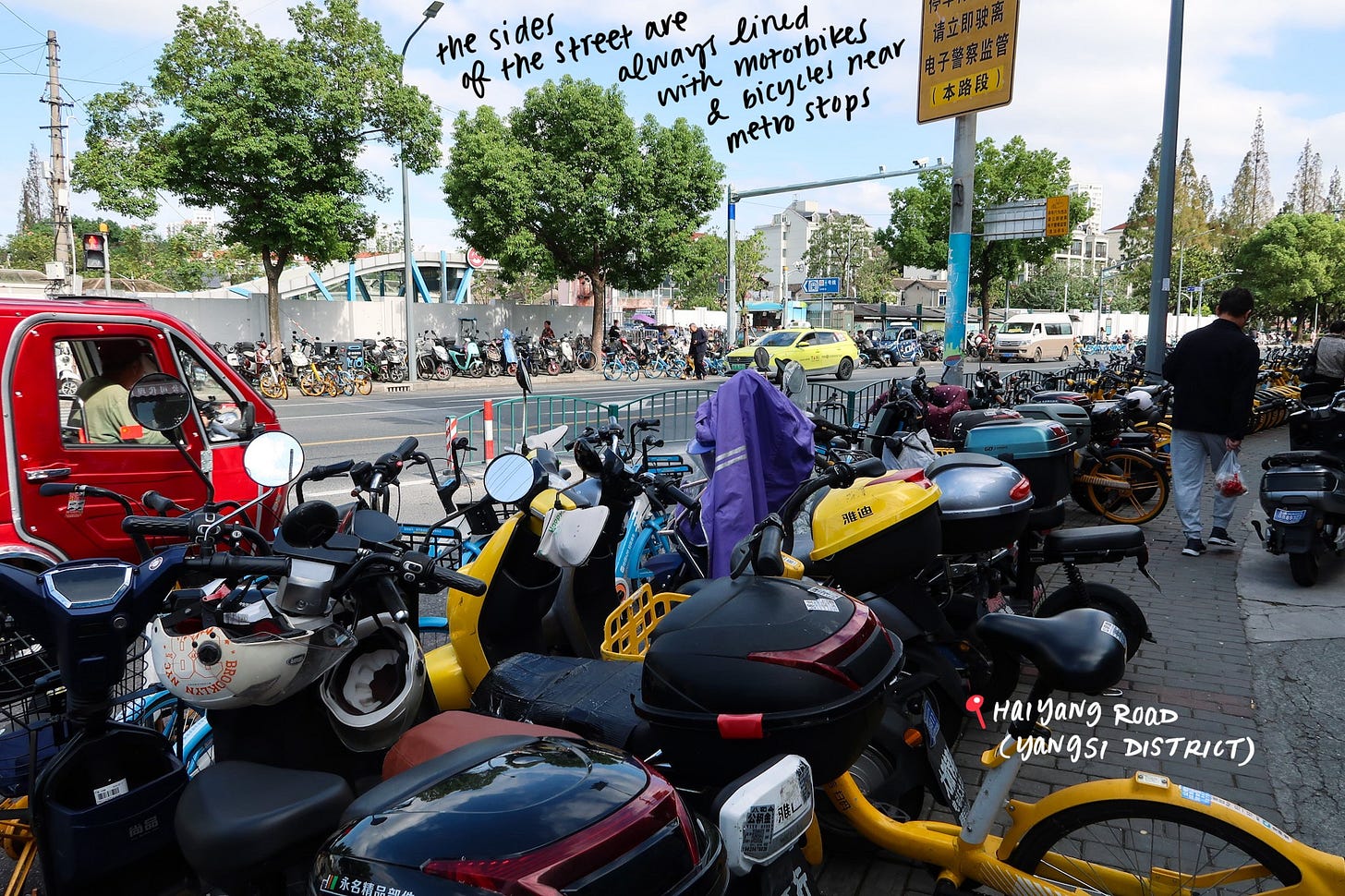
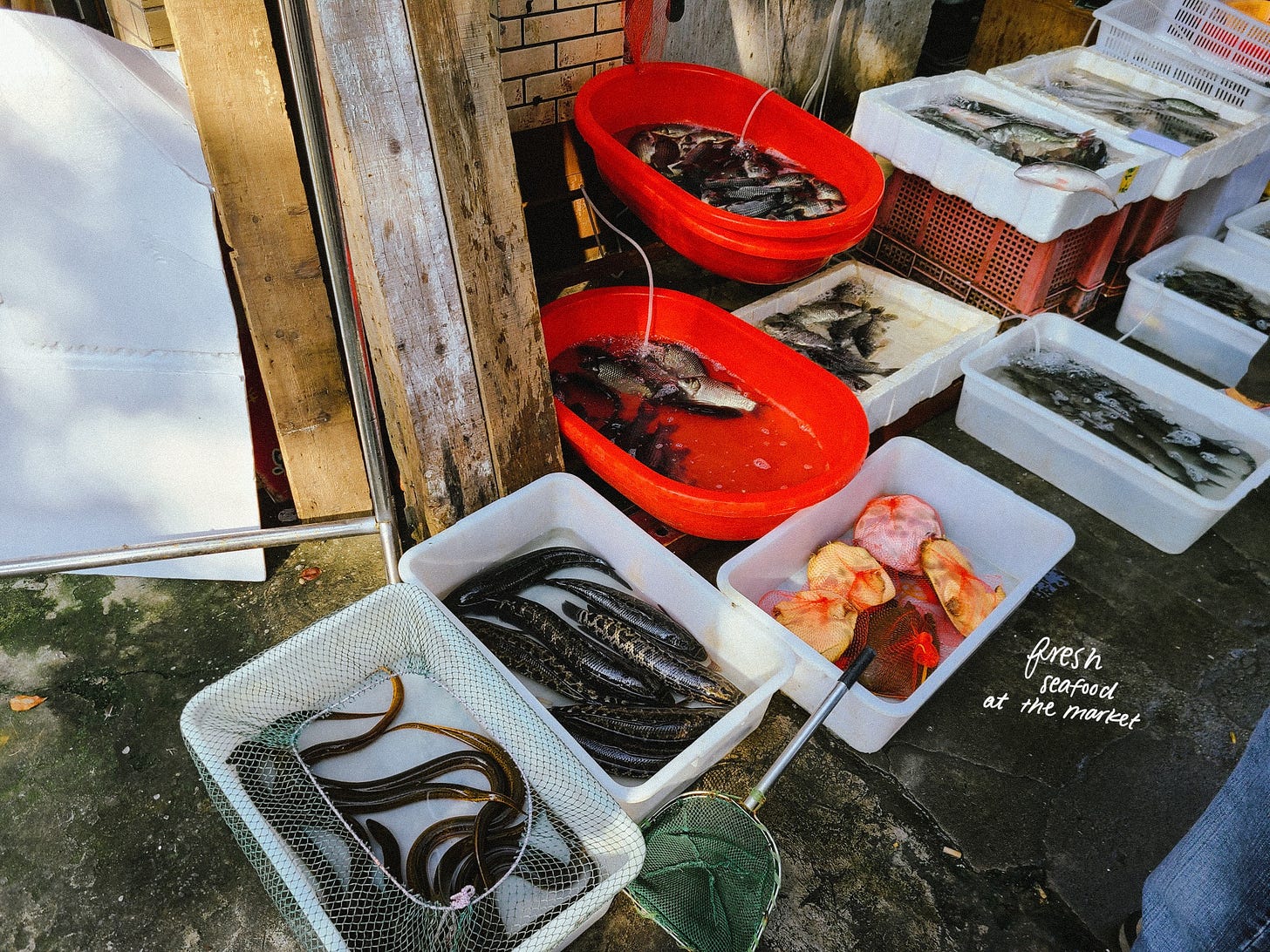
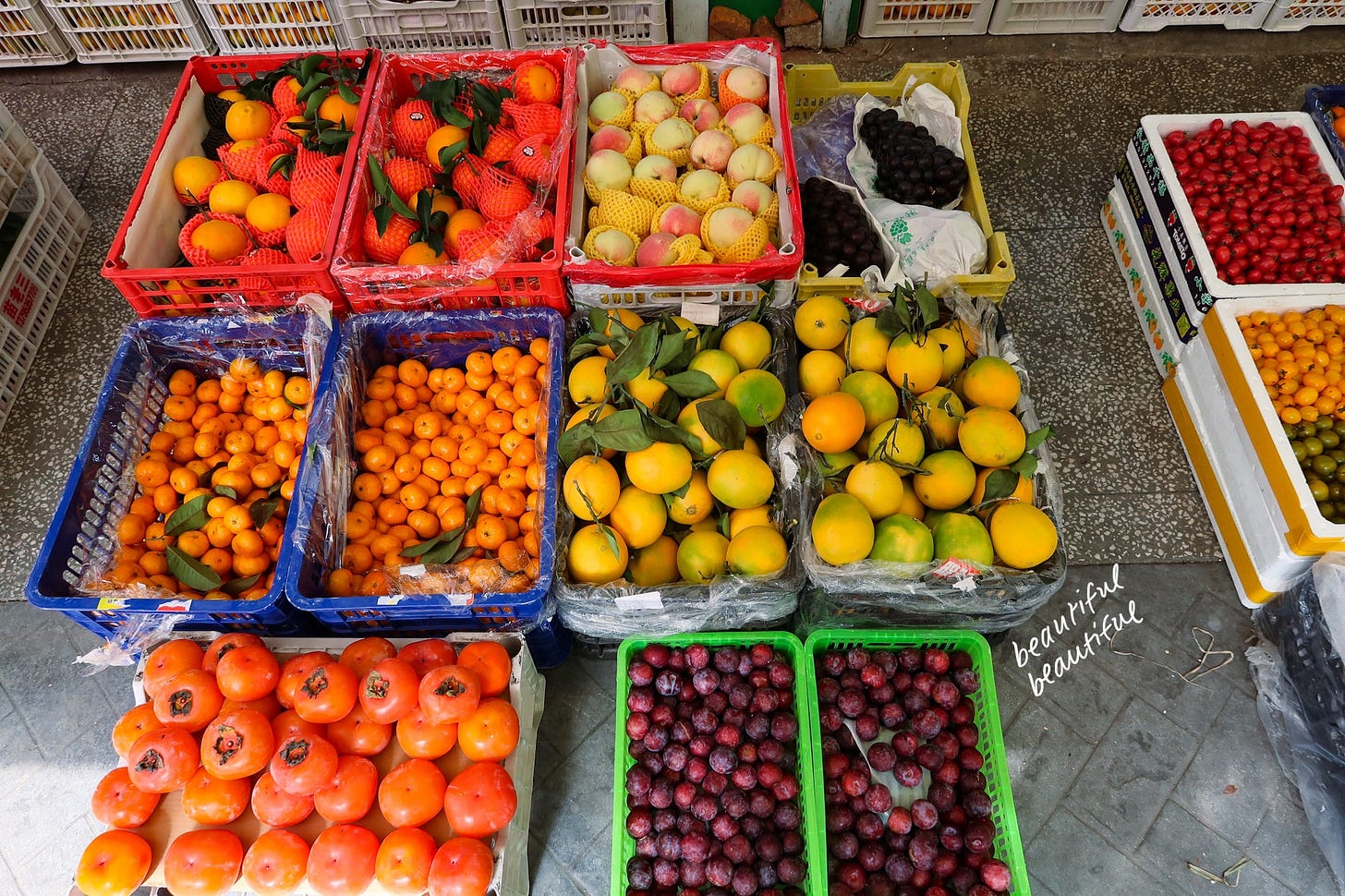
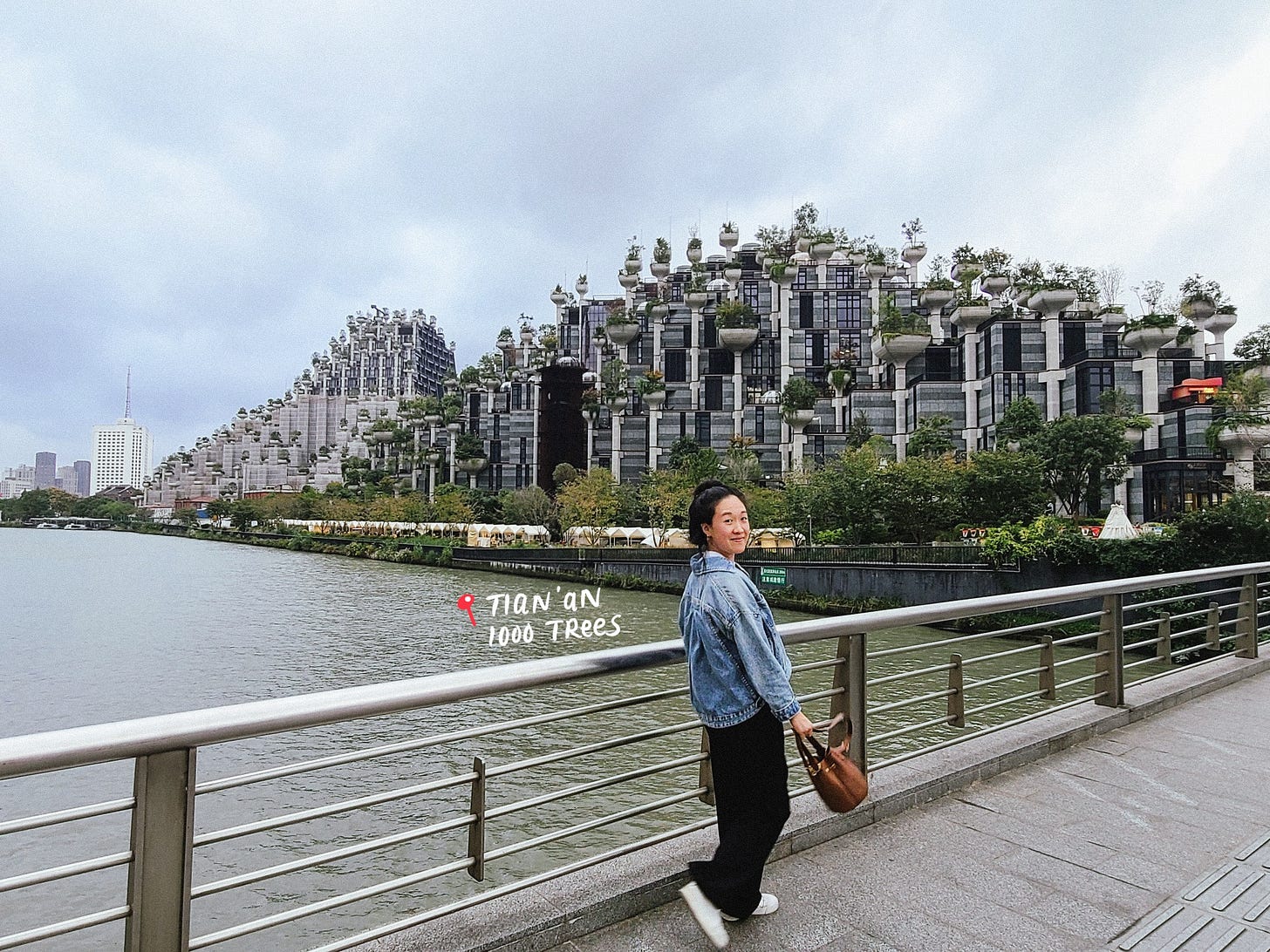
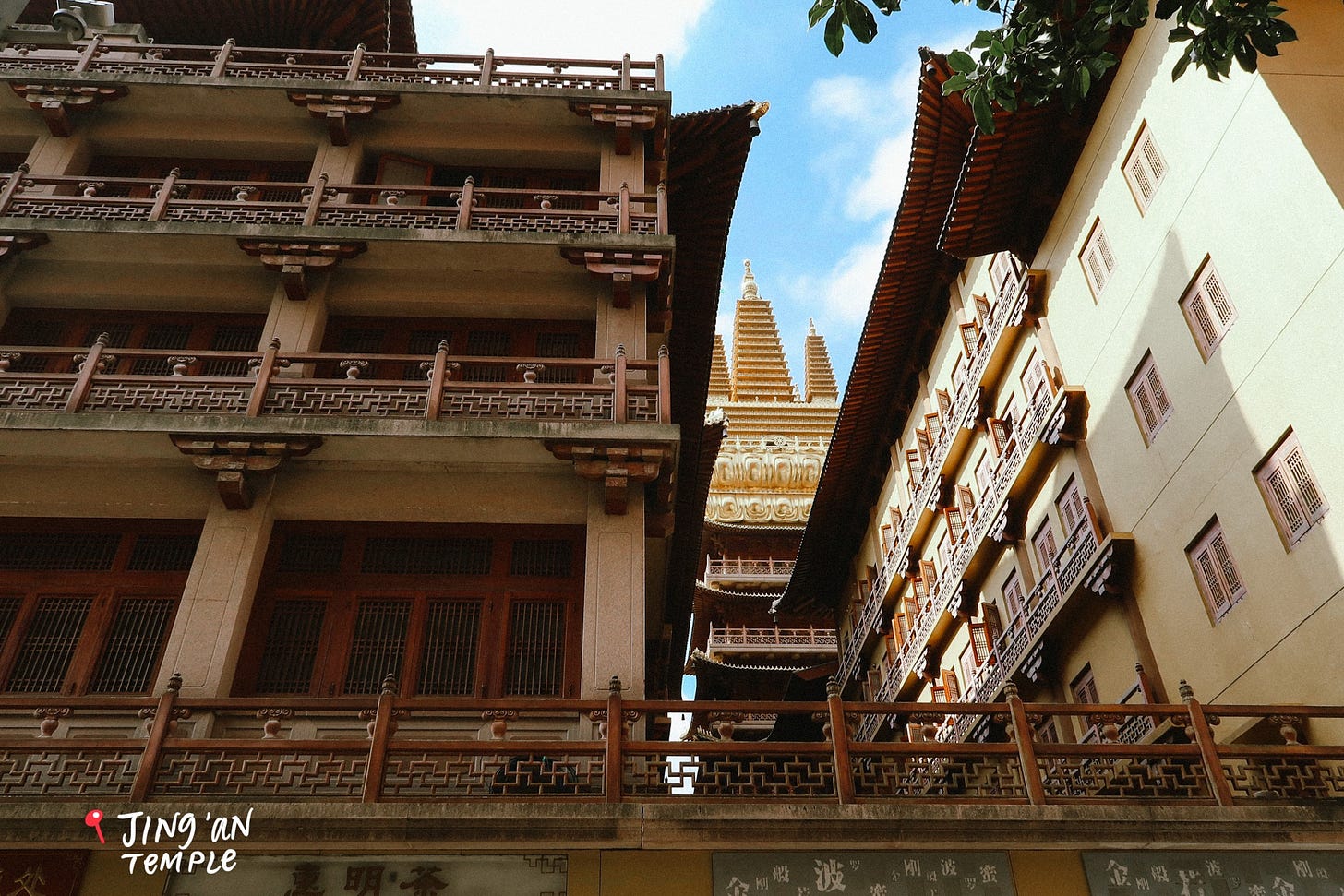

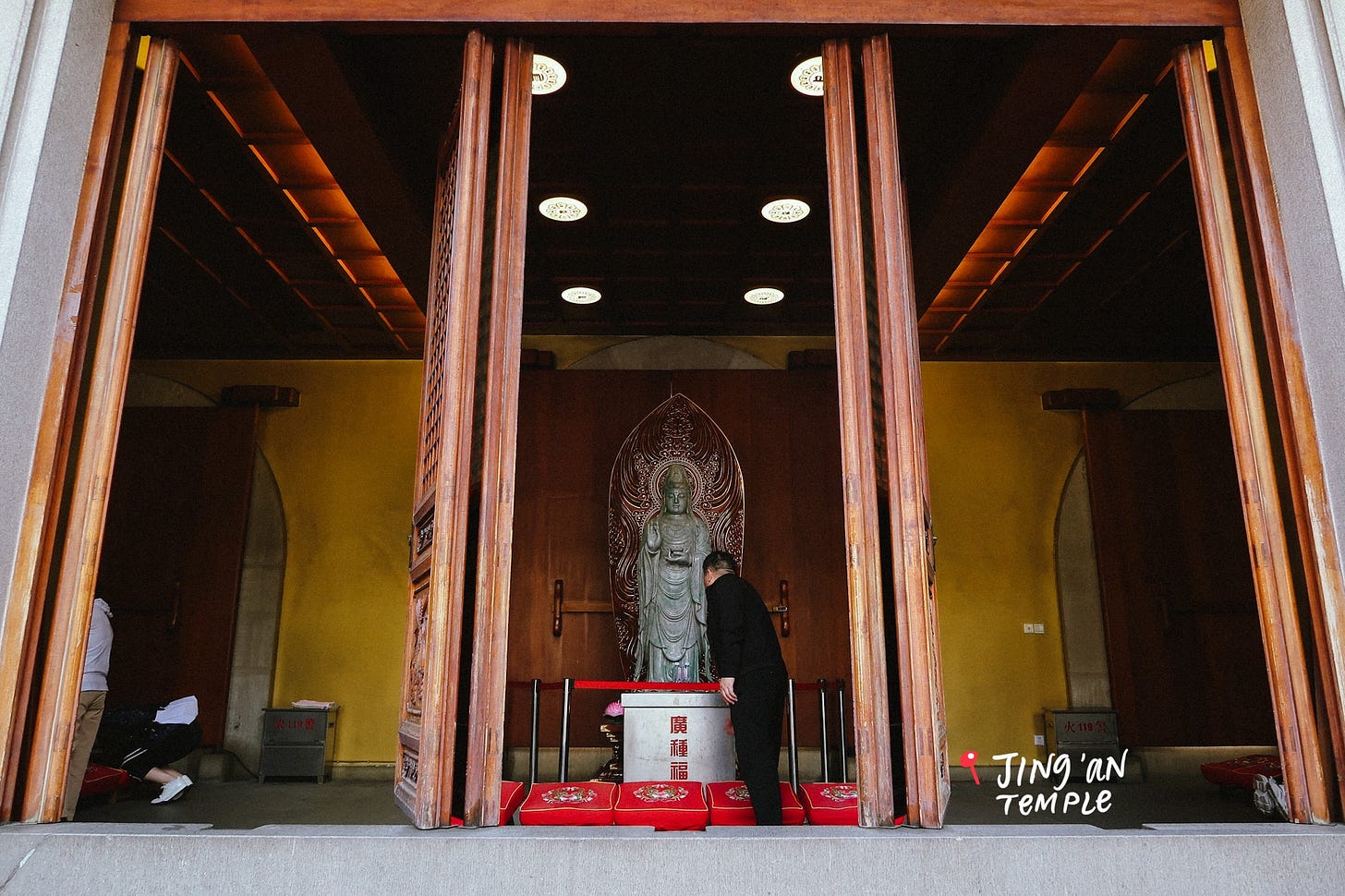
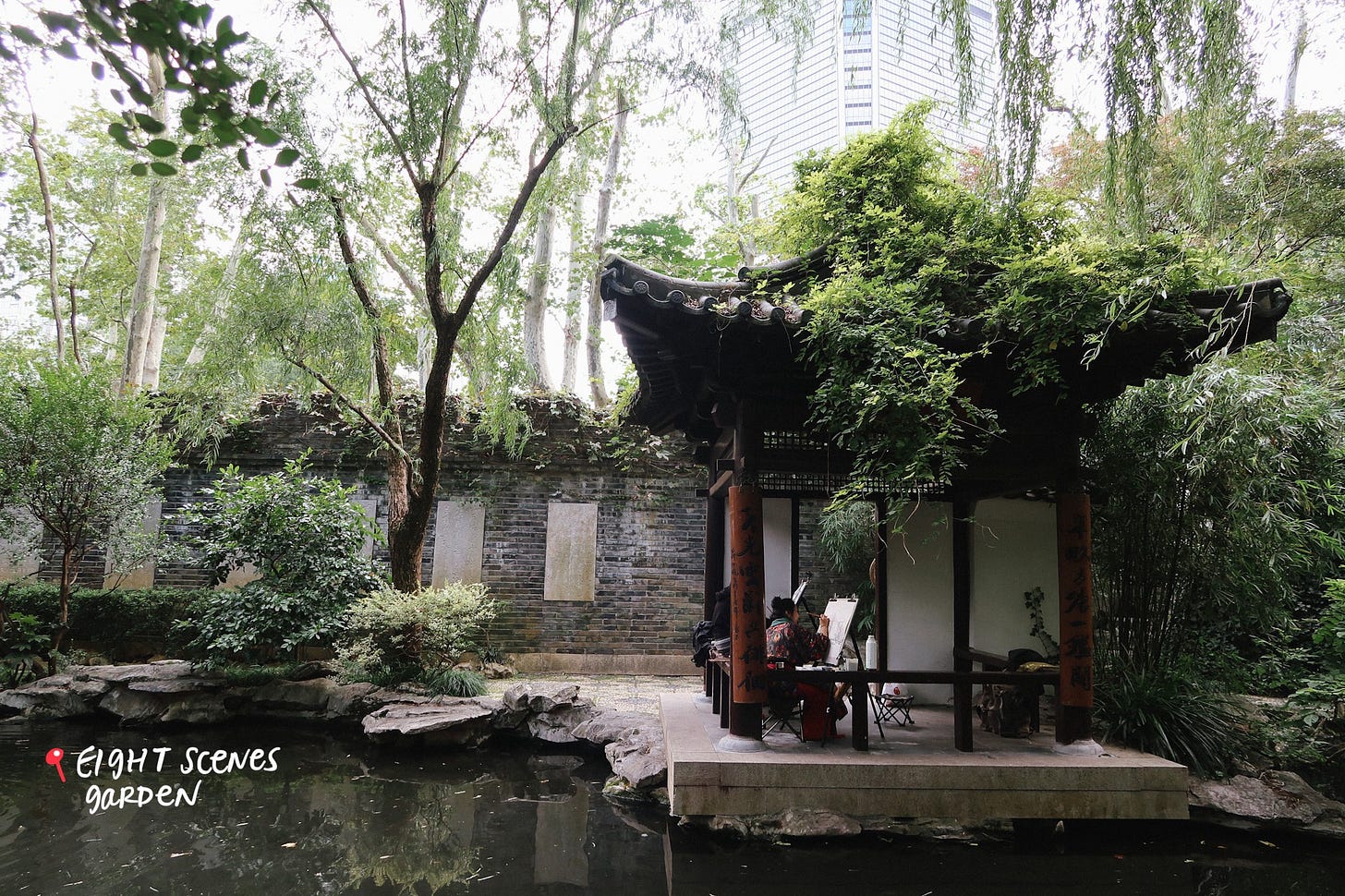
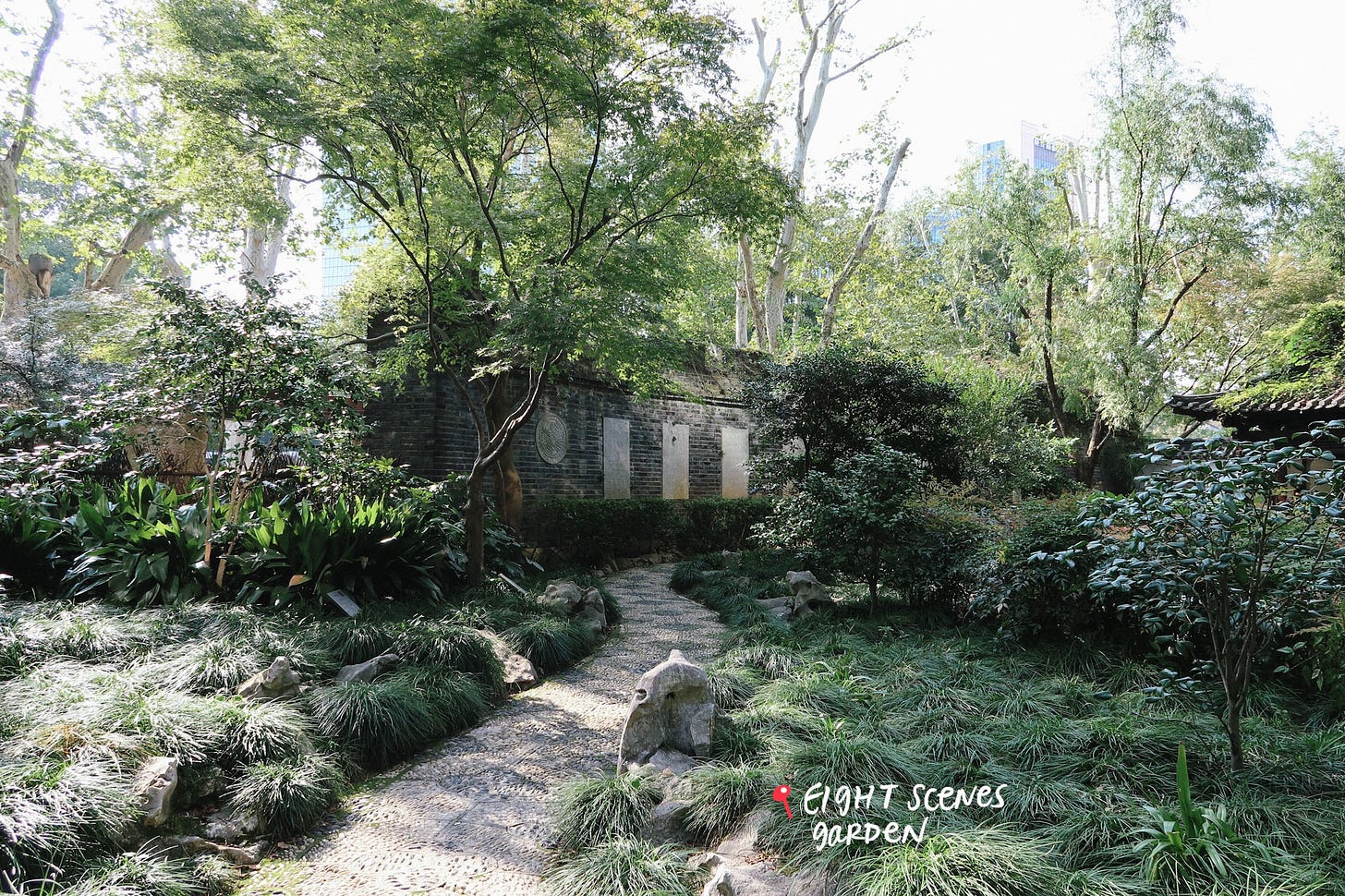
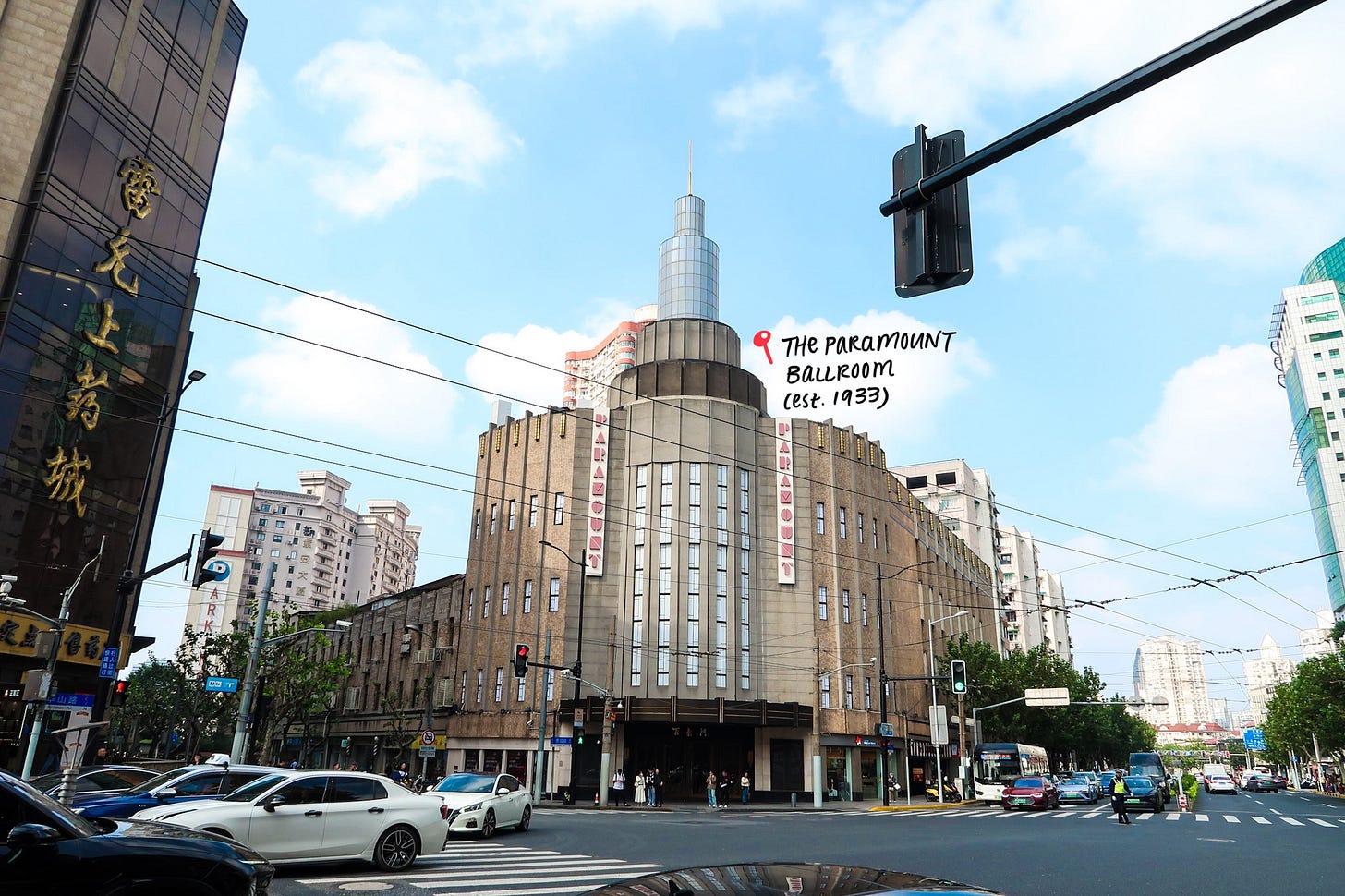


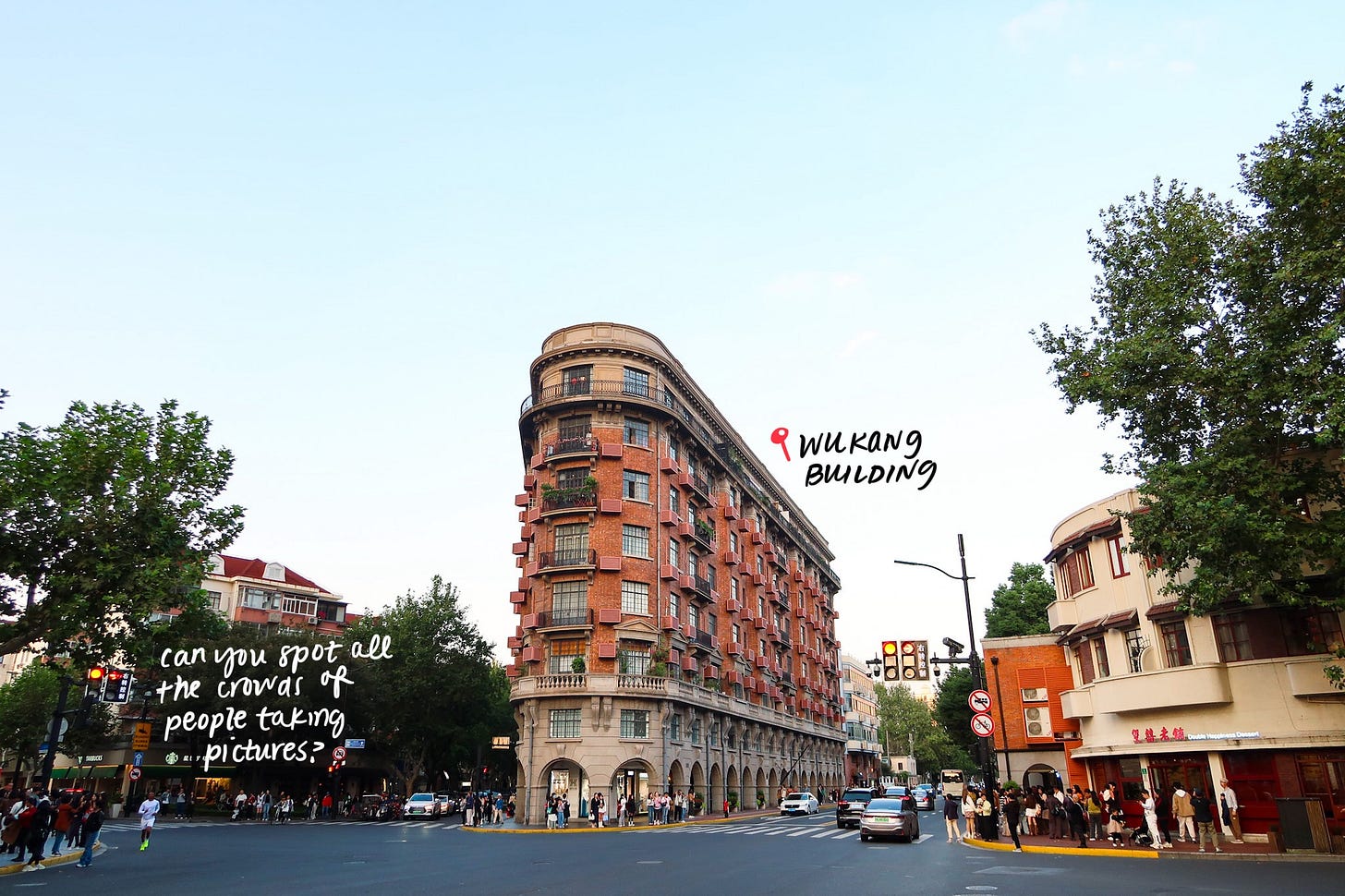
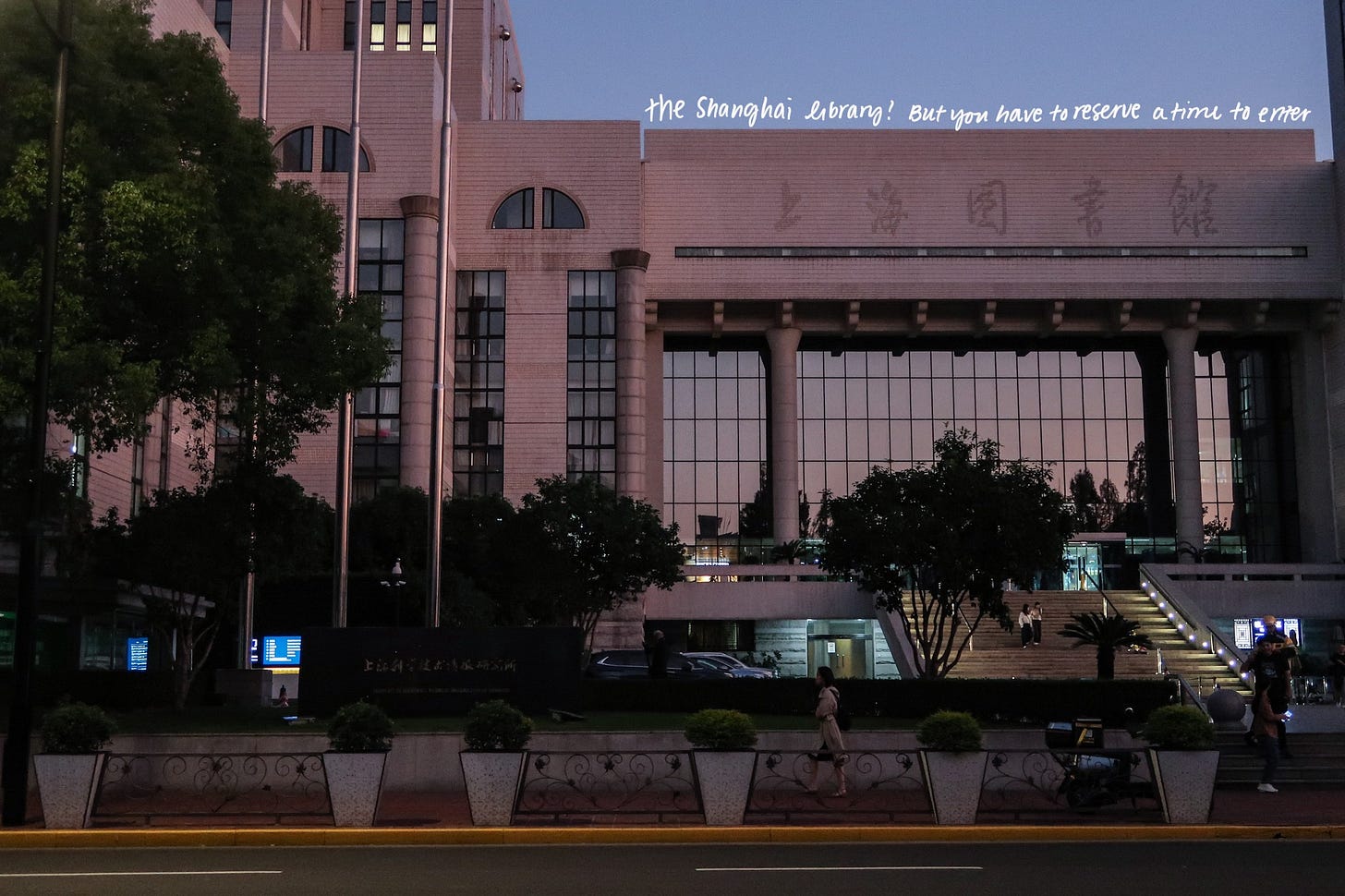
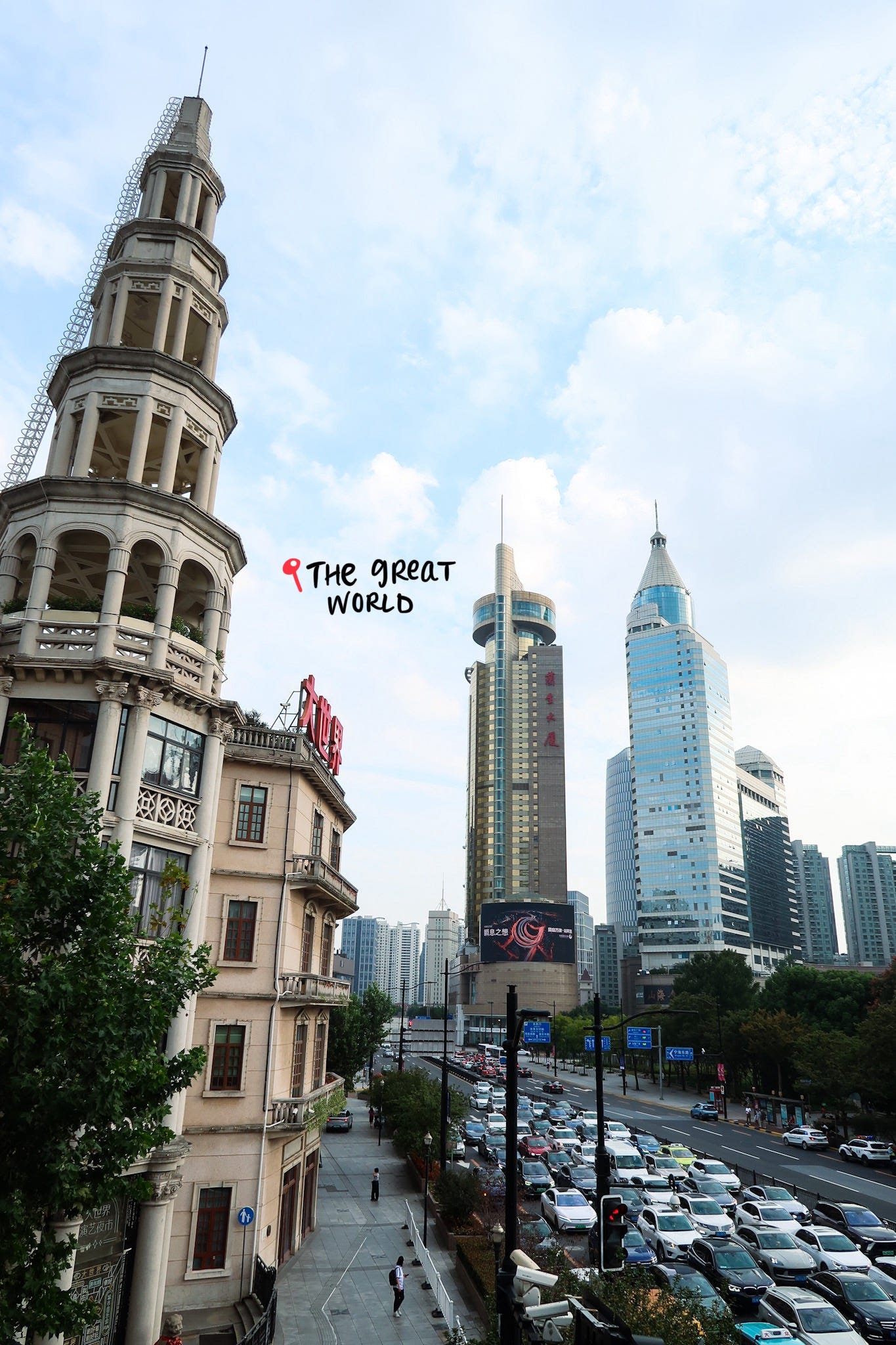
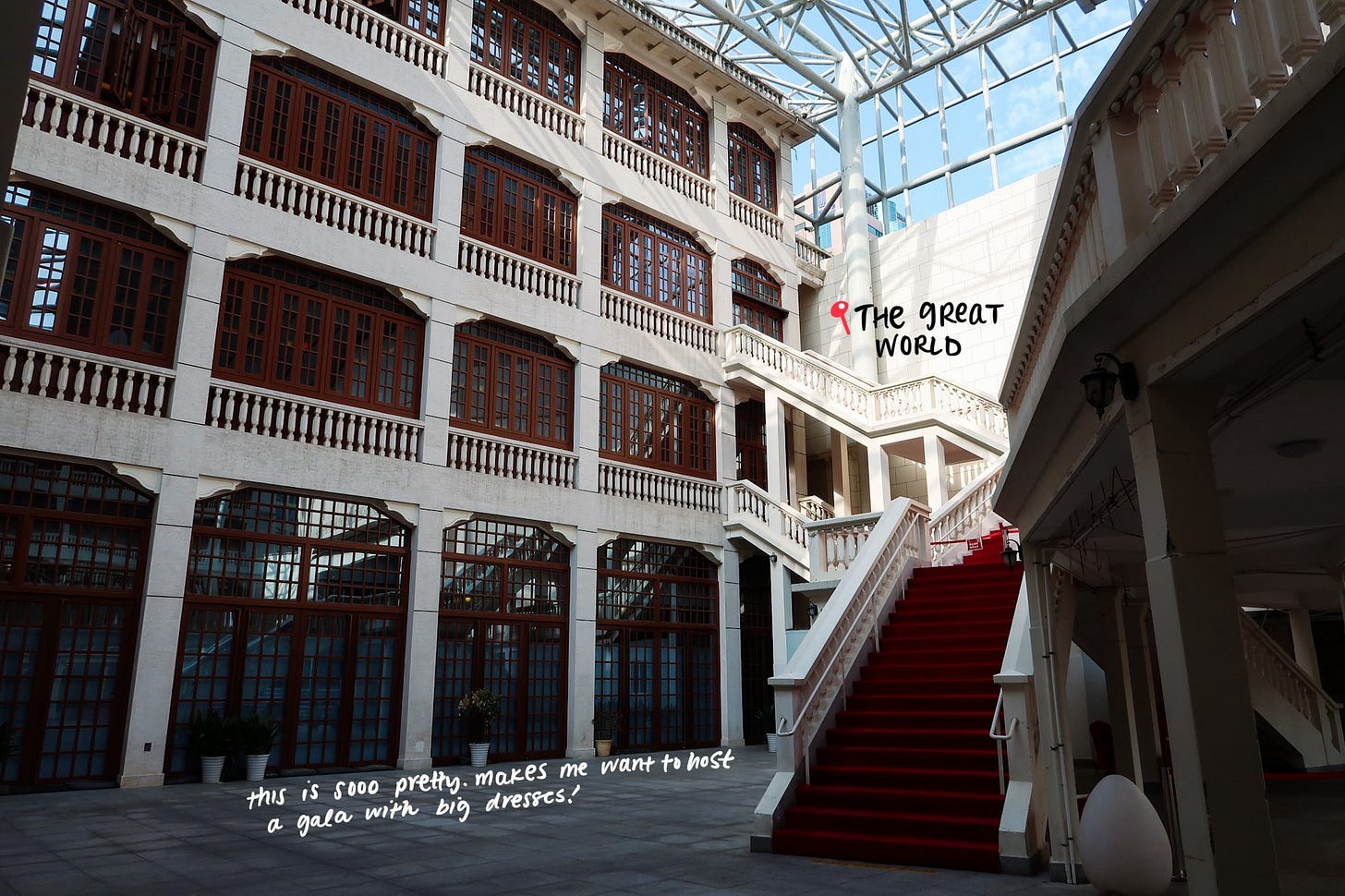
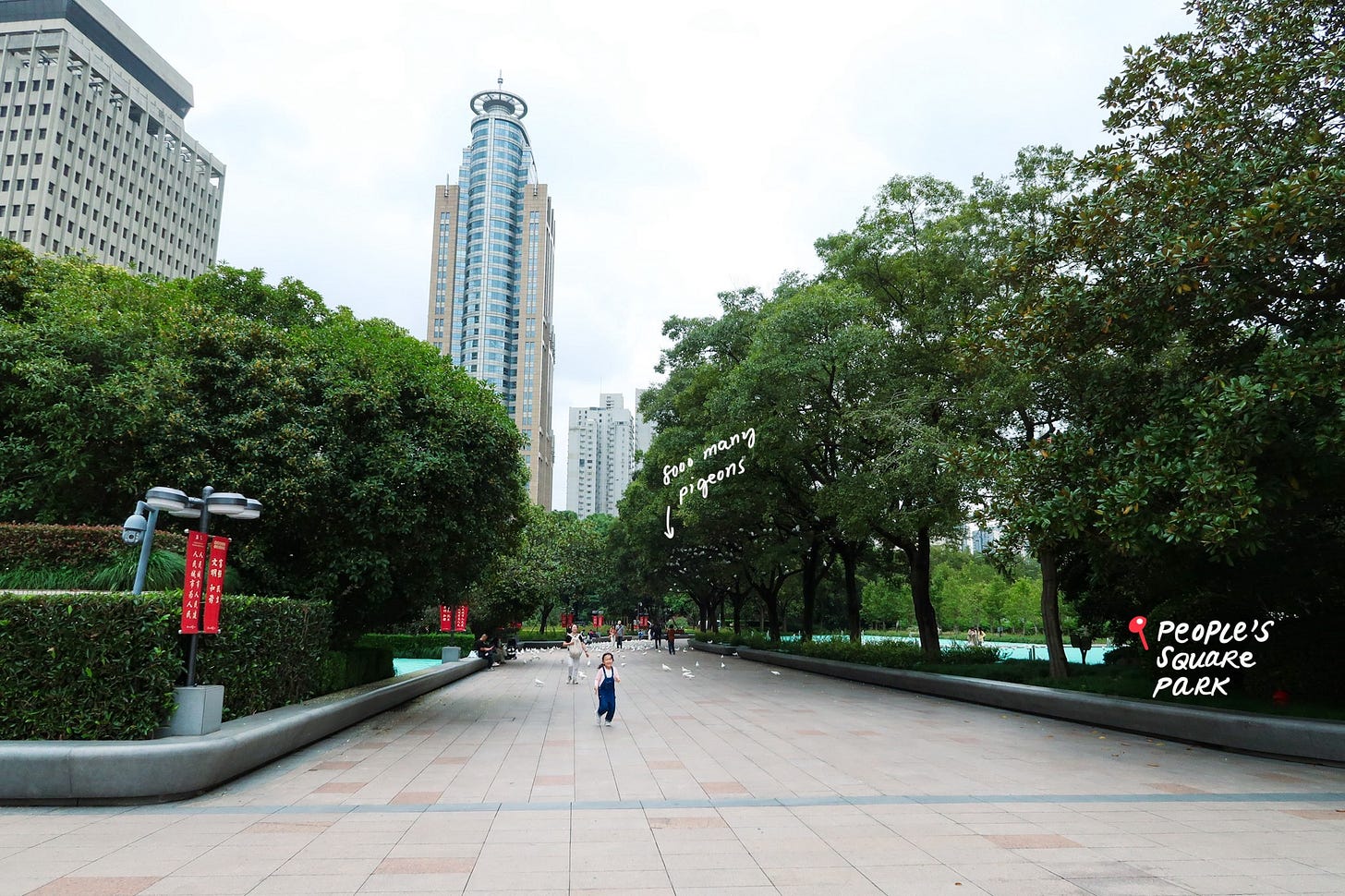
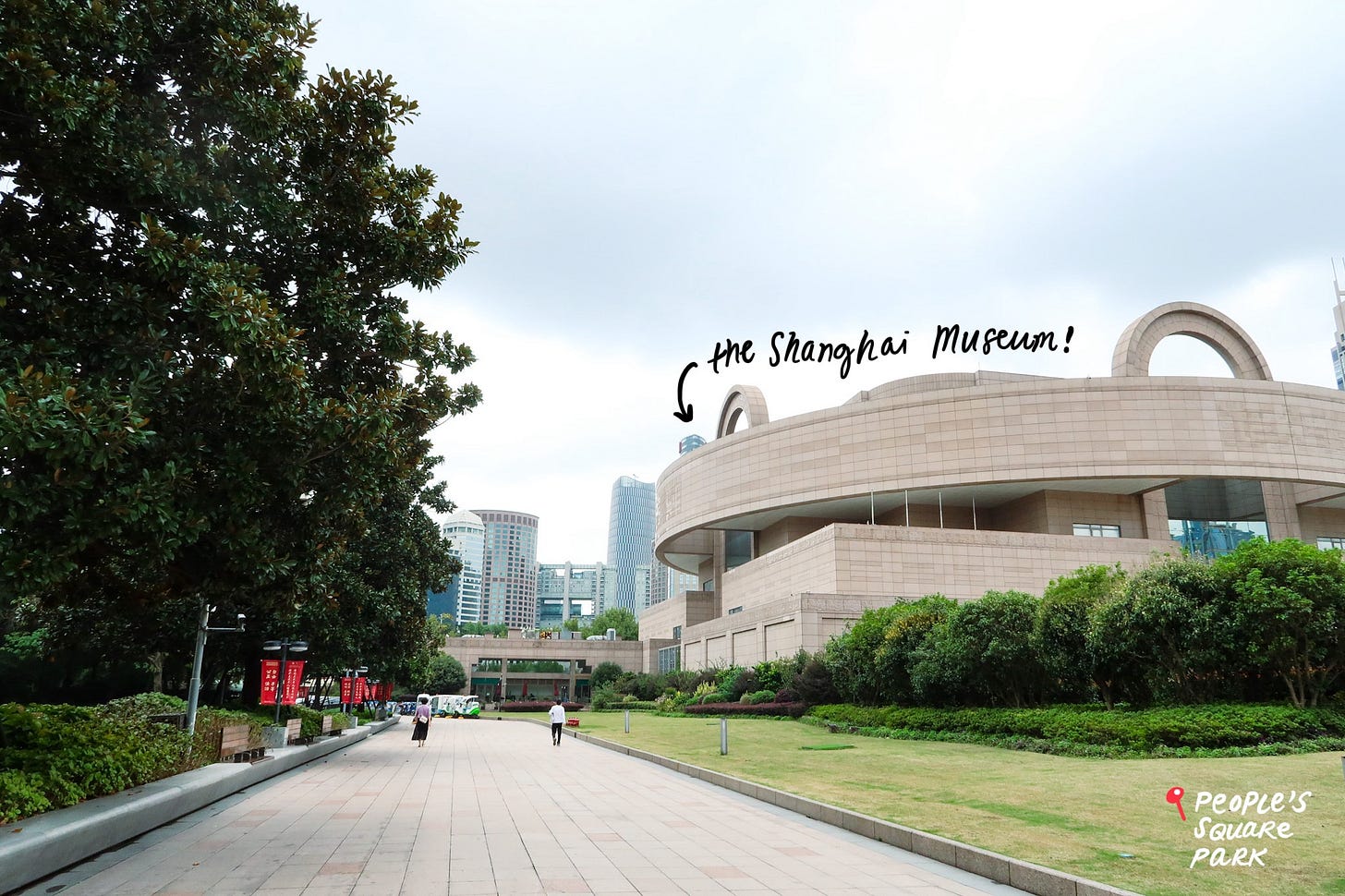
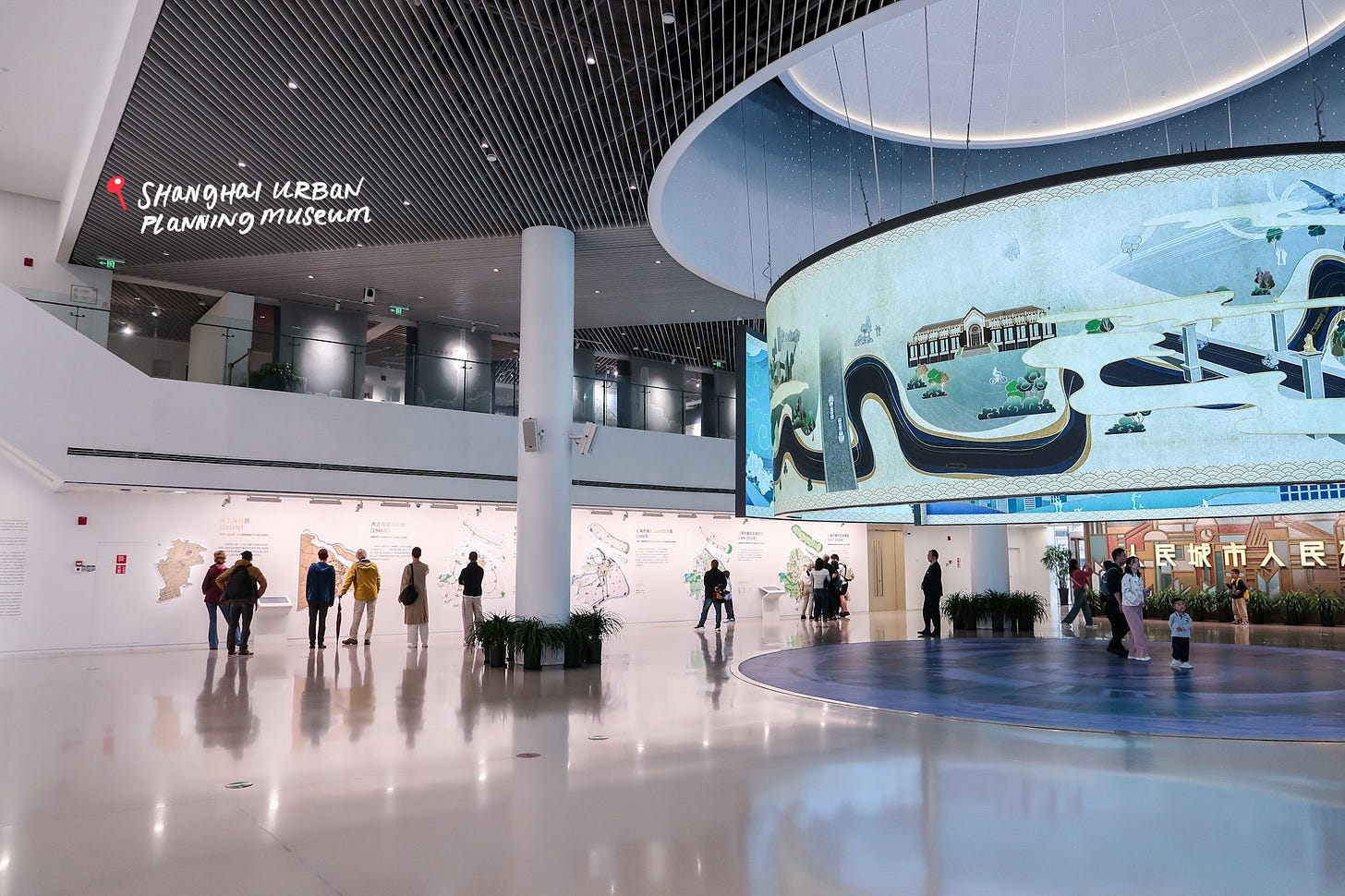
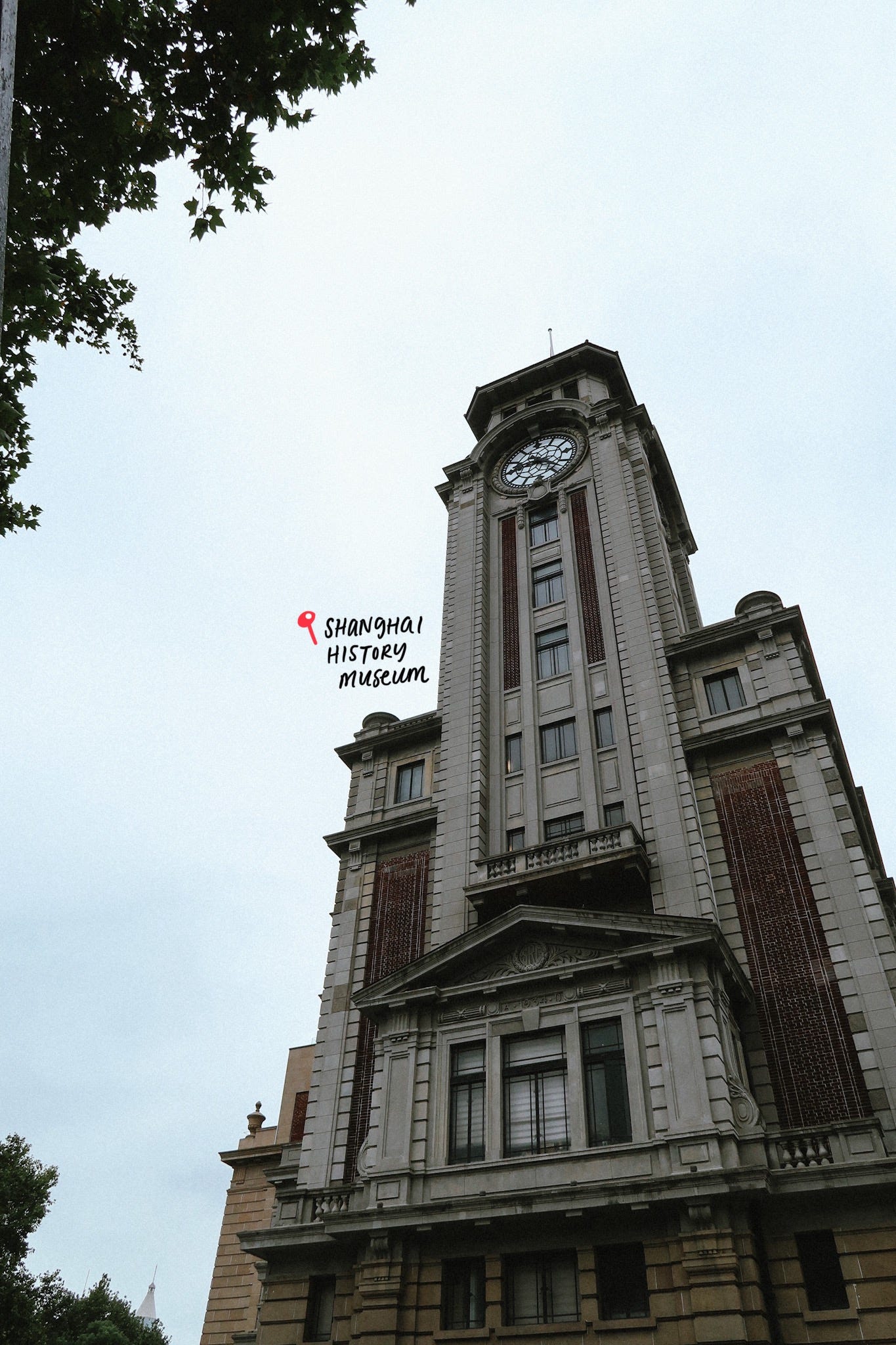
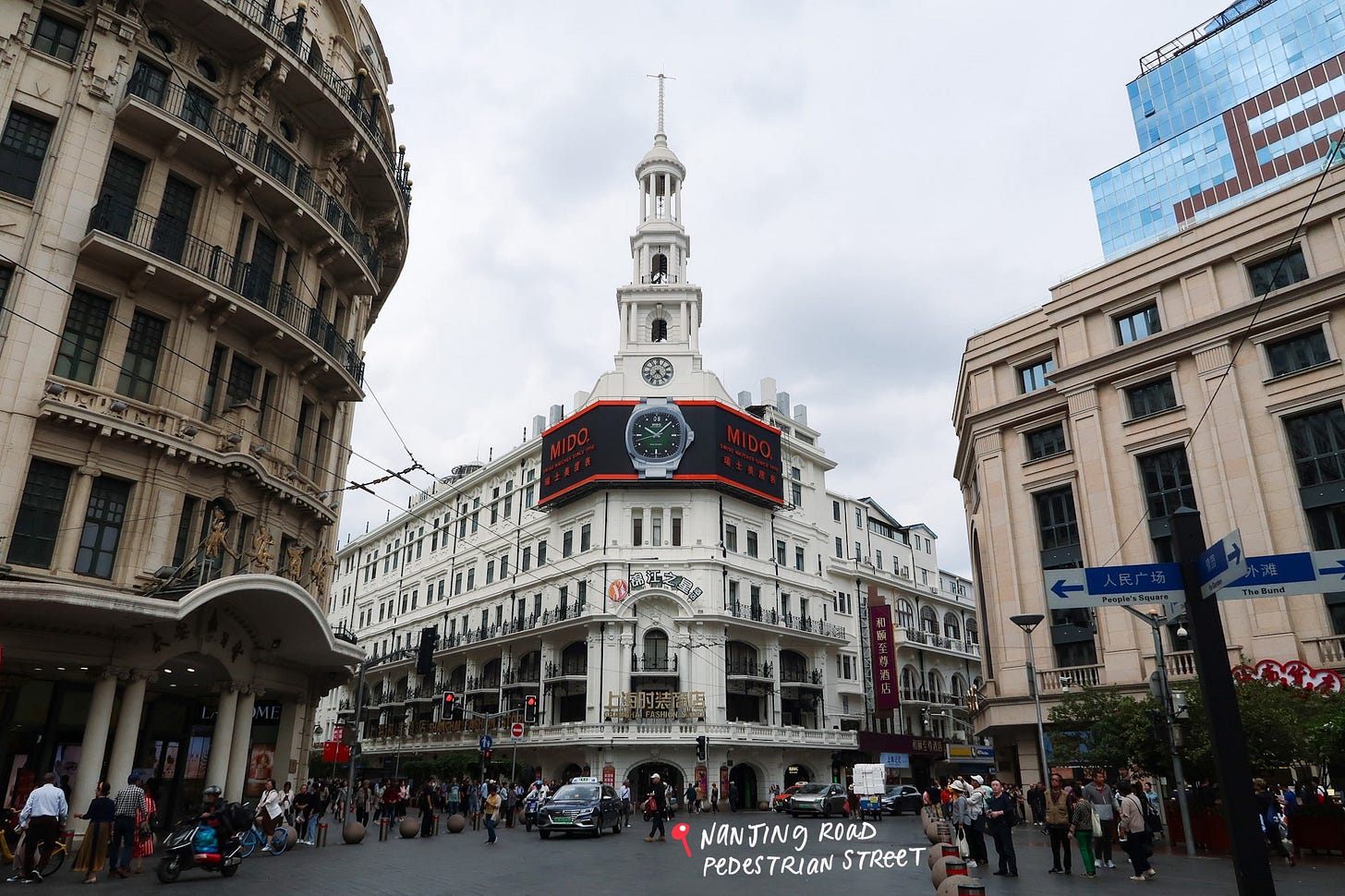
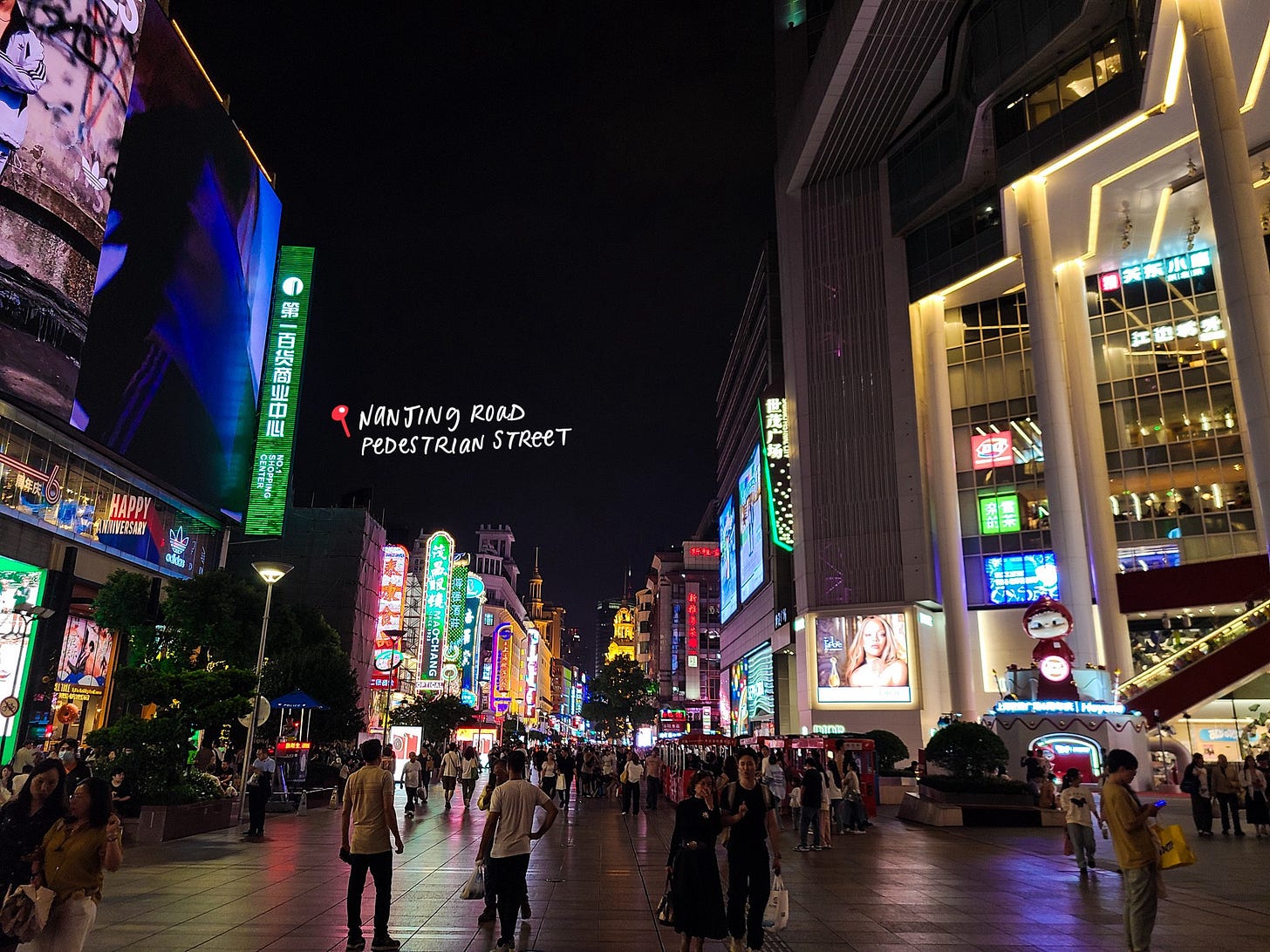
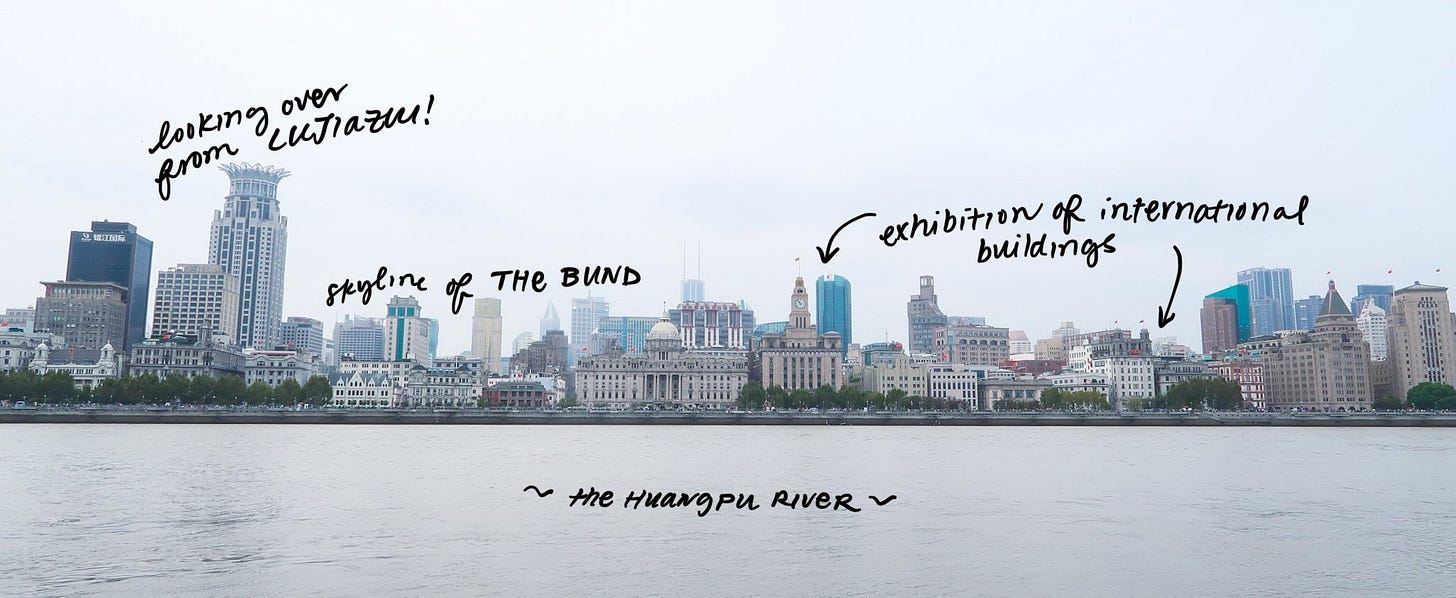
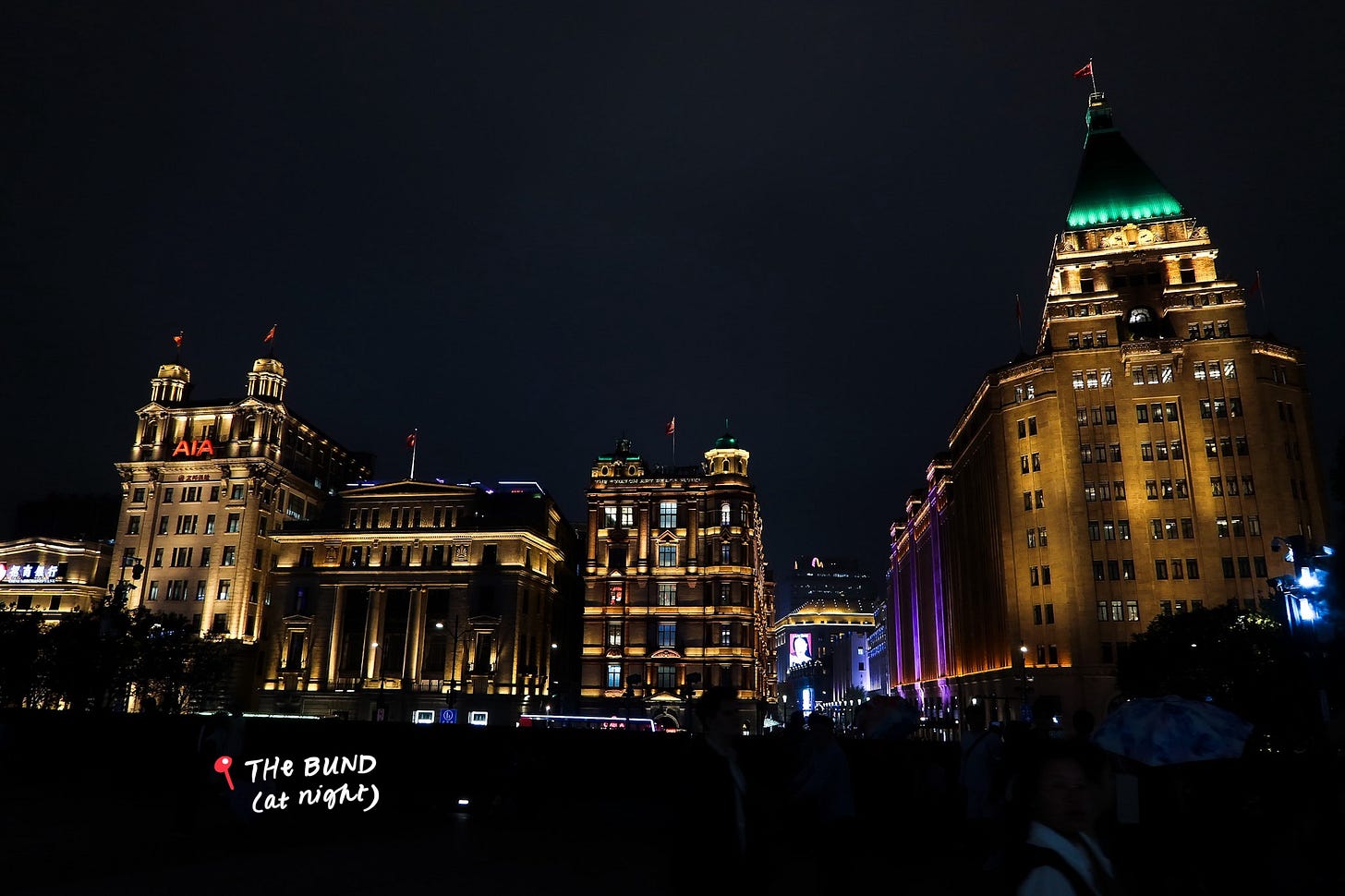
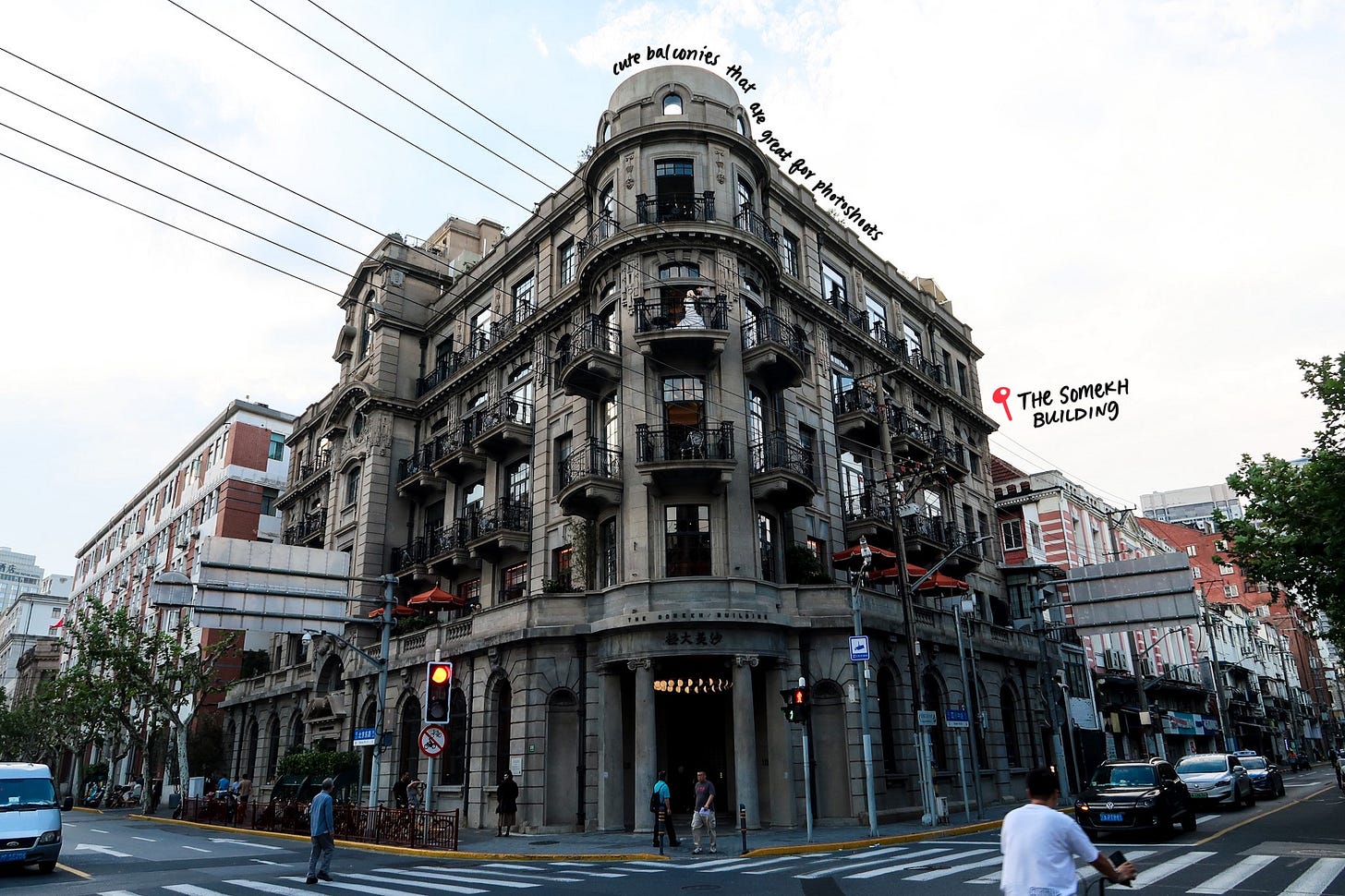
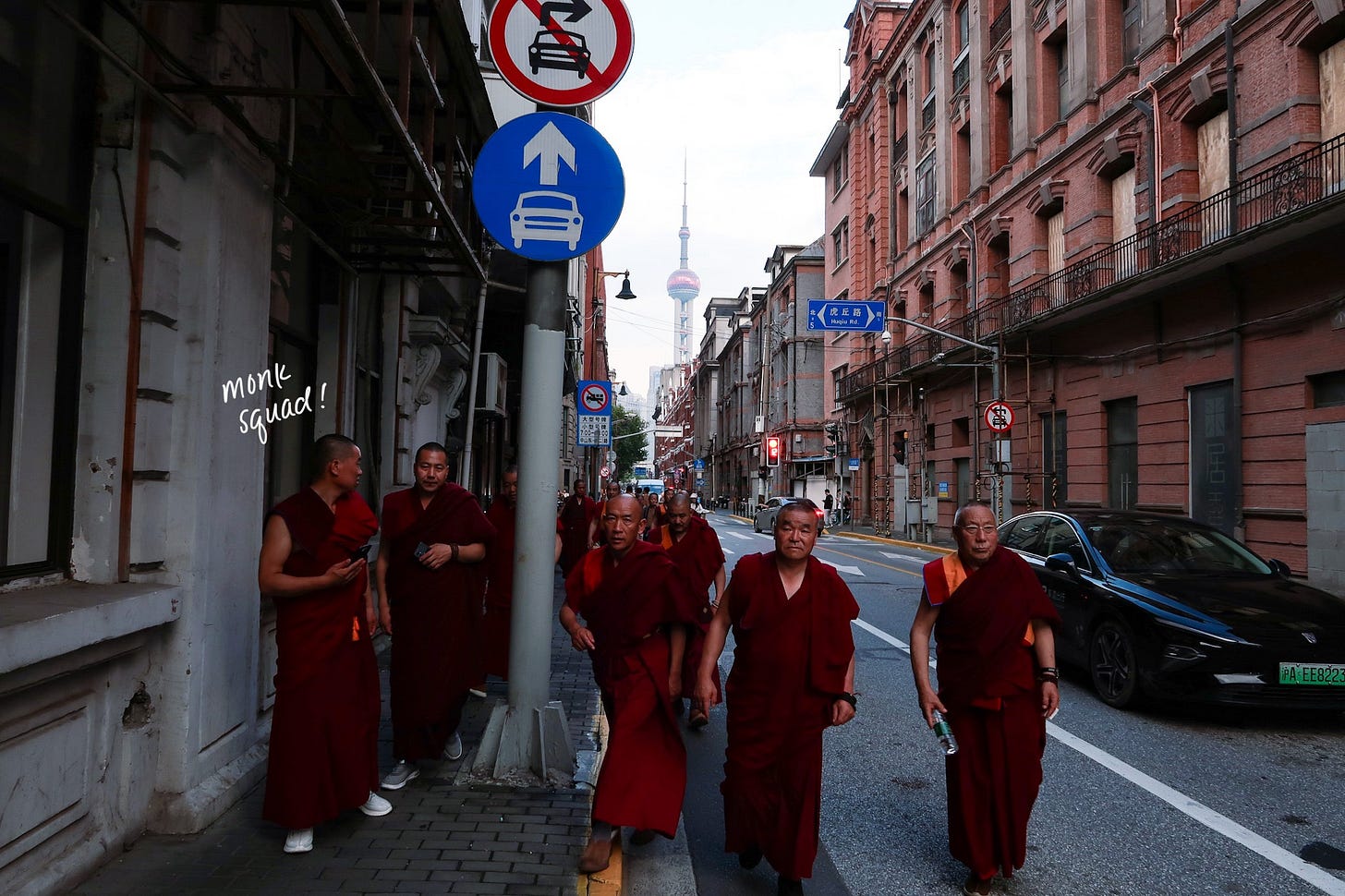
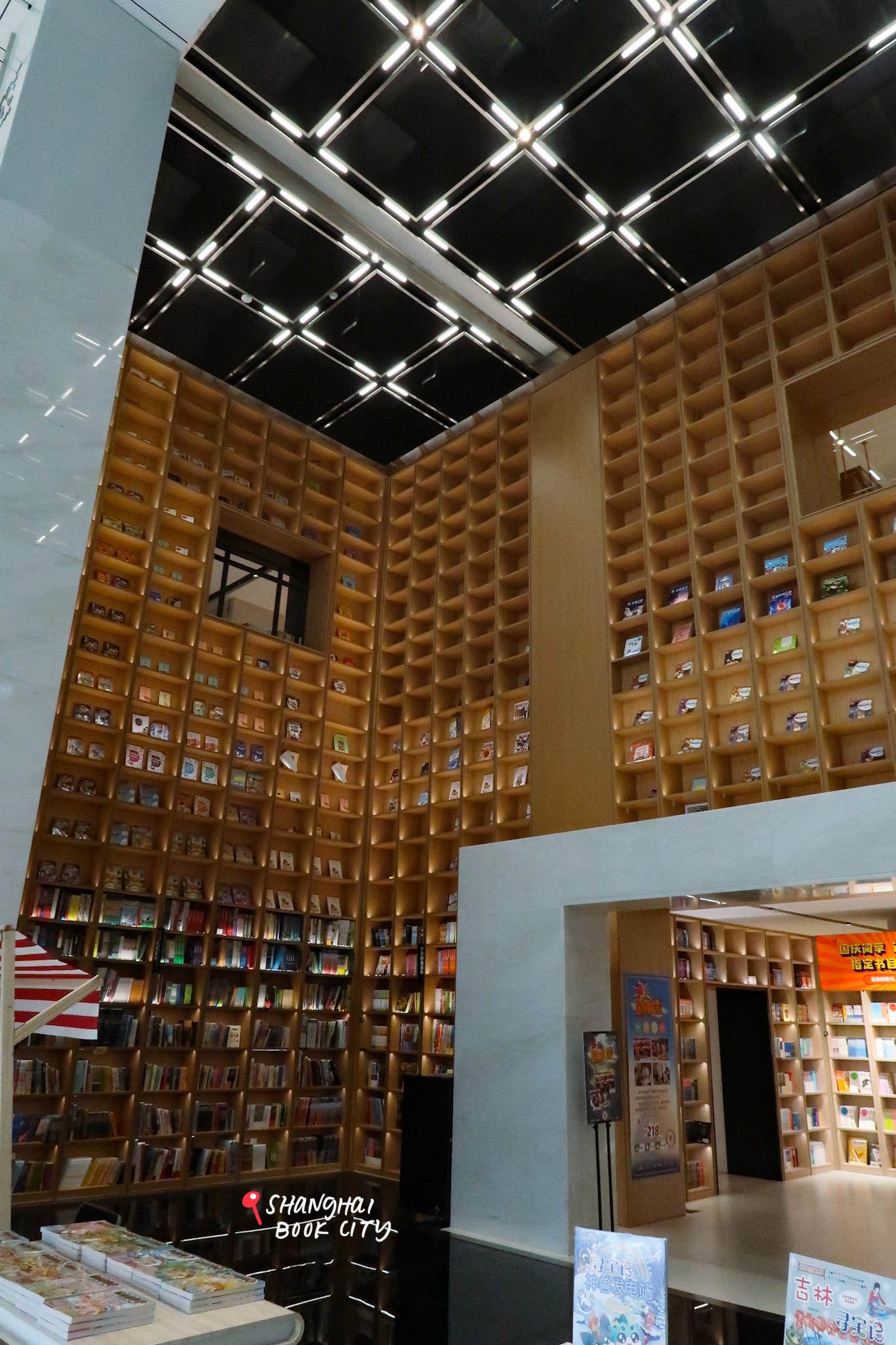
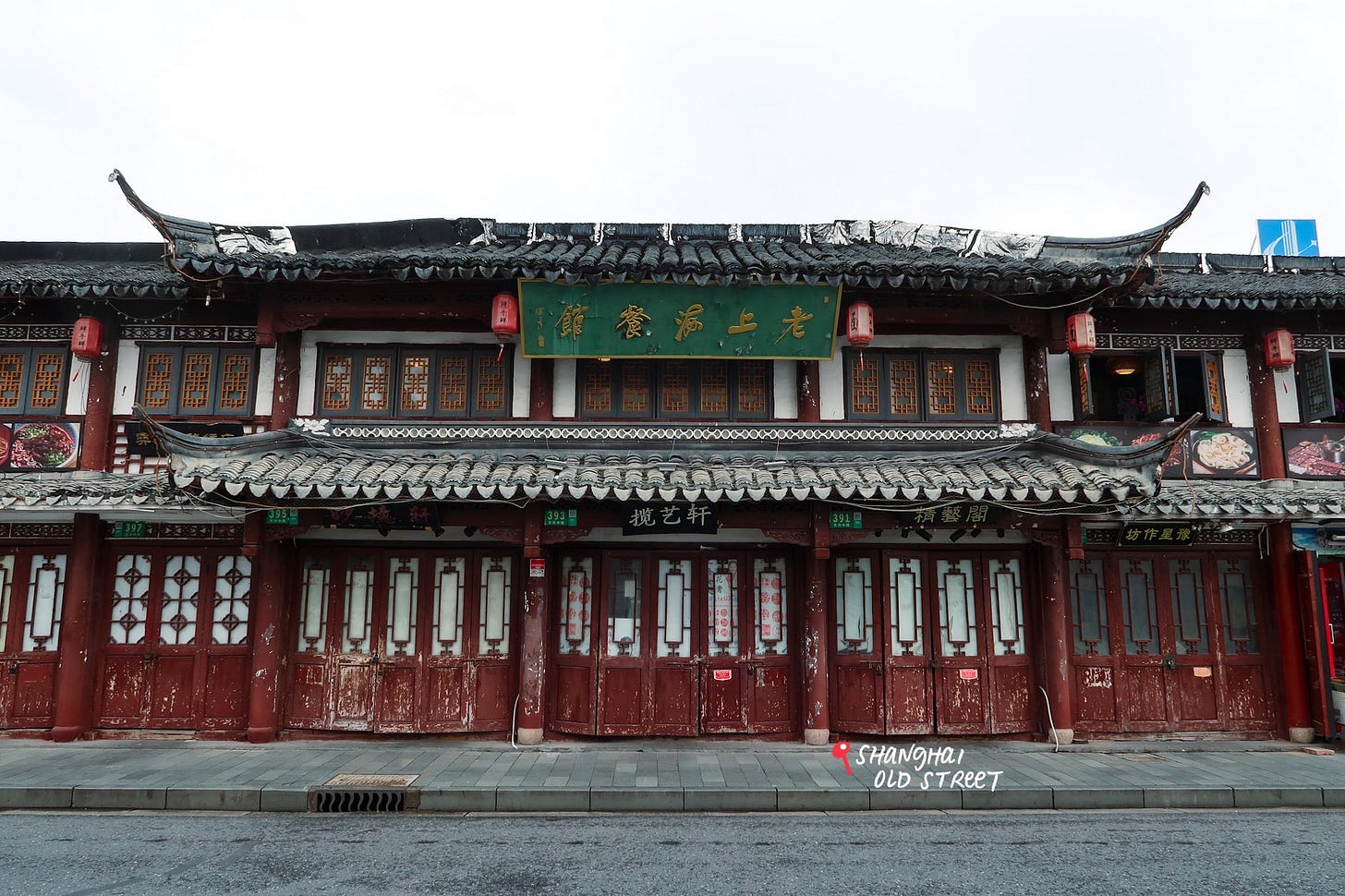
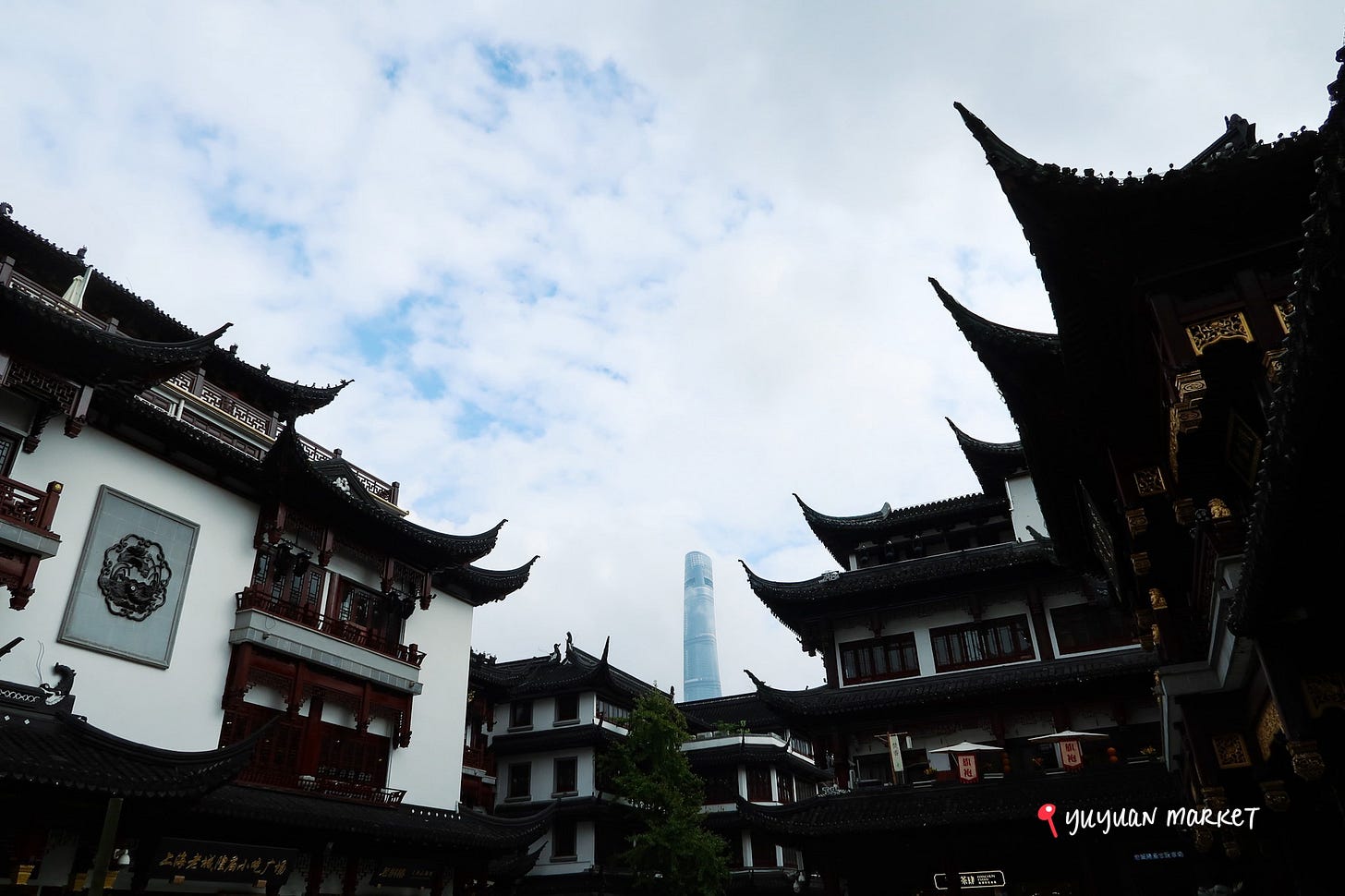
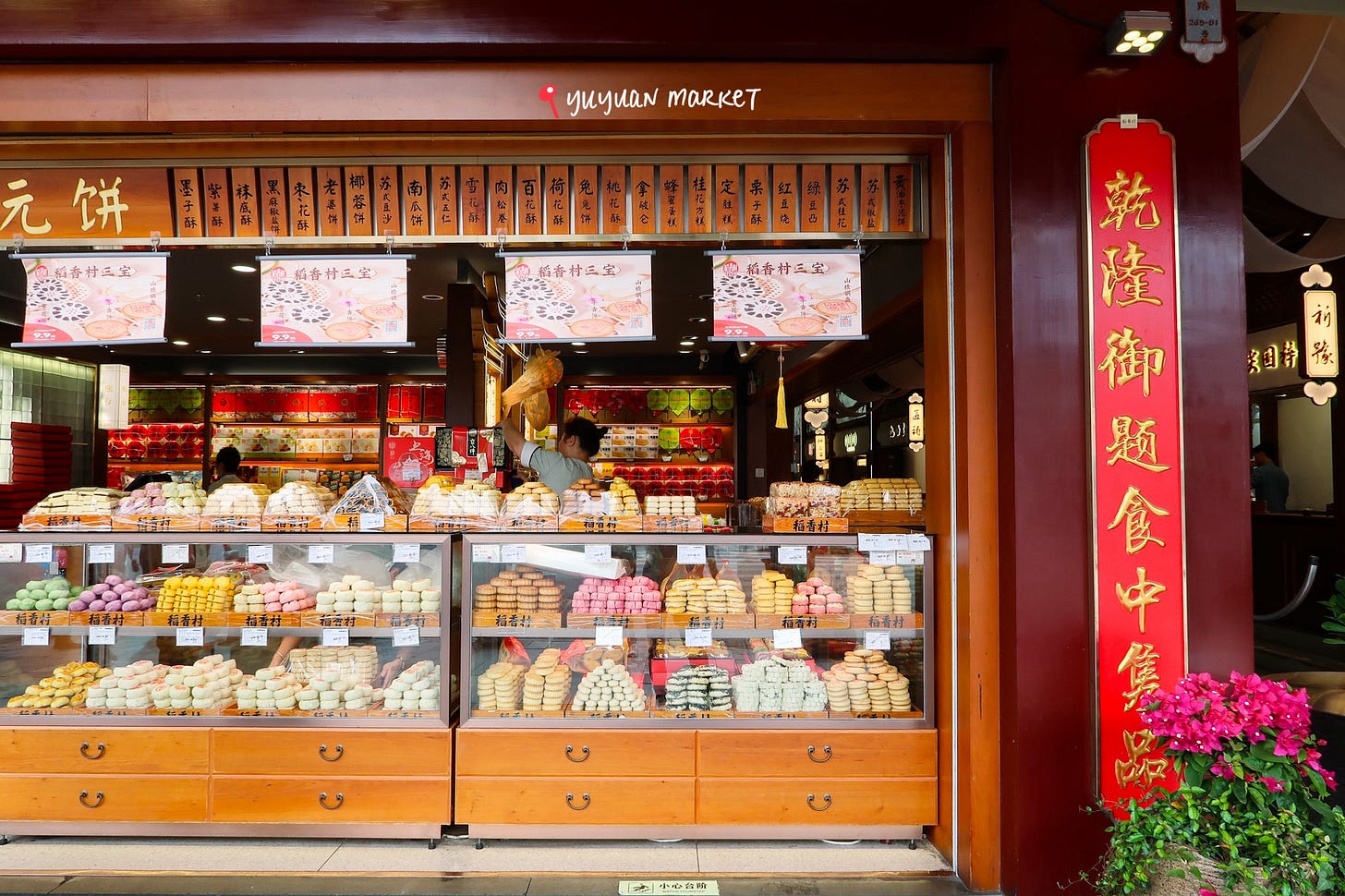

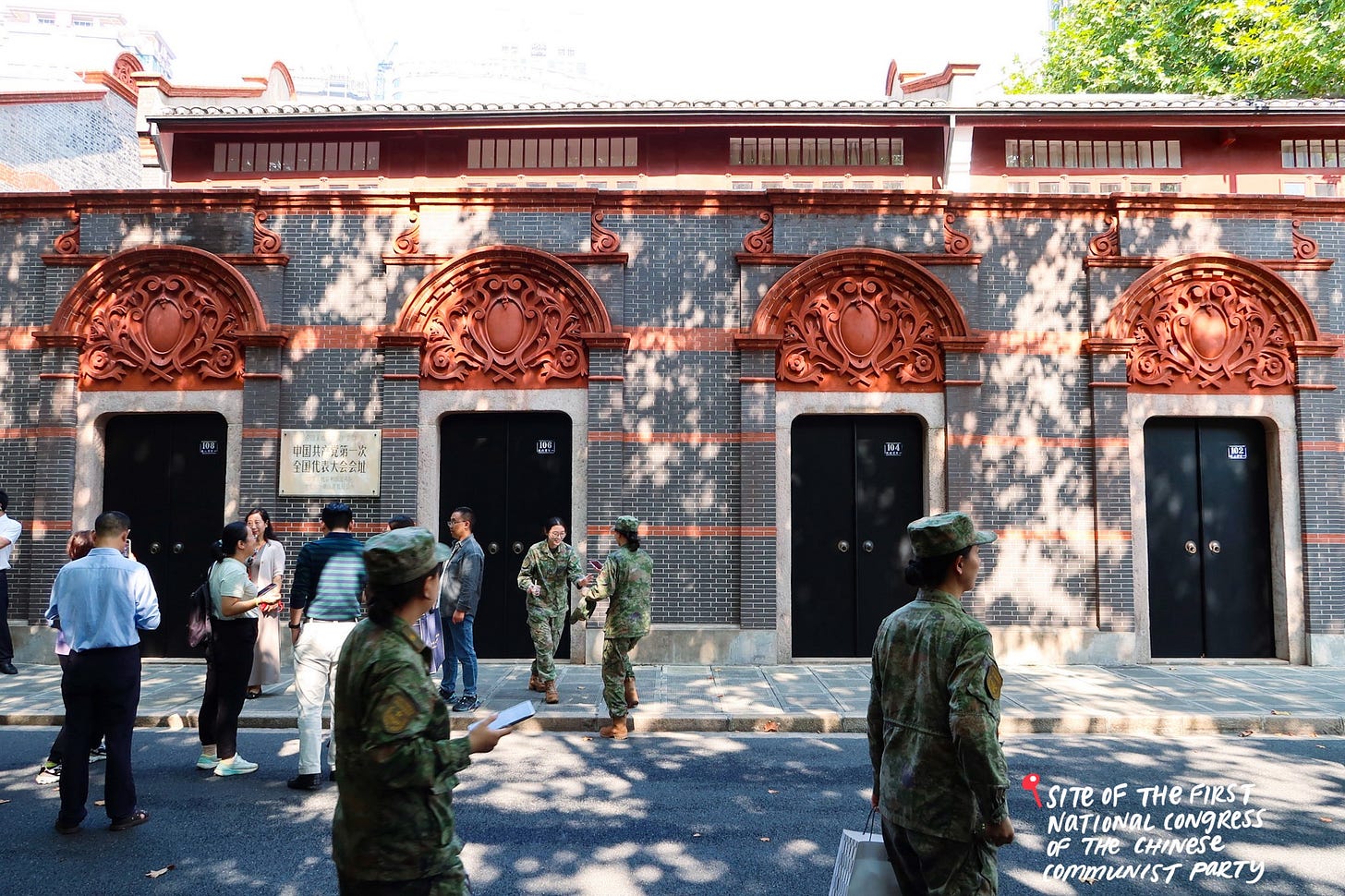
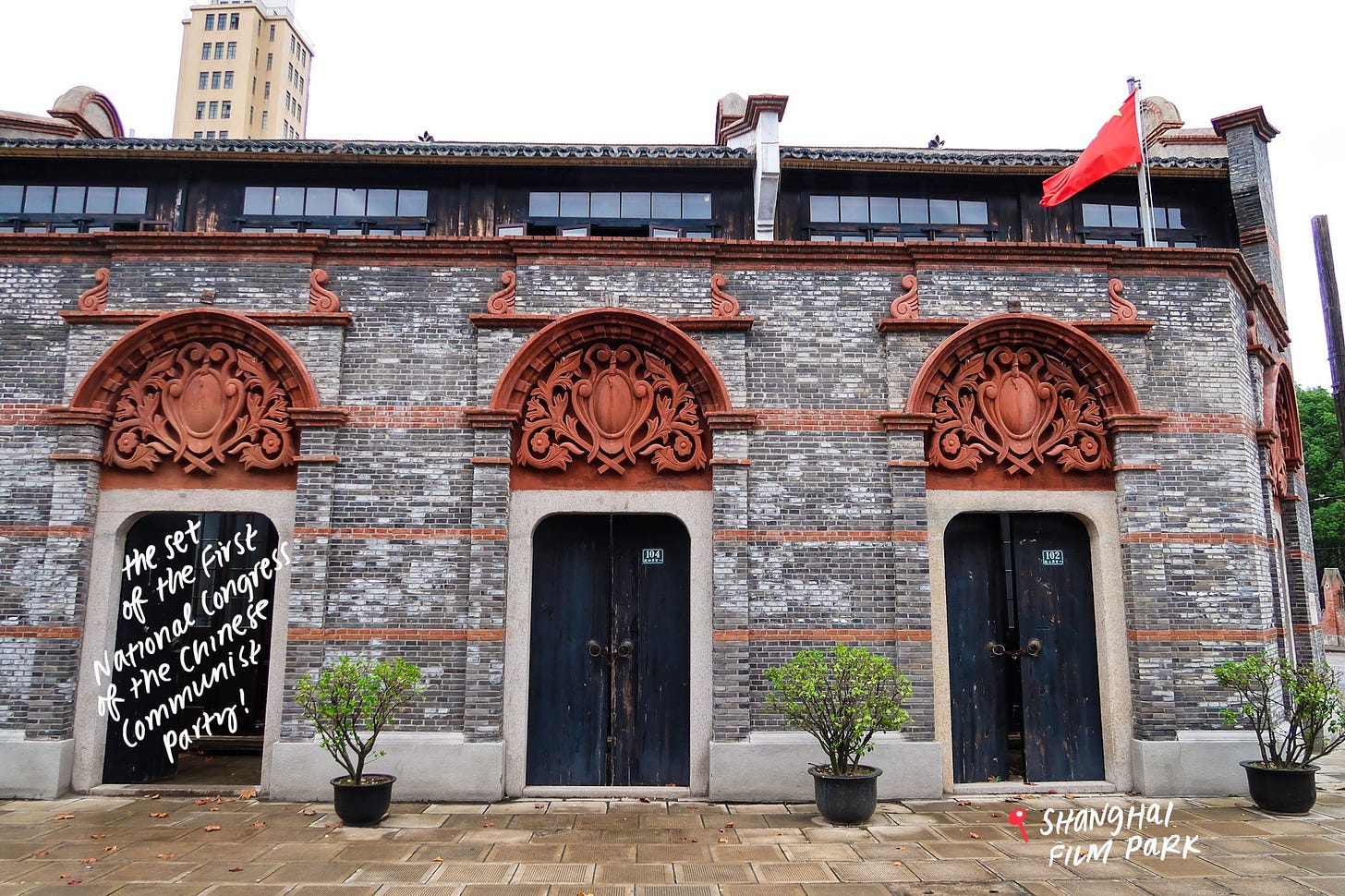
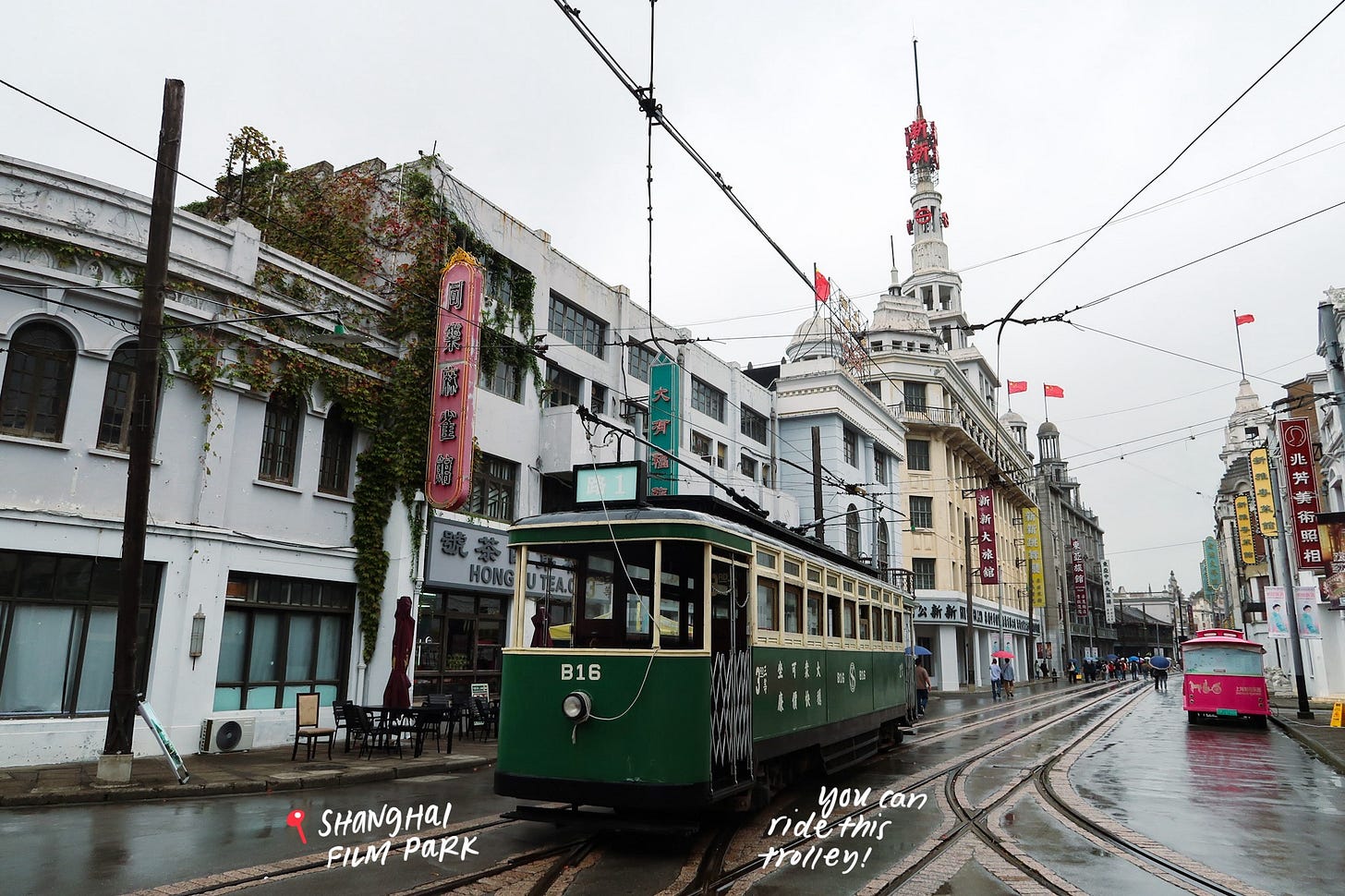
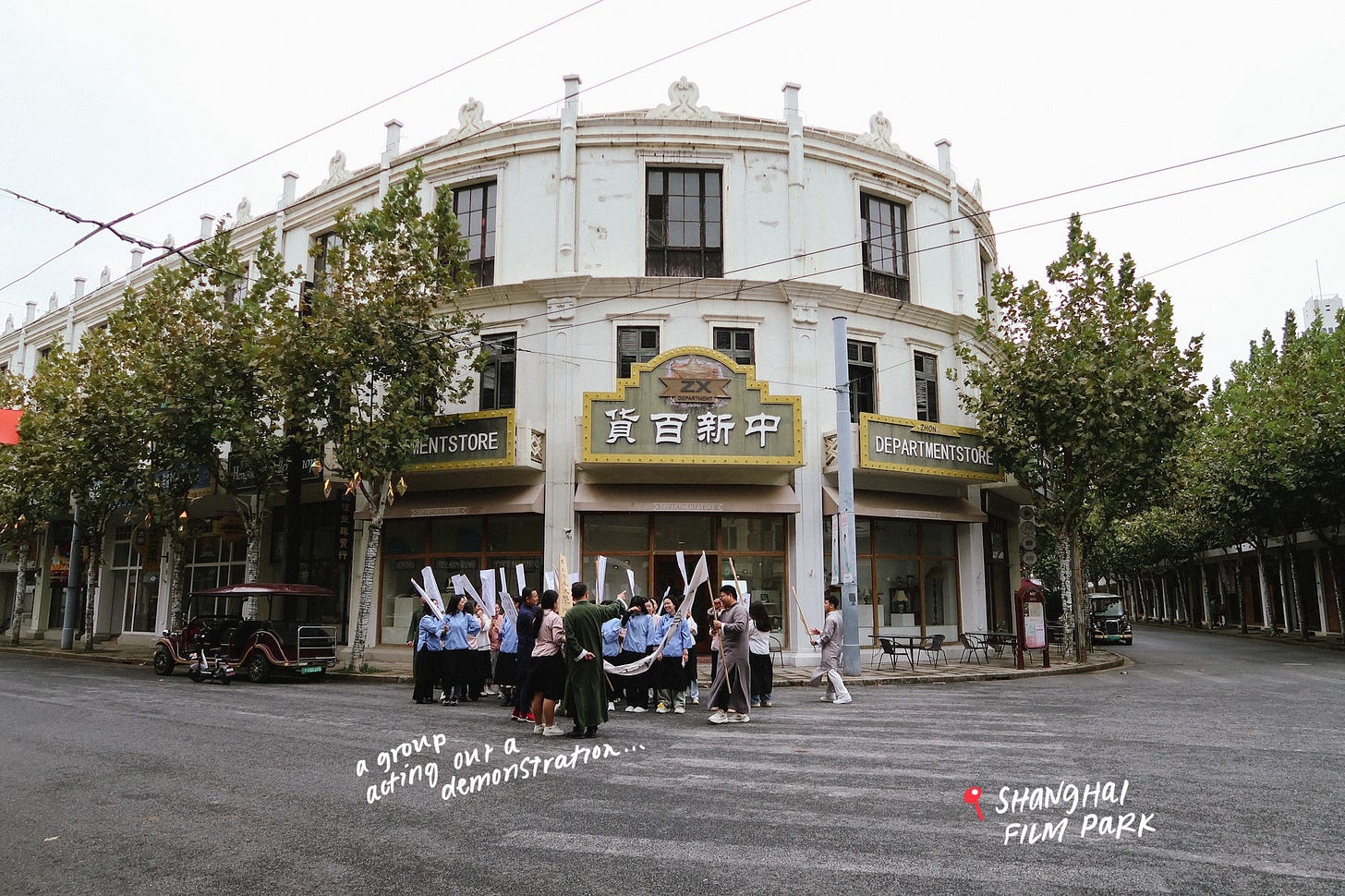
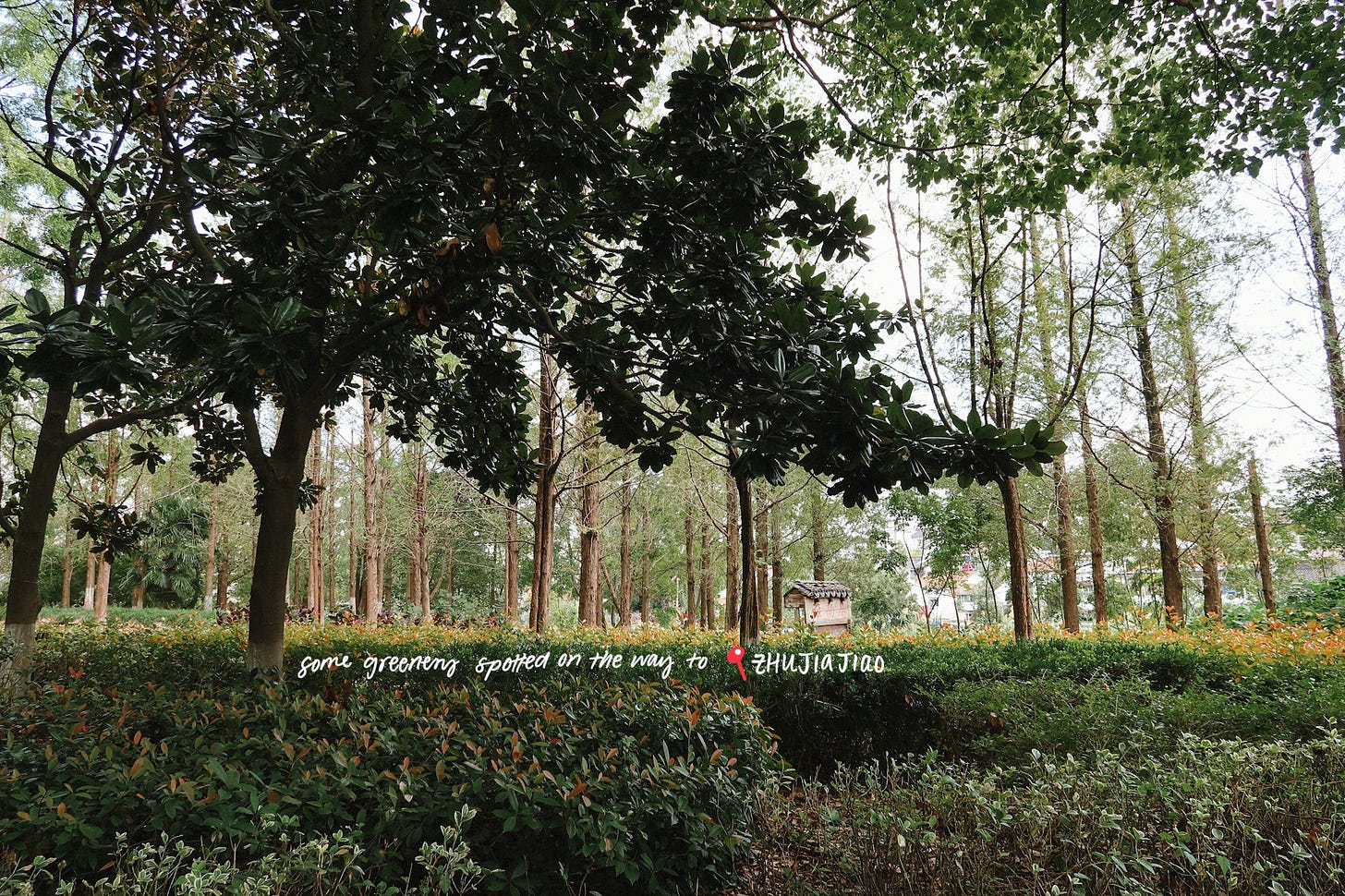
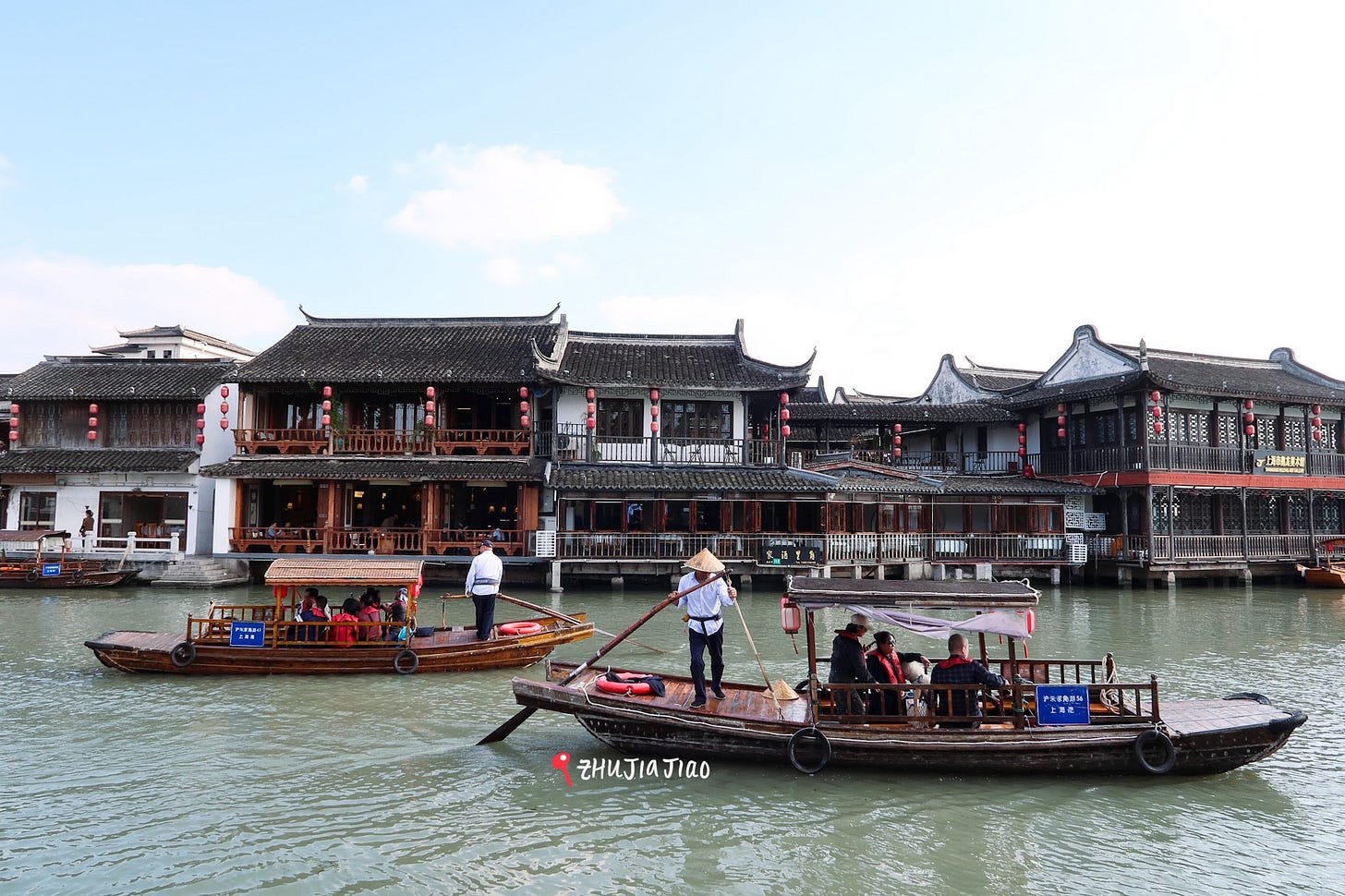
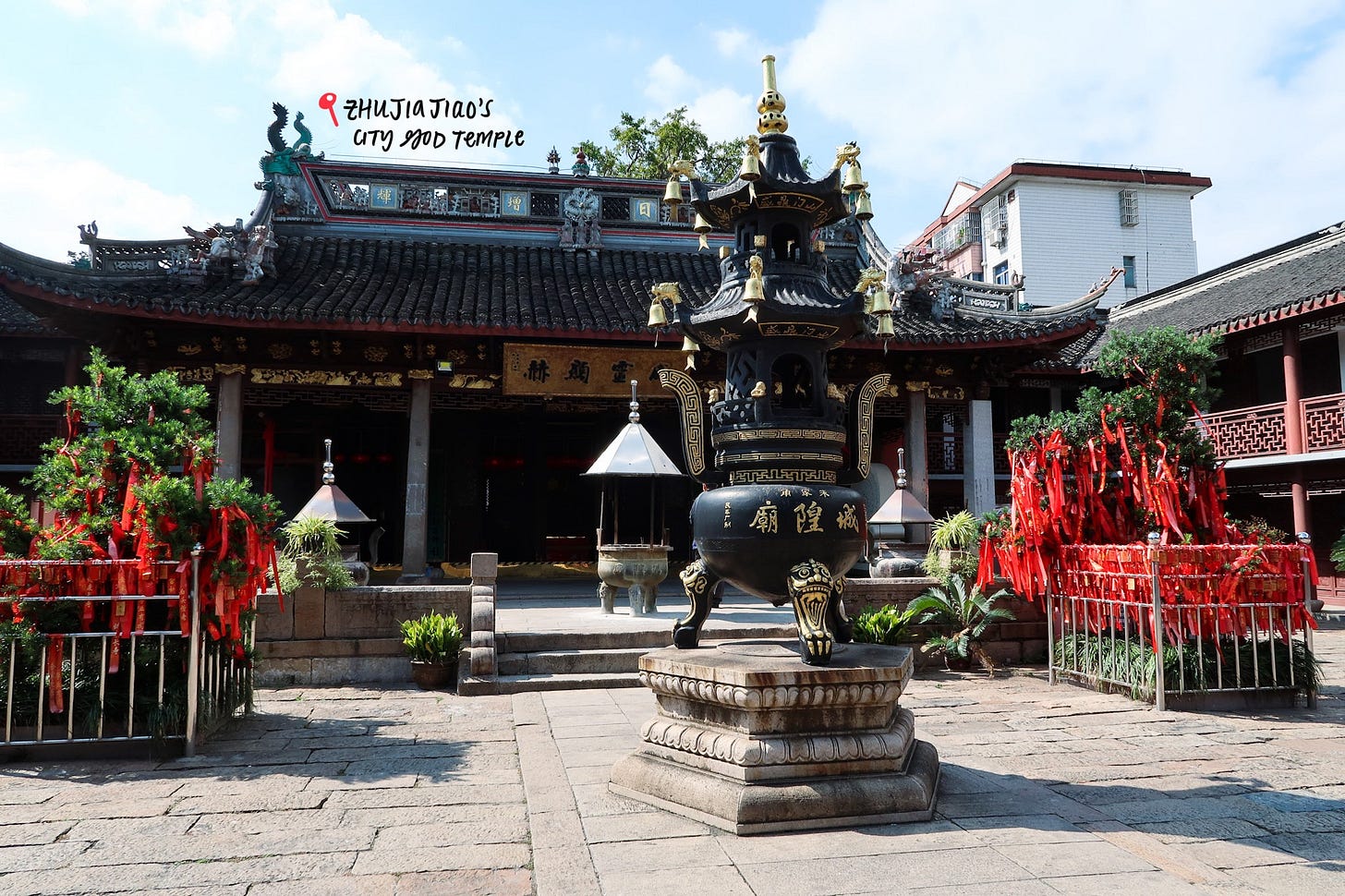

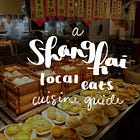


This is such a helpful guide!! I definitely would have to stop and pet all the stray kitties 🥰🥰 plus that guy in the white in those first few pics is a cutie 😉
This was such a relatable and helpful read, thank you for this thoughtful piece! I absolutely love: "Looking back, the Lord used every trip to Shanghai to chip away at my hardened heart, allowing me to fall in love with parts of me that I didn’t know needed a little more love." There's something to be said about our relationships to the most significant cities/towns in our lives, changing their shape as we warm up towards ourselves. Not to mention, it's so detail packed and has everything anyone needs to know when visiting Shanghai! Just stunning!